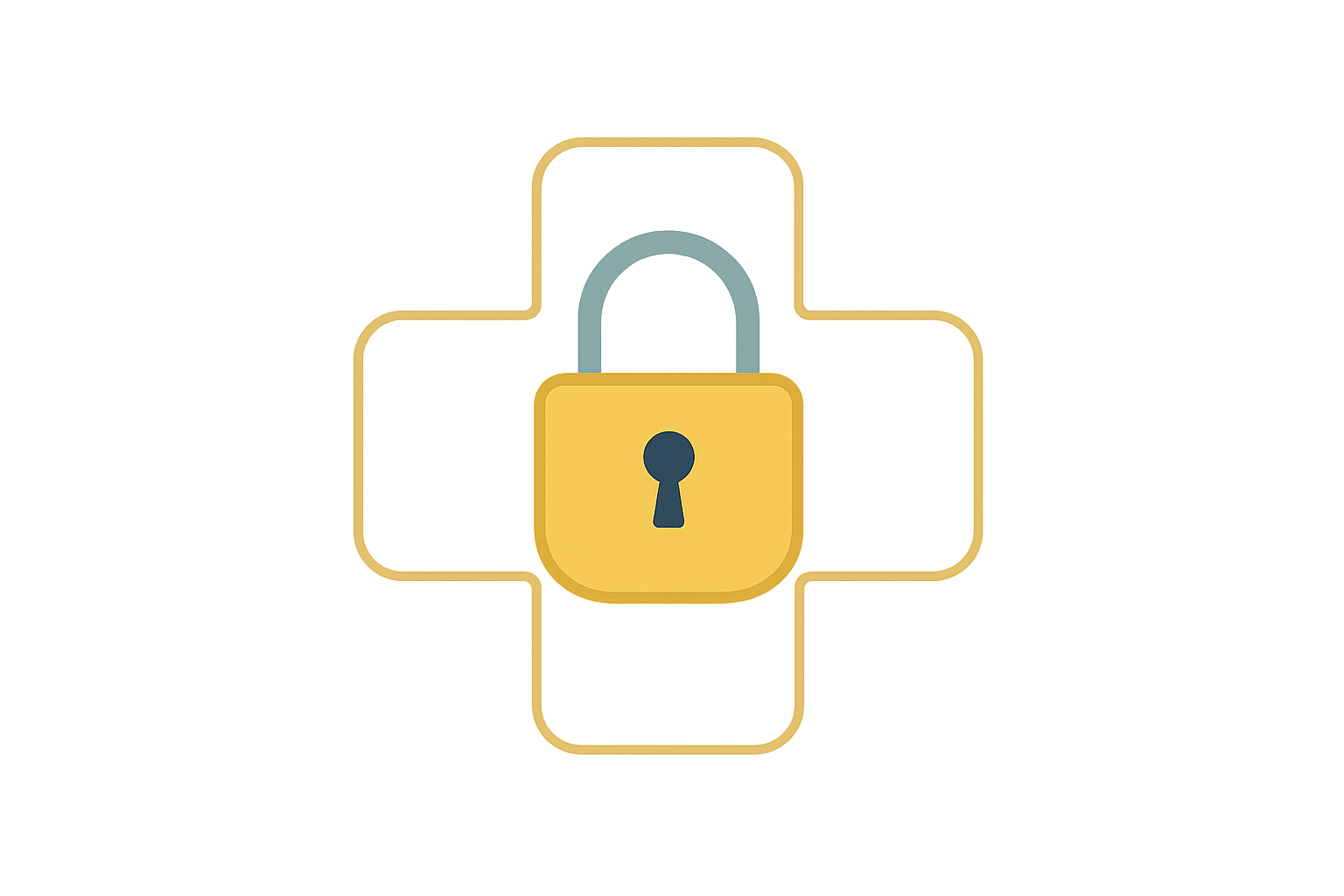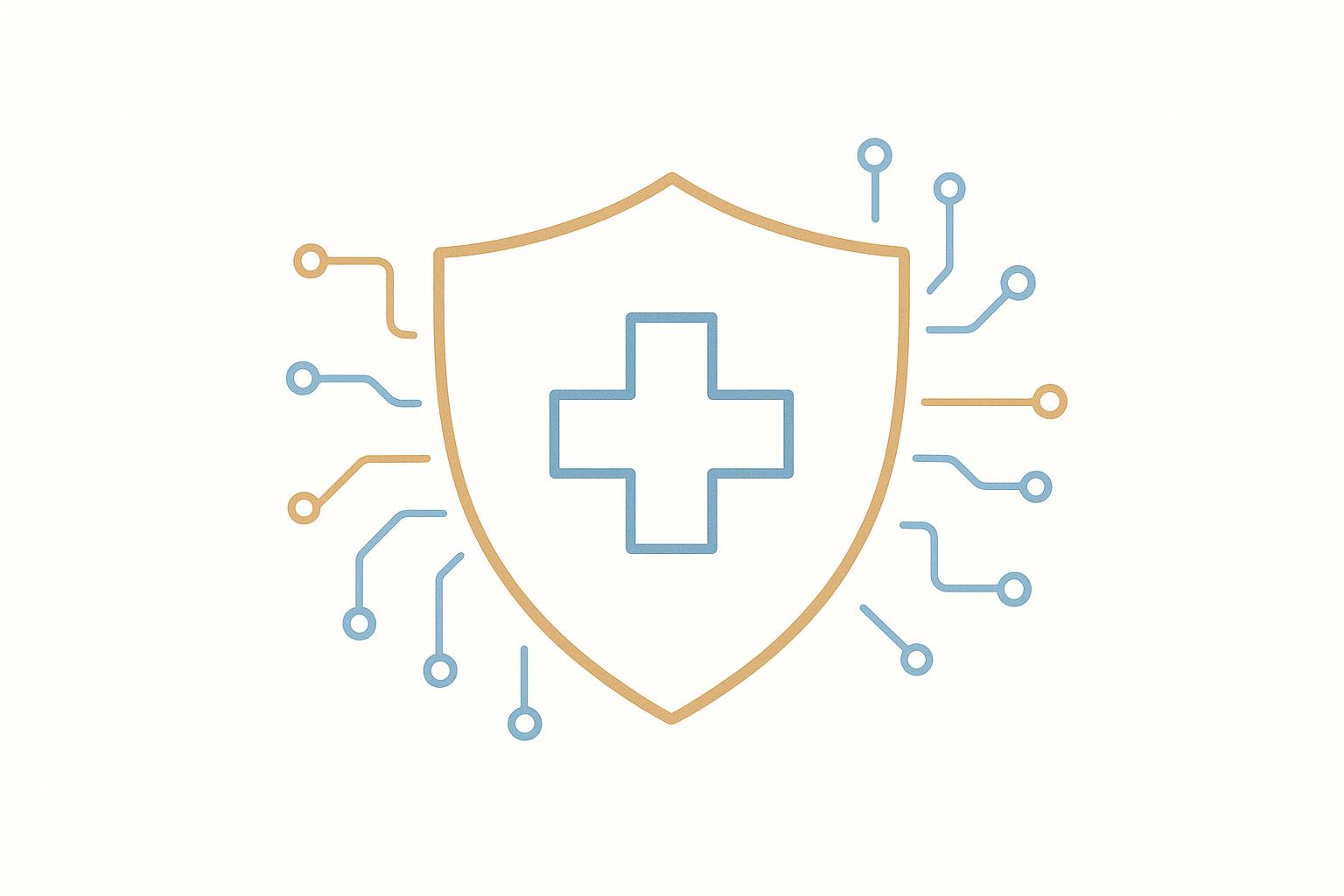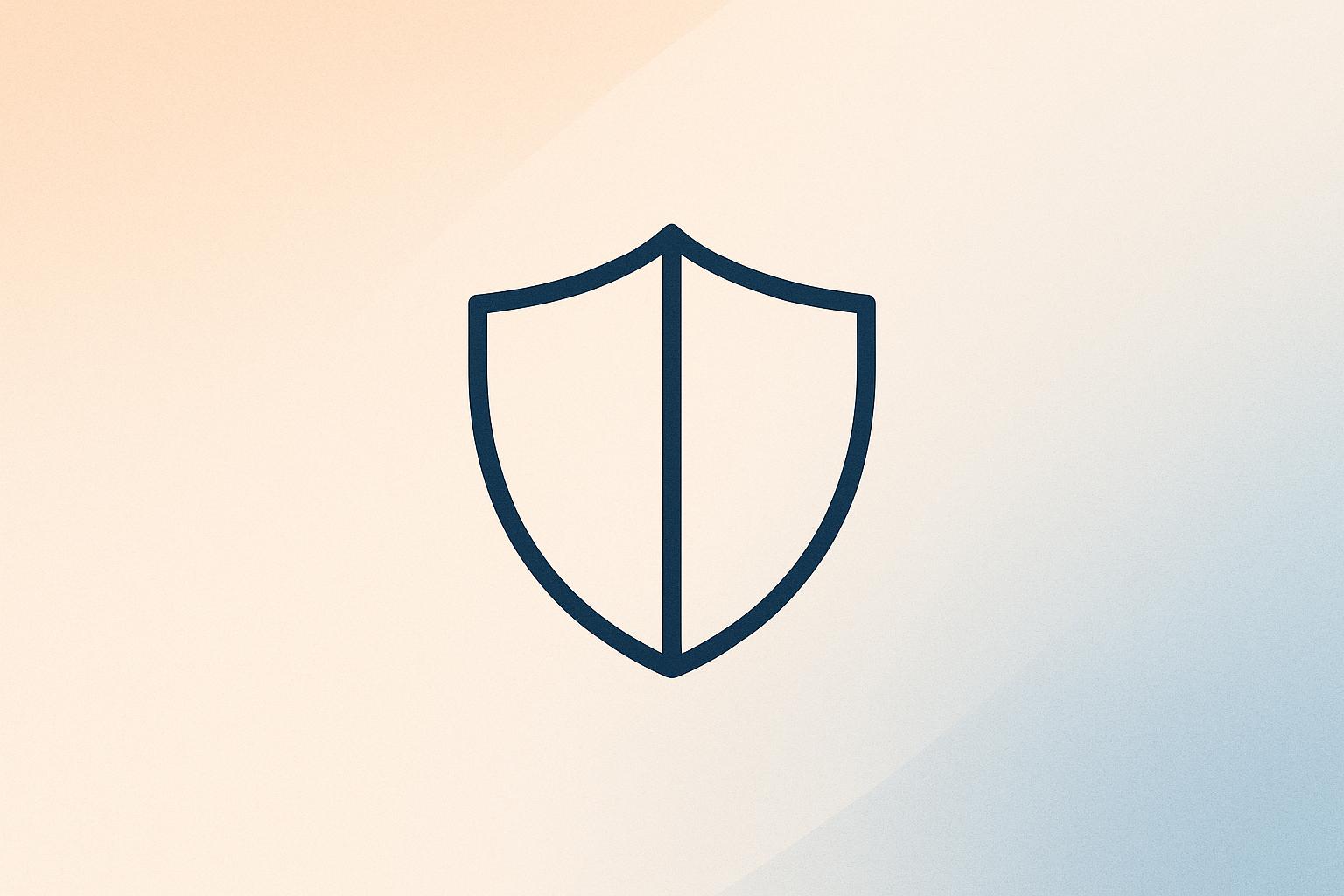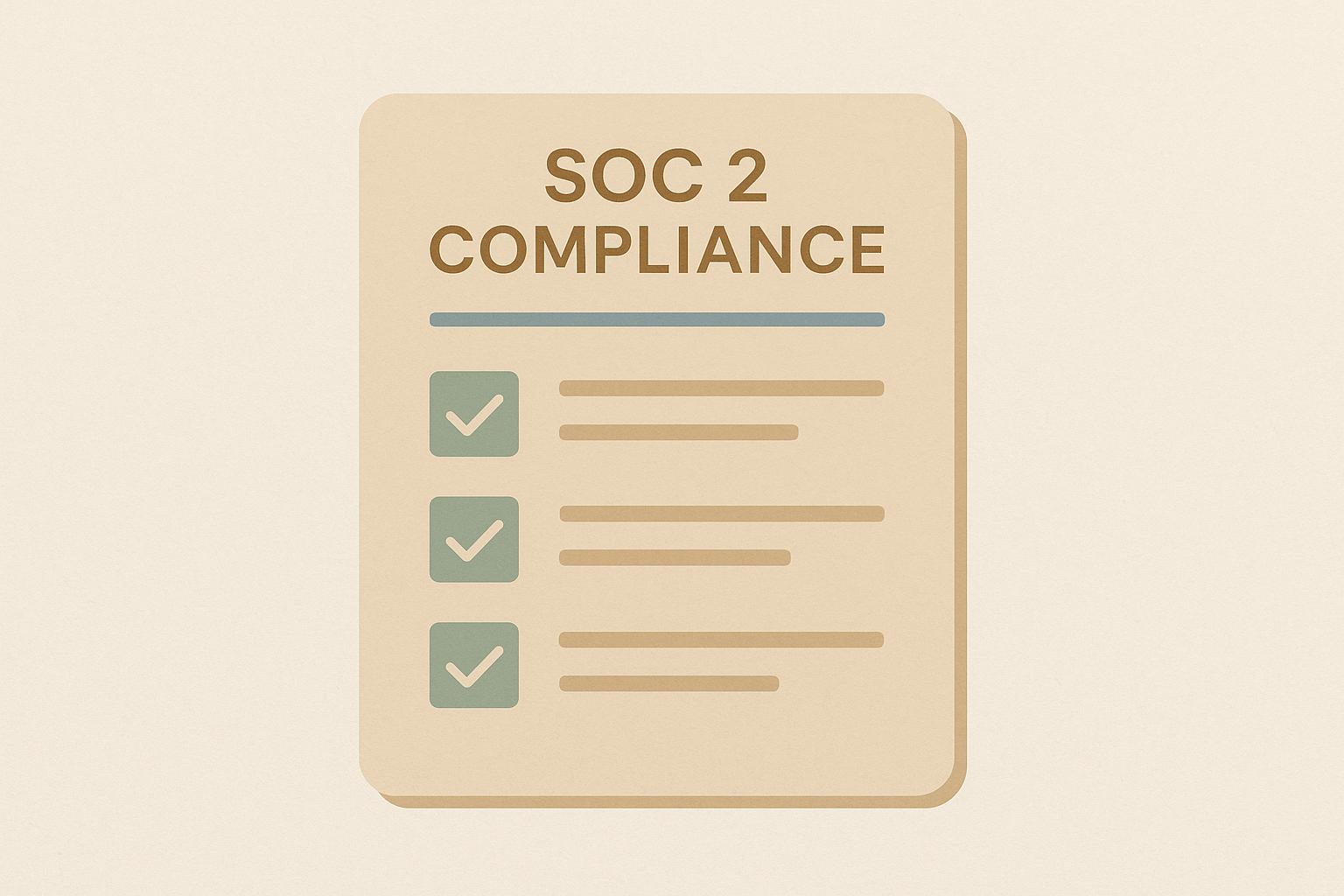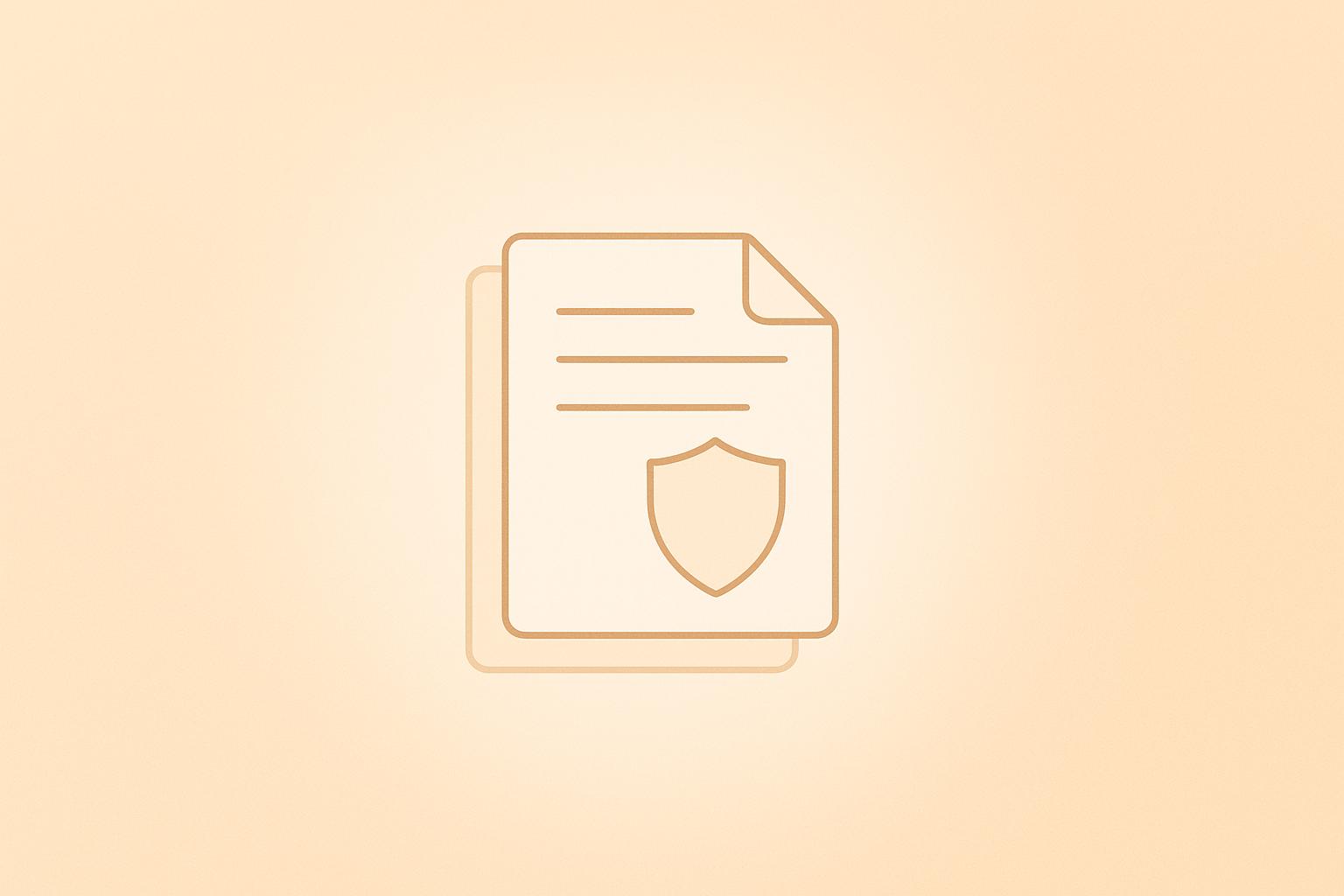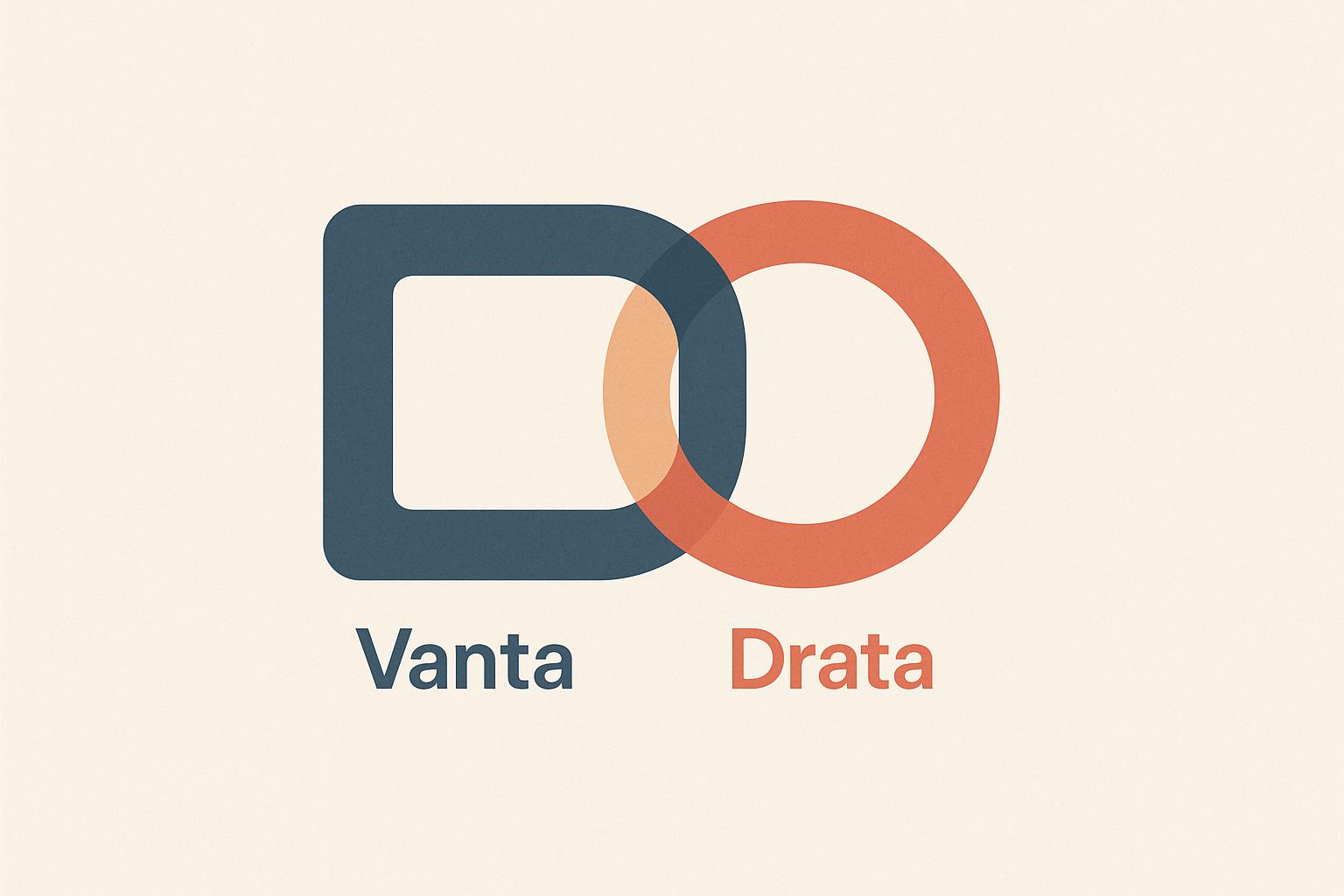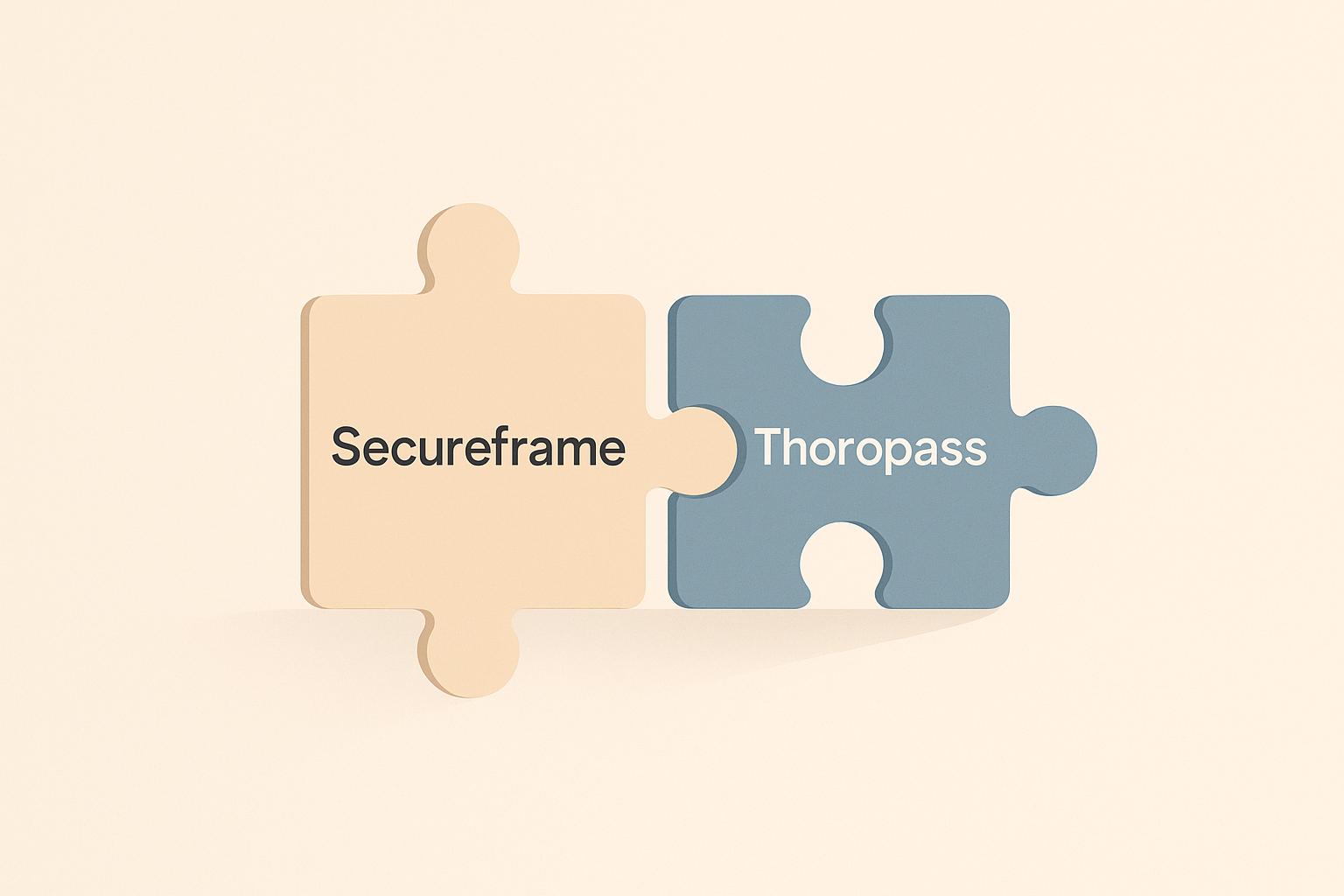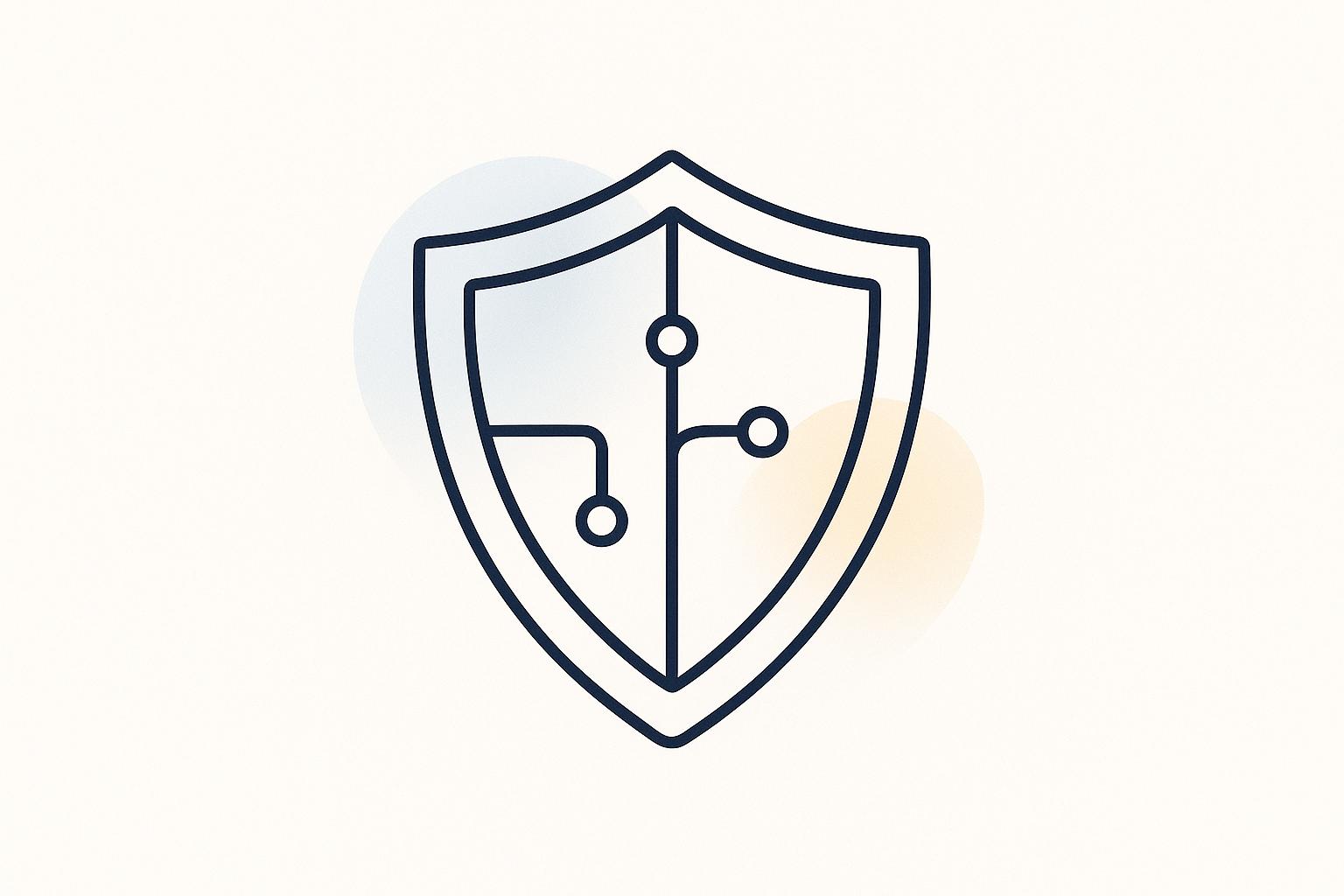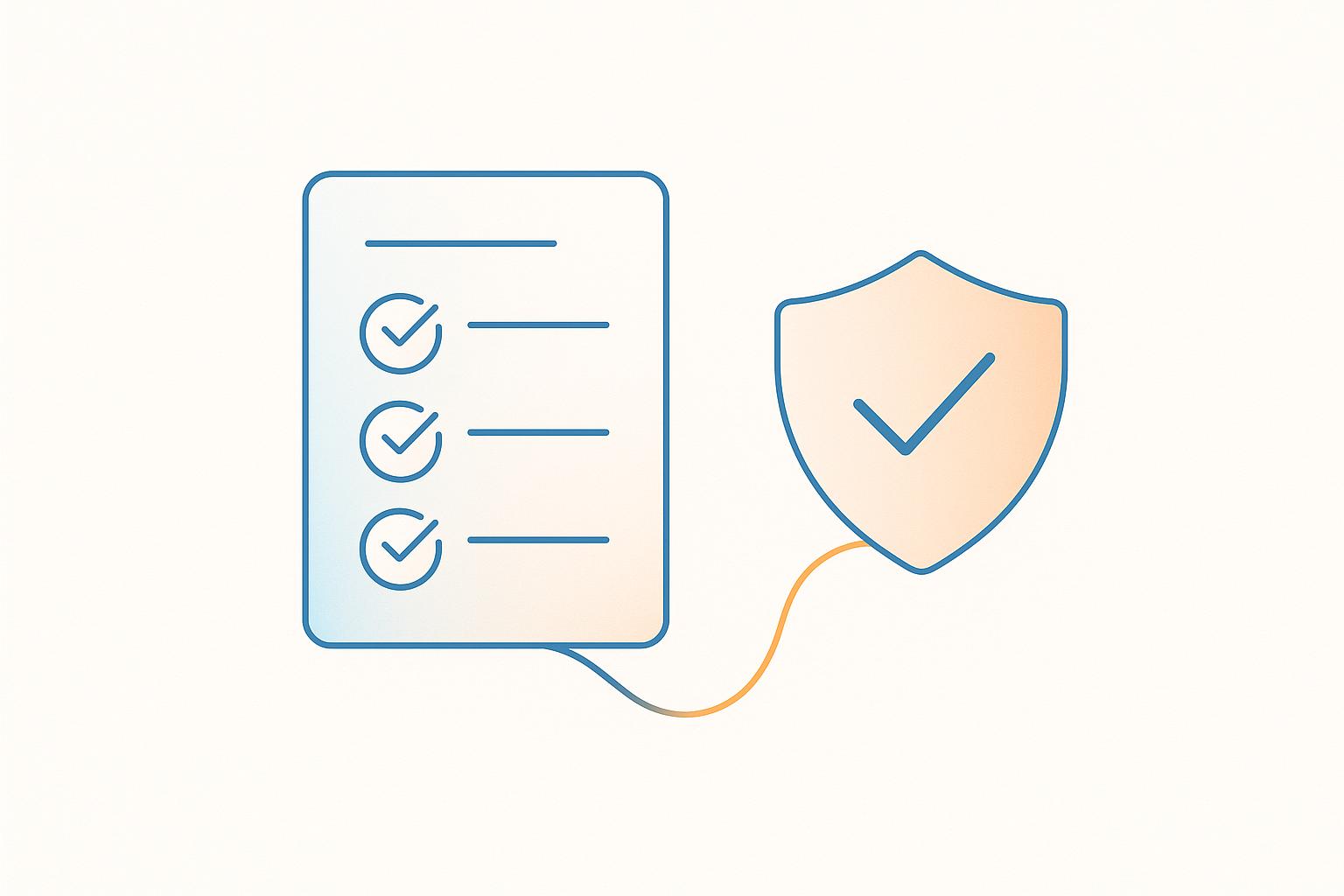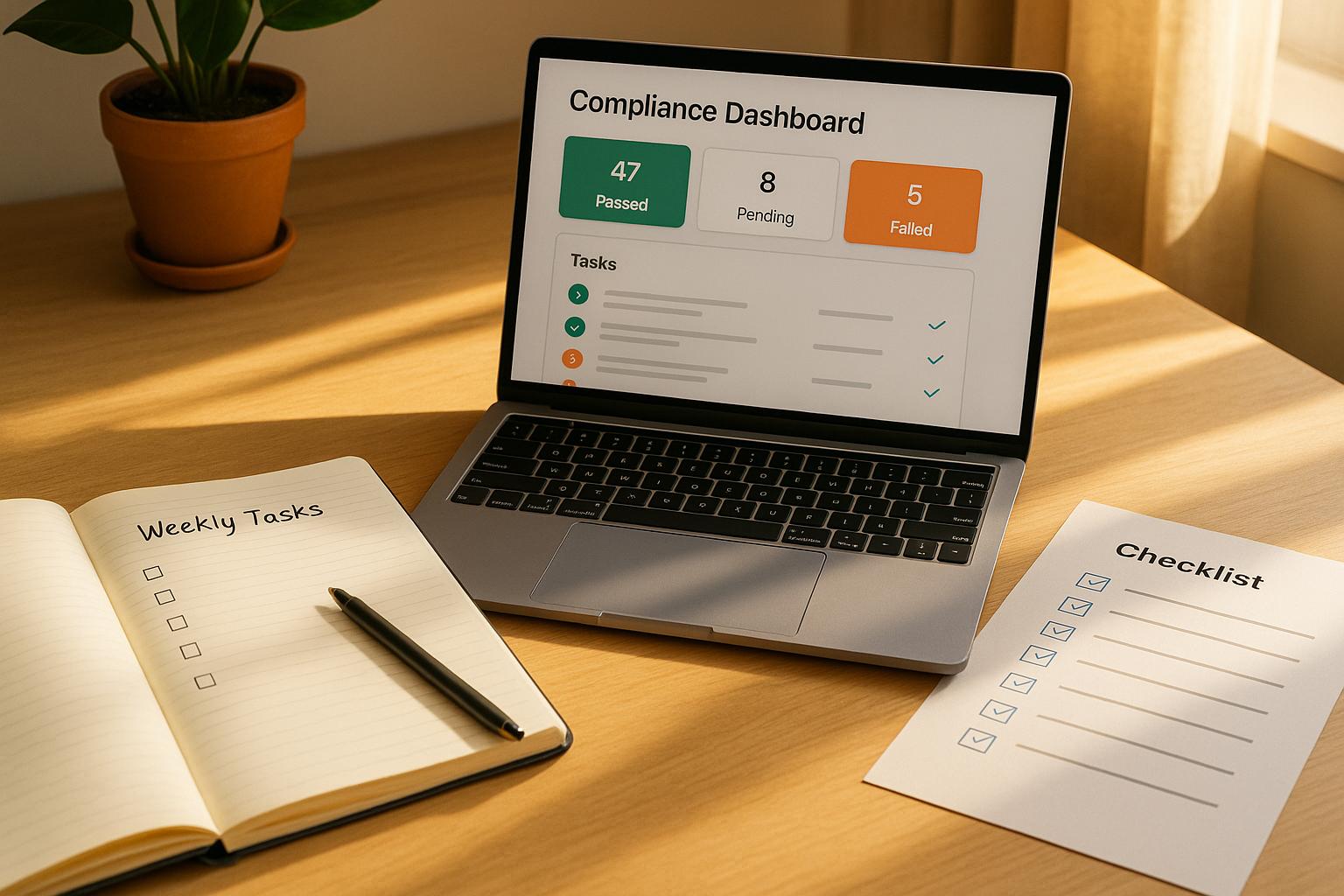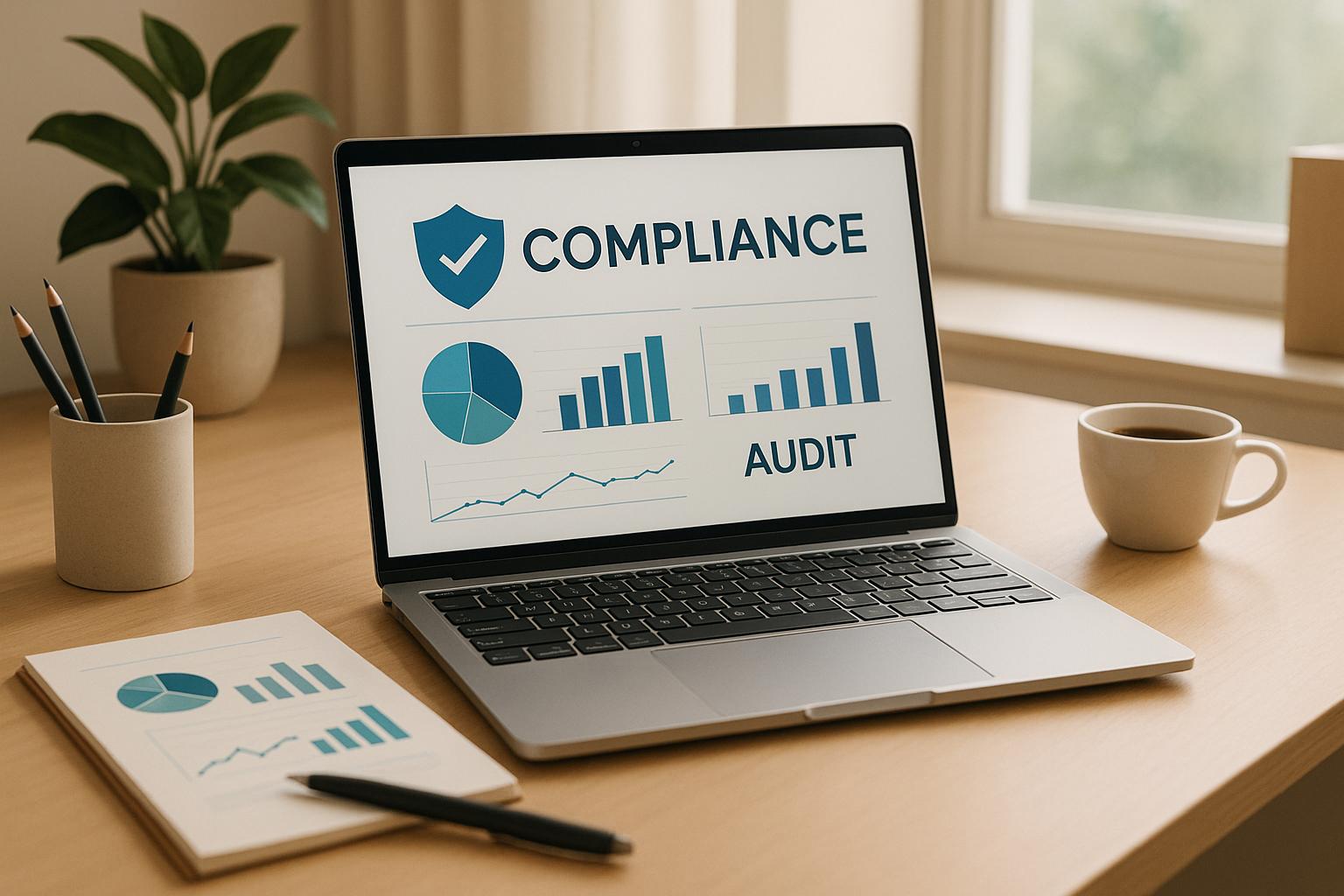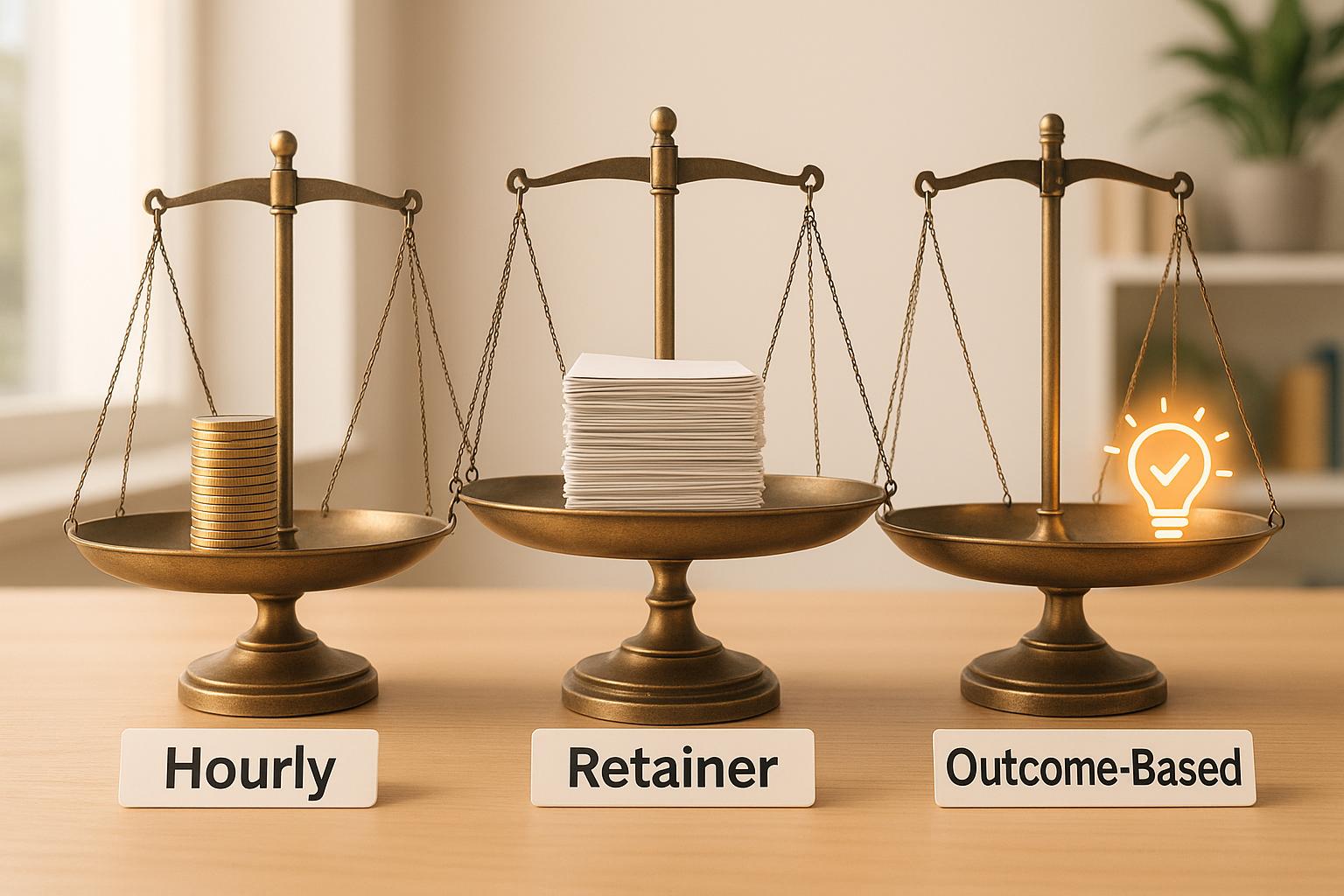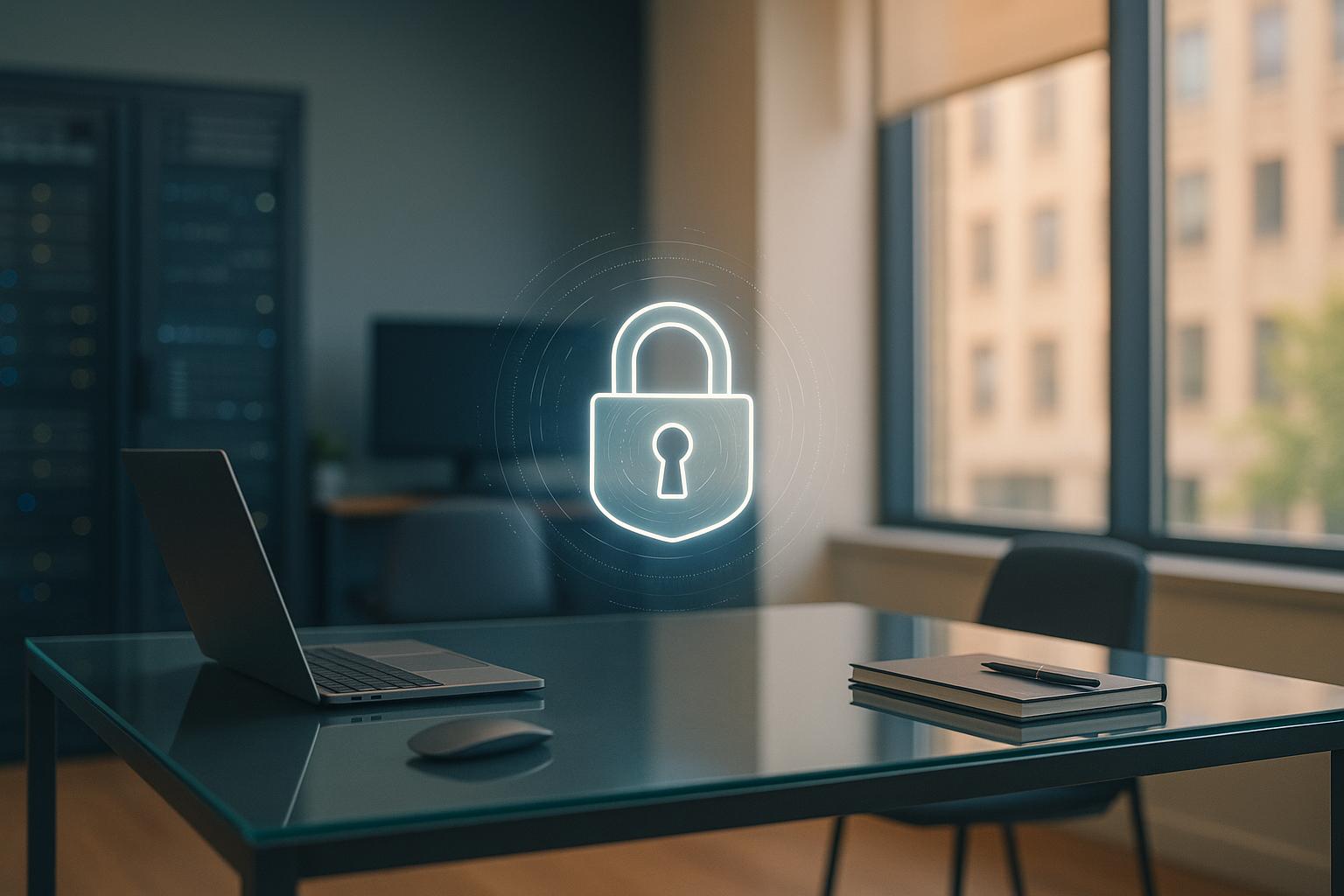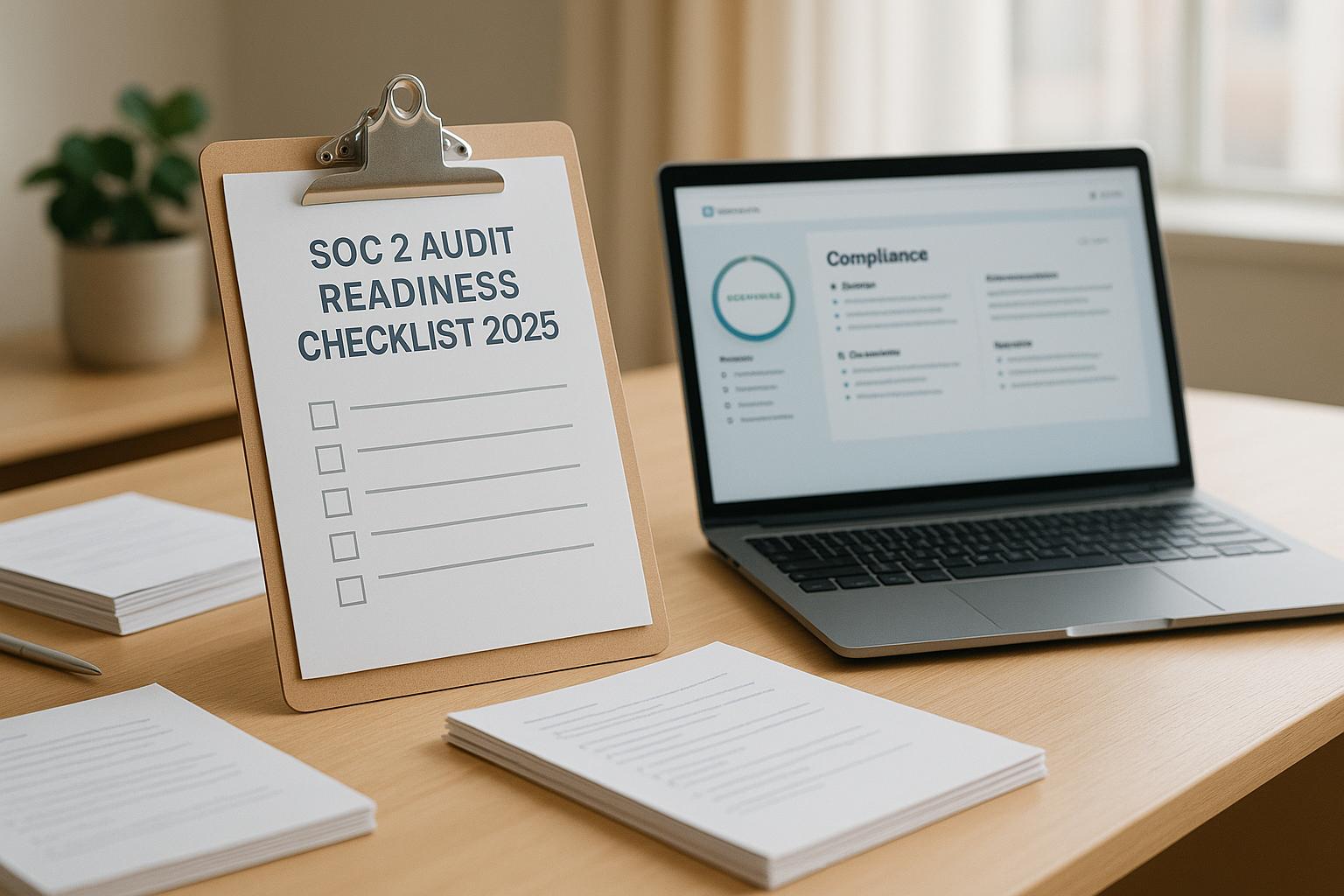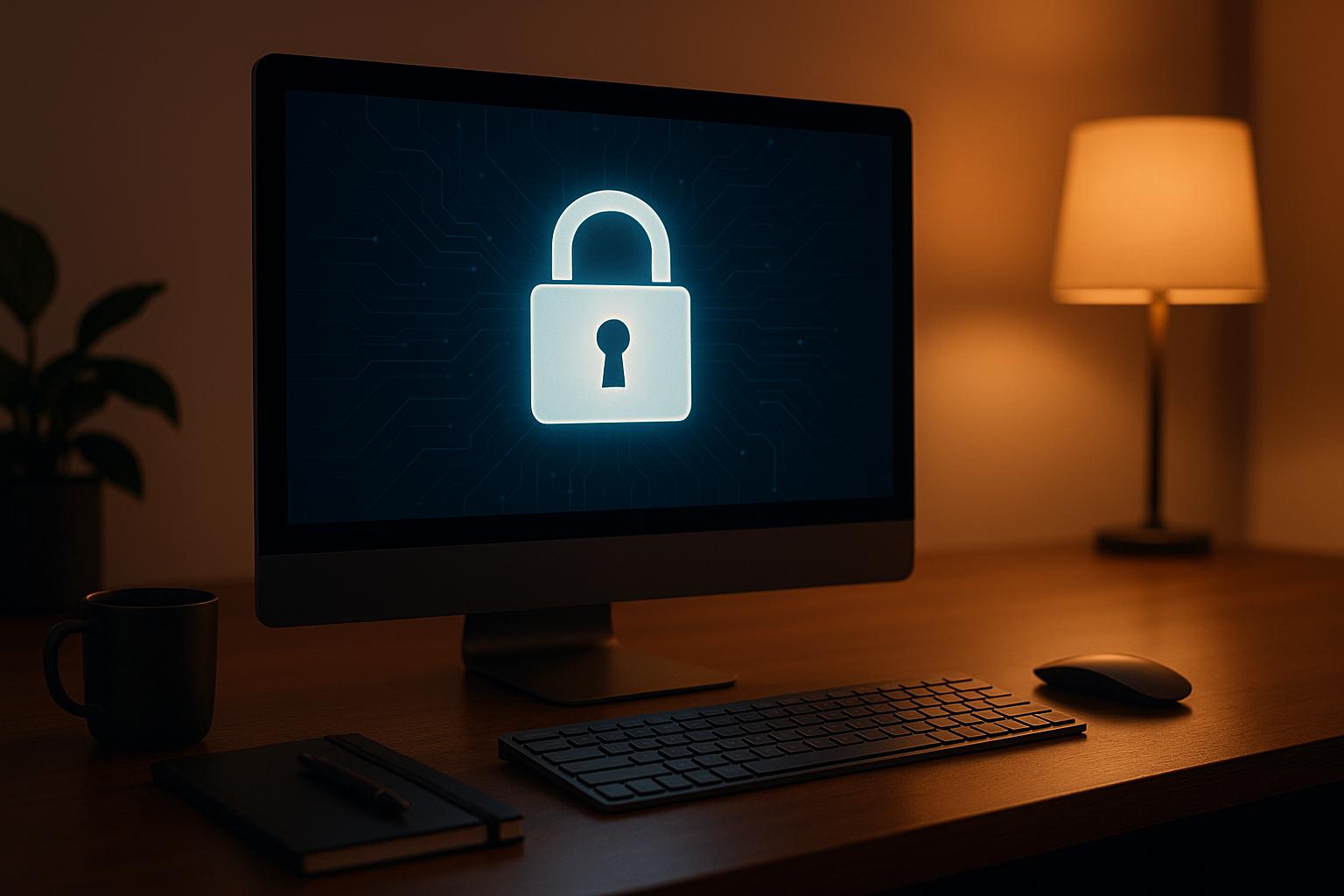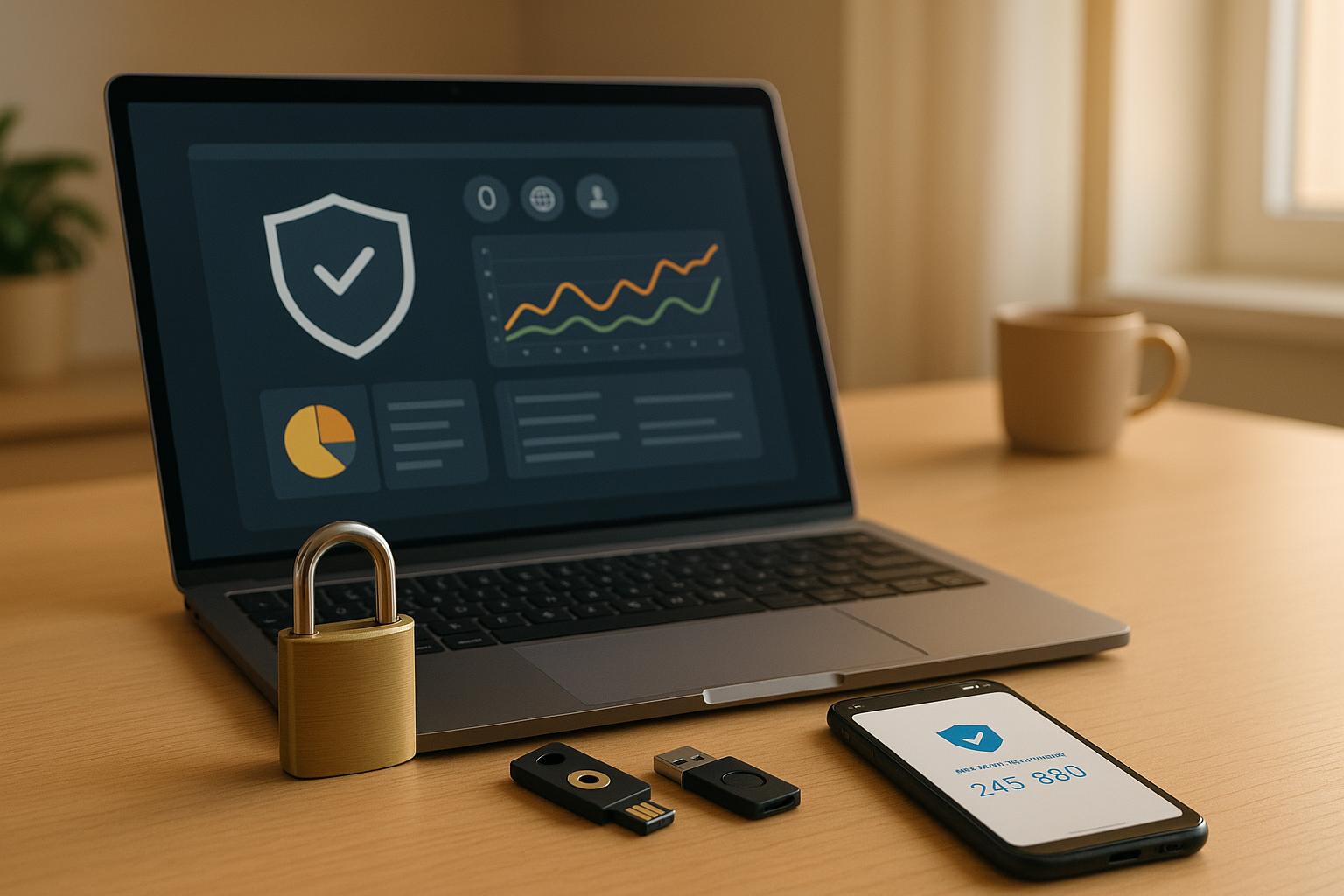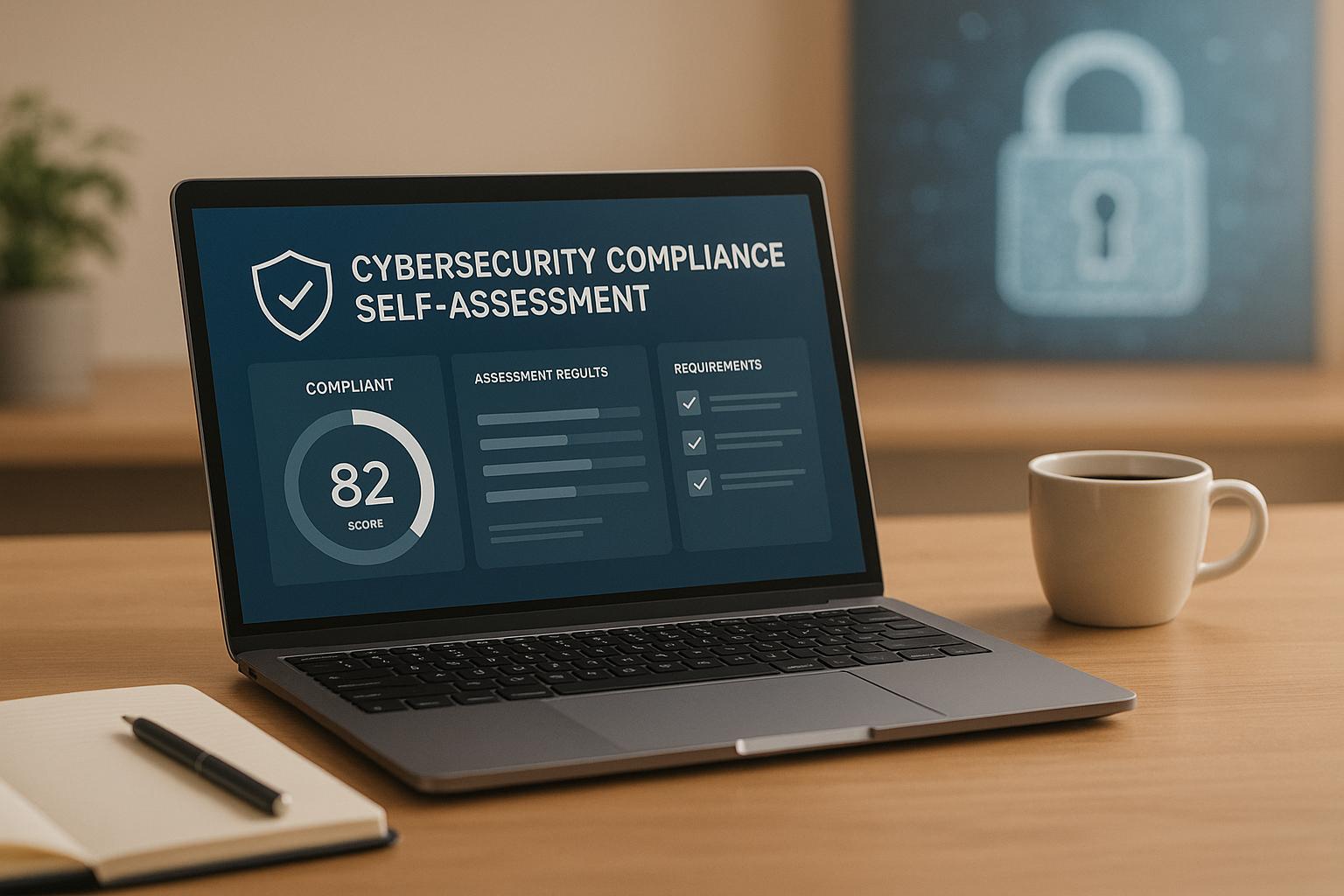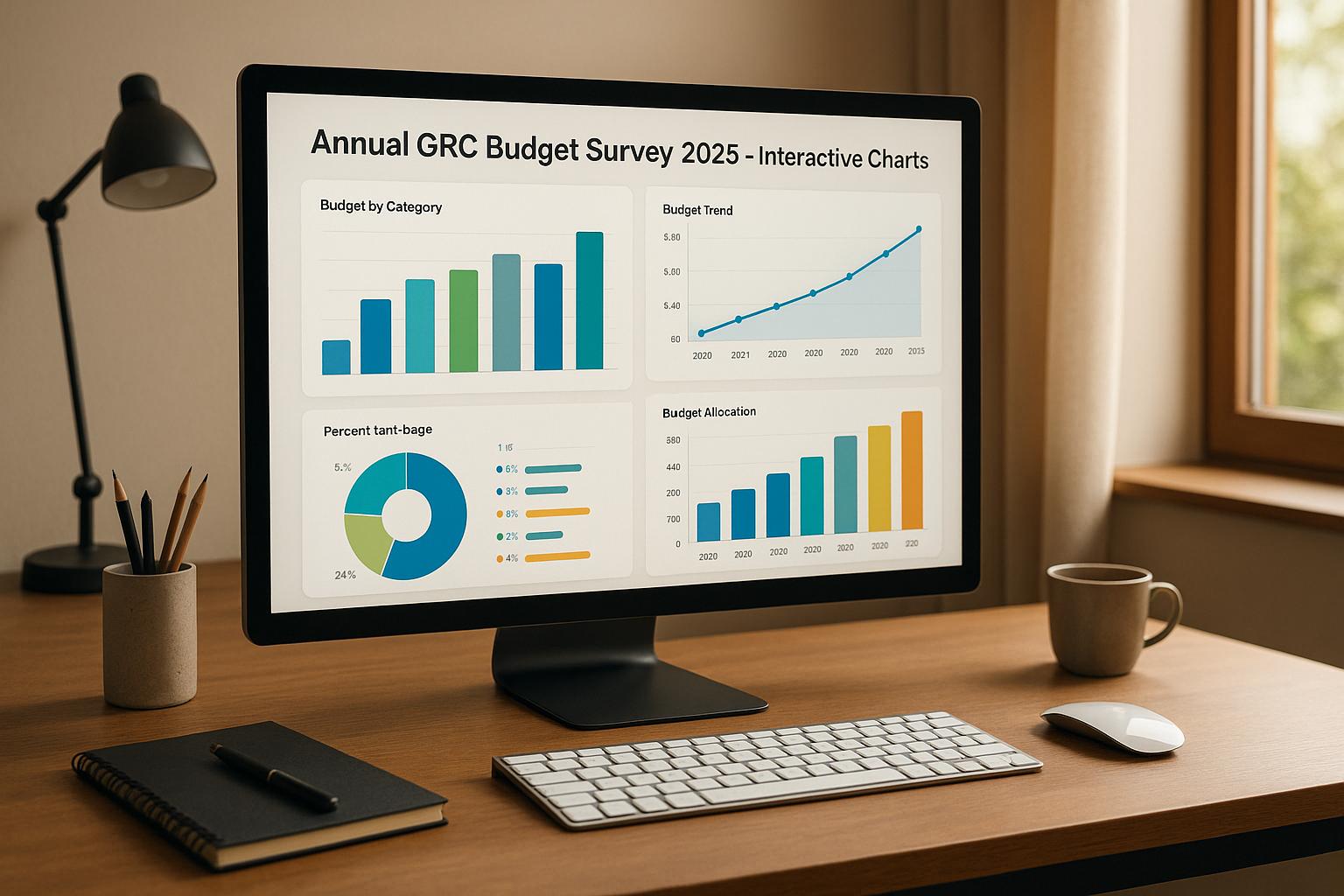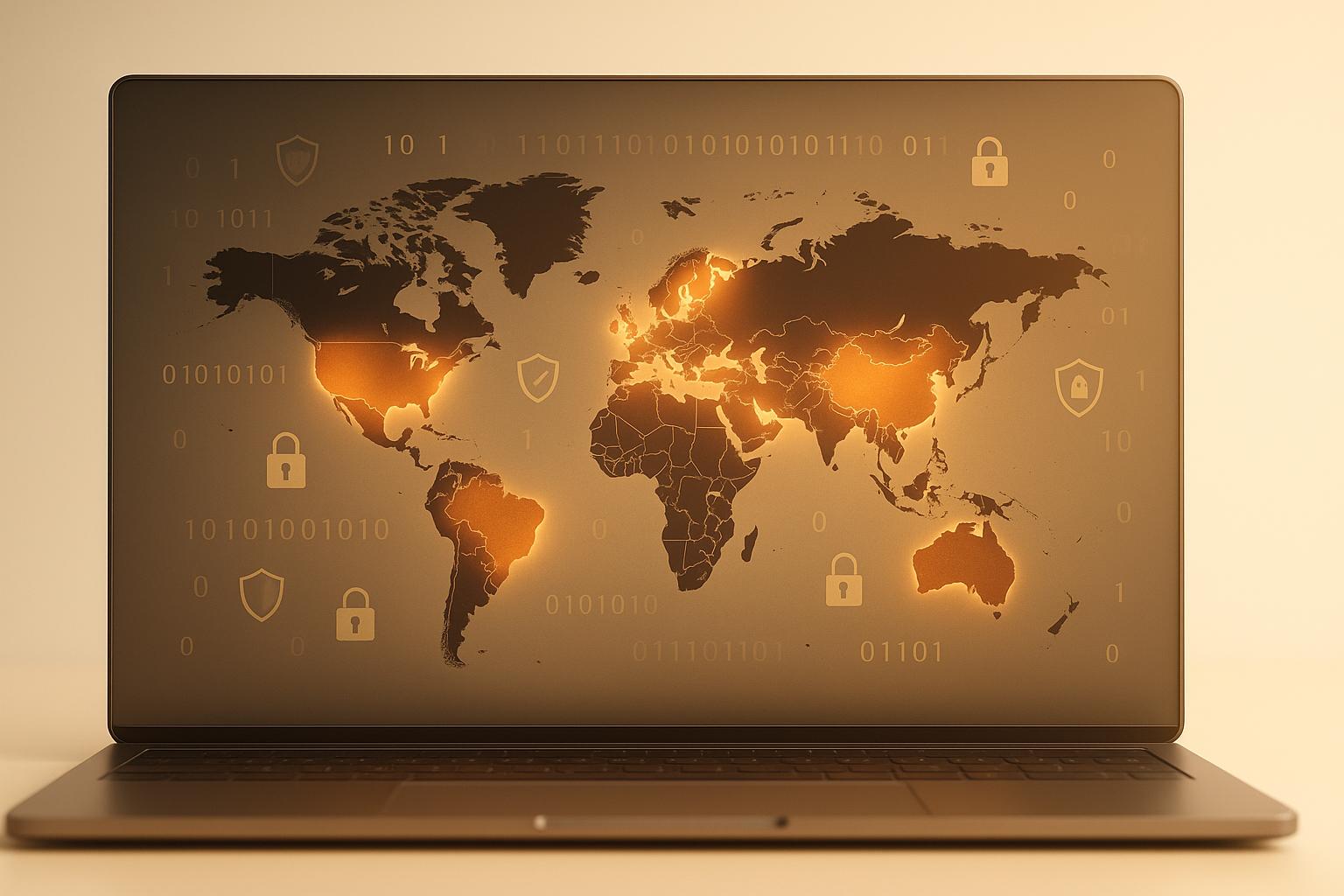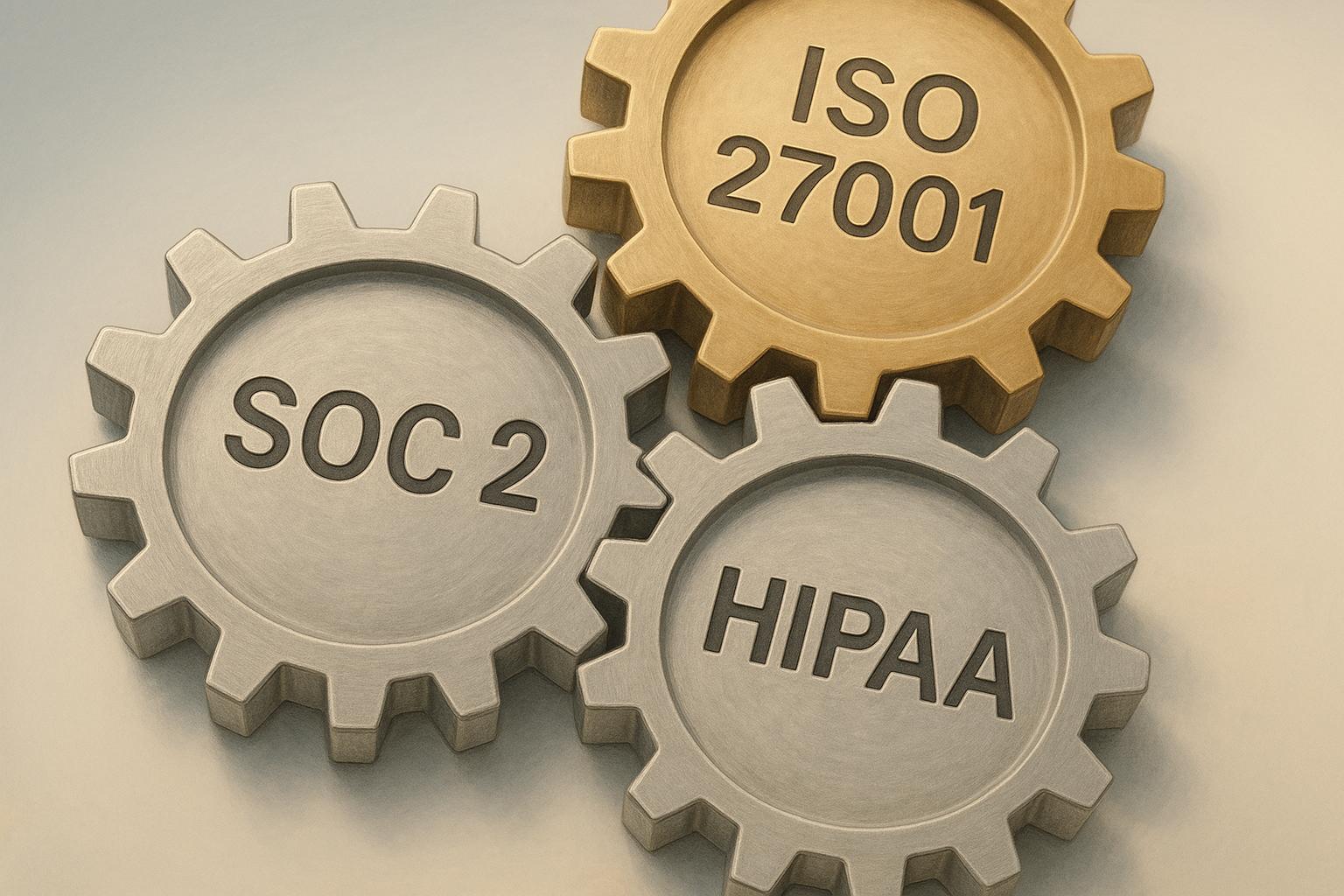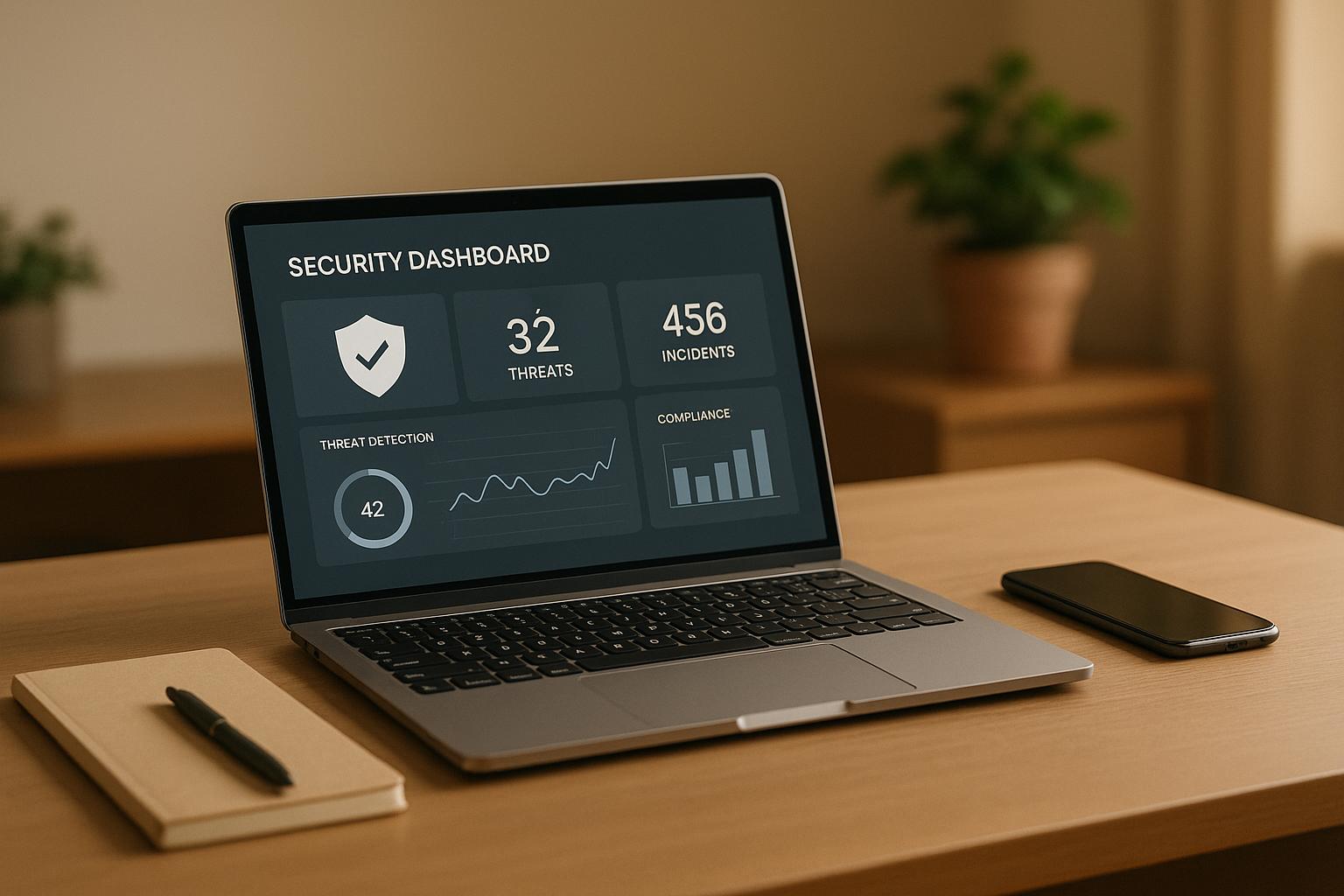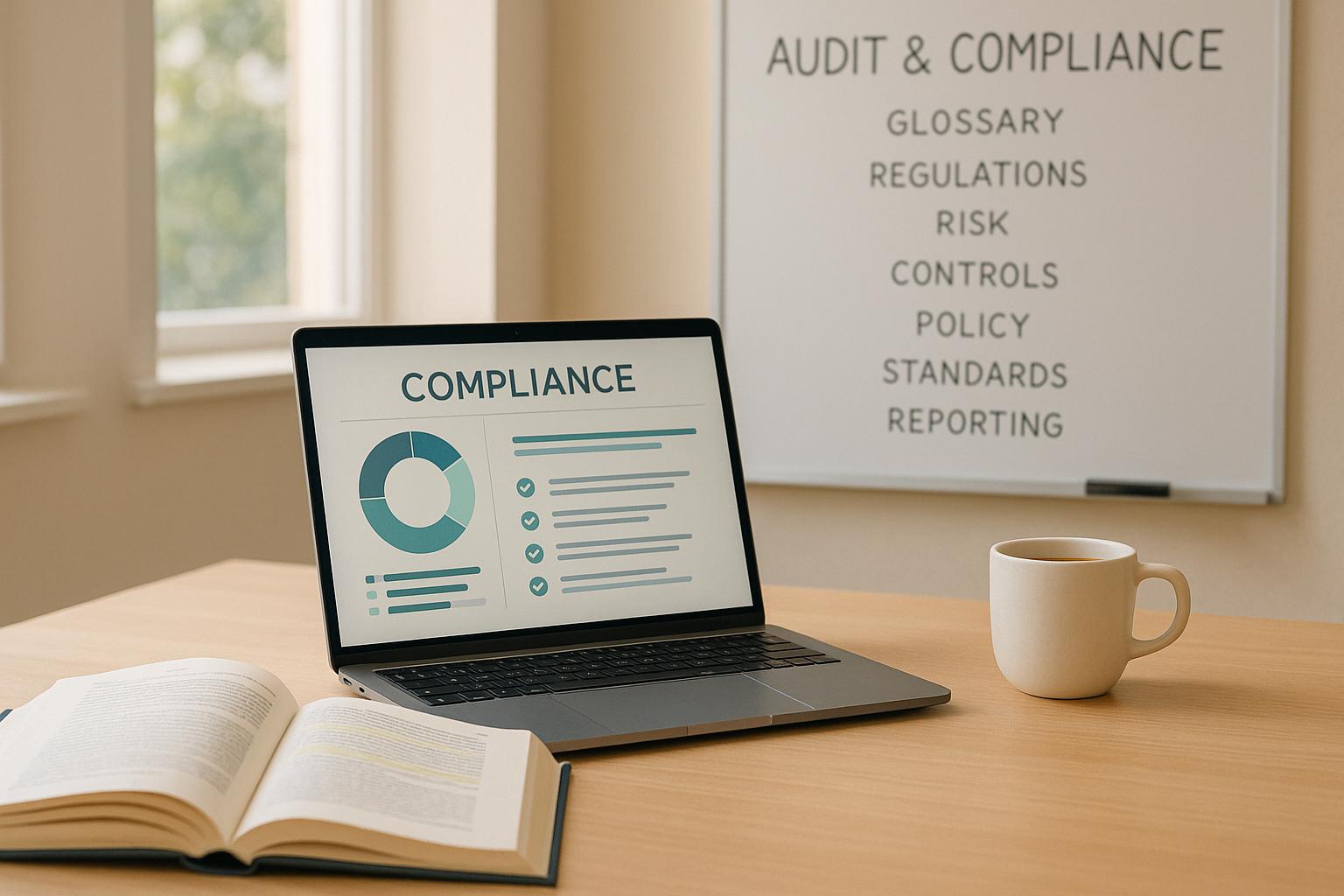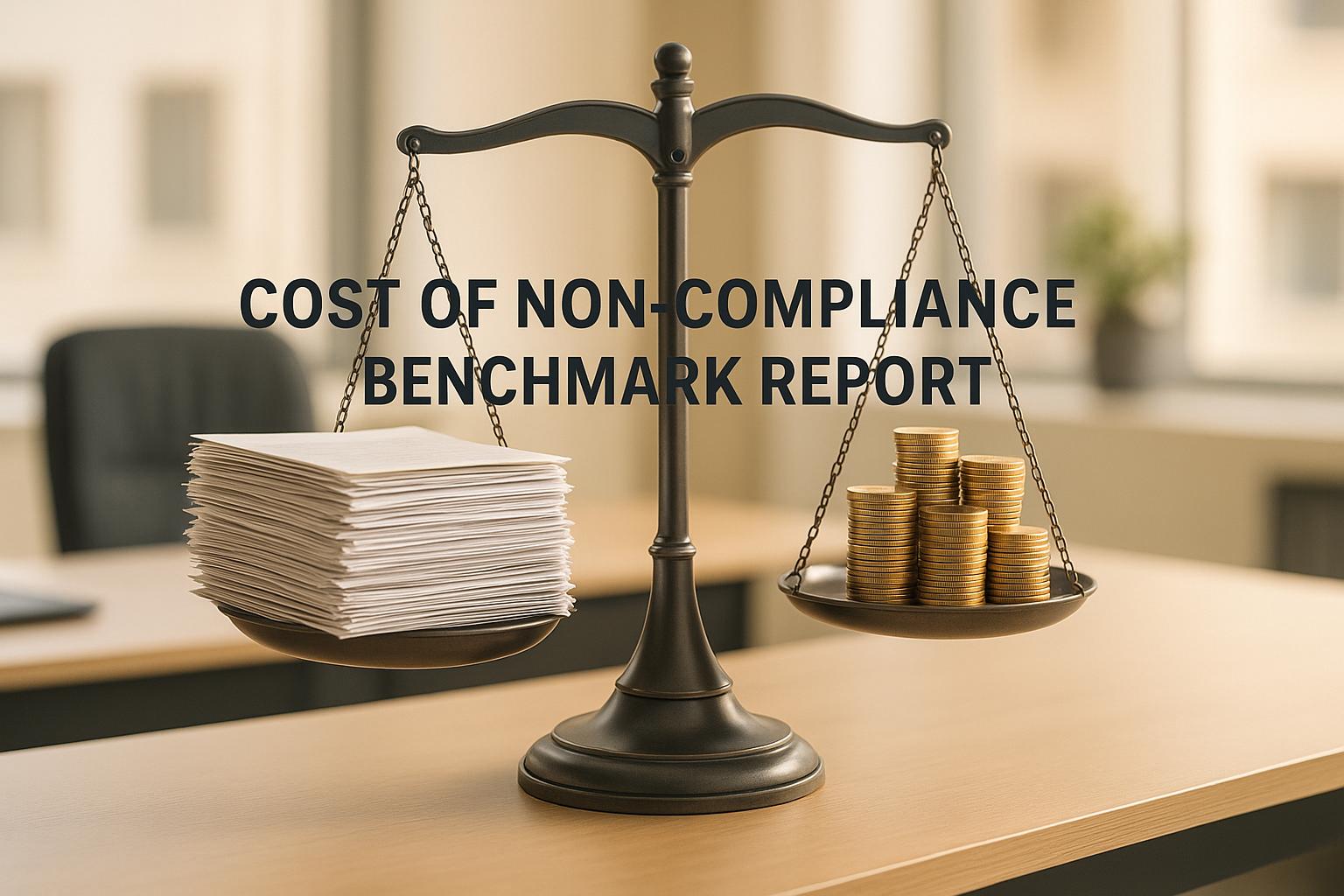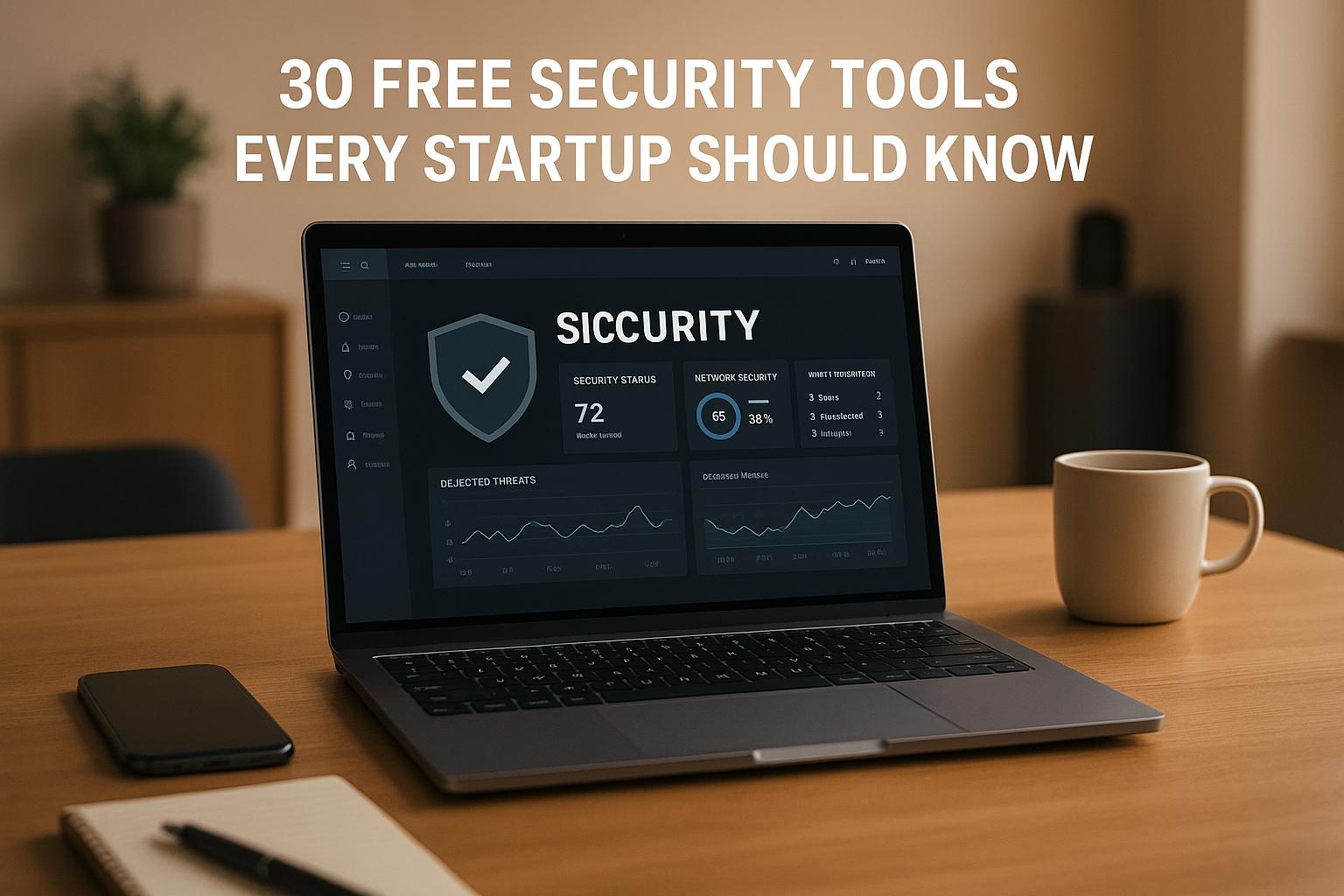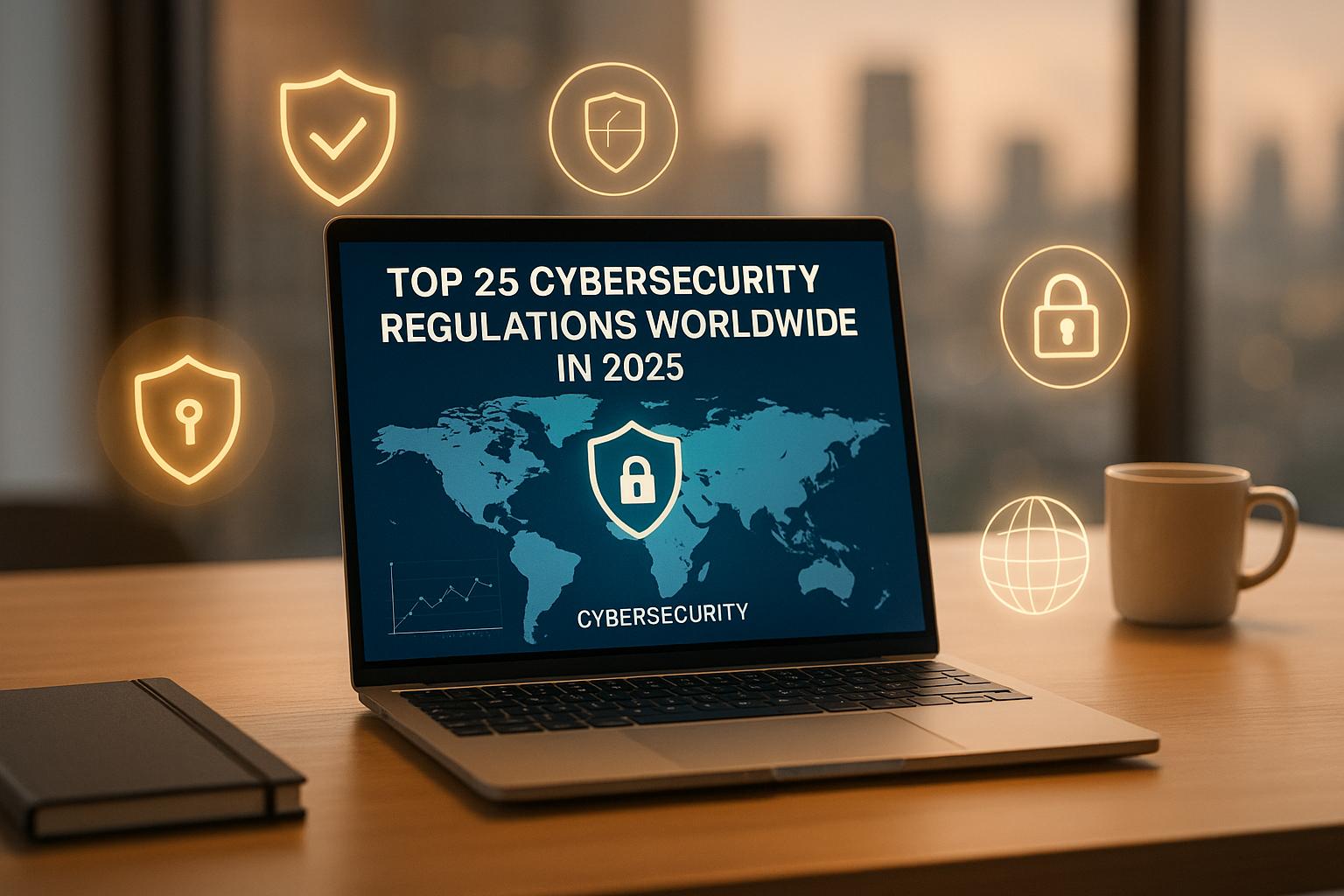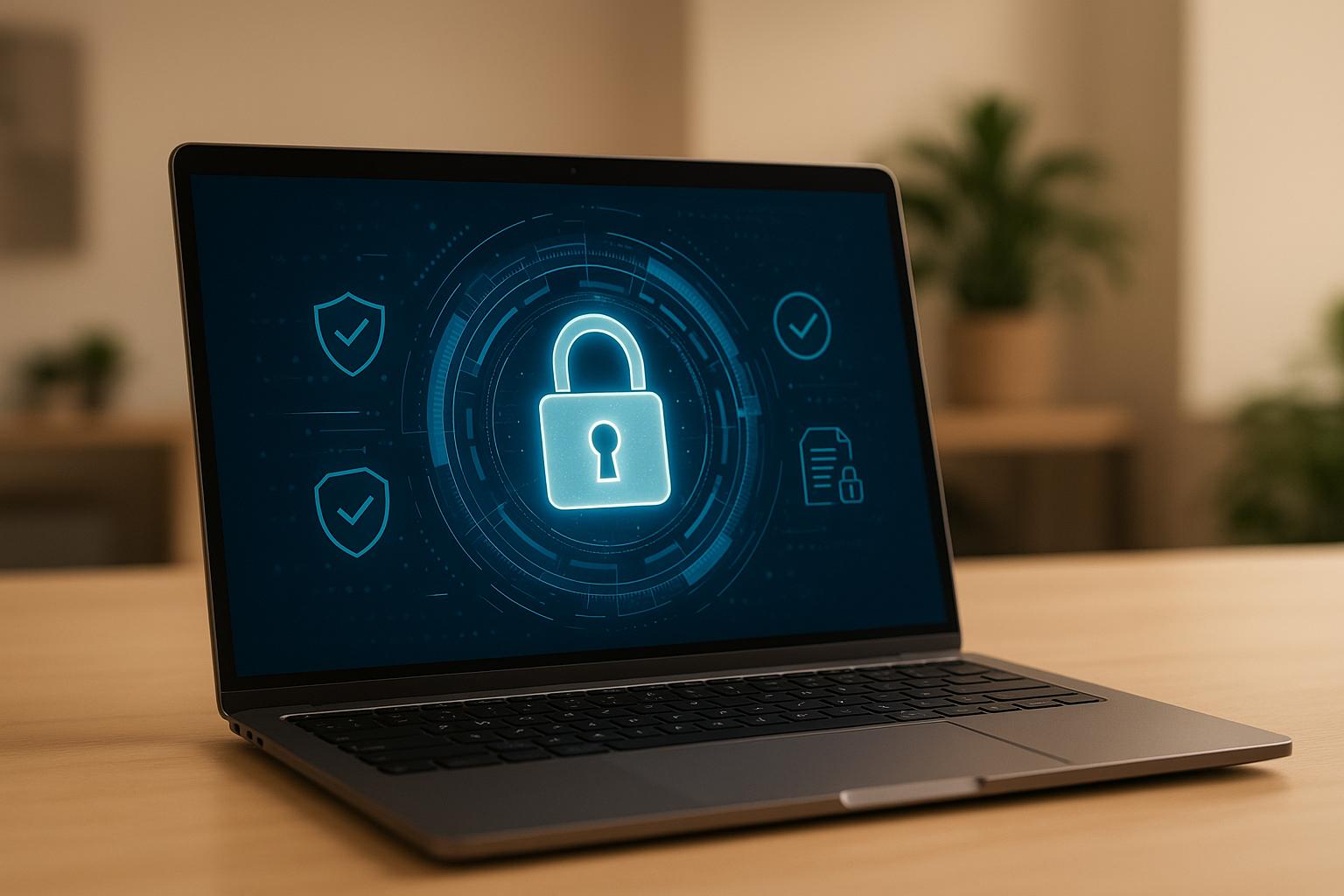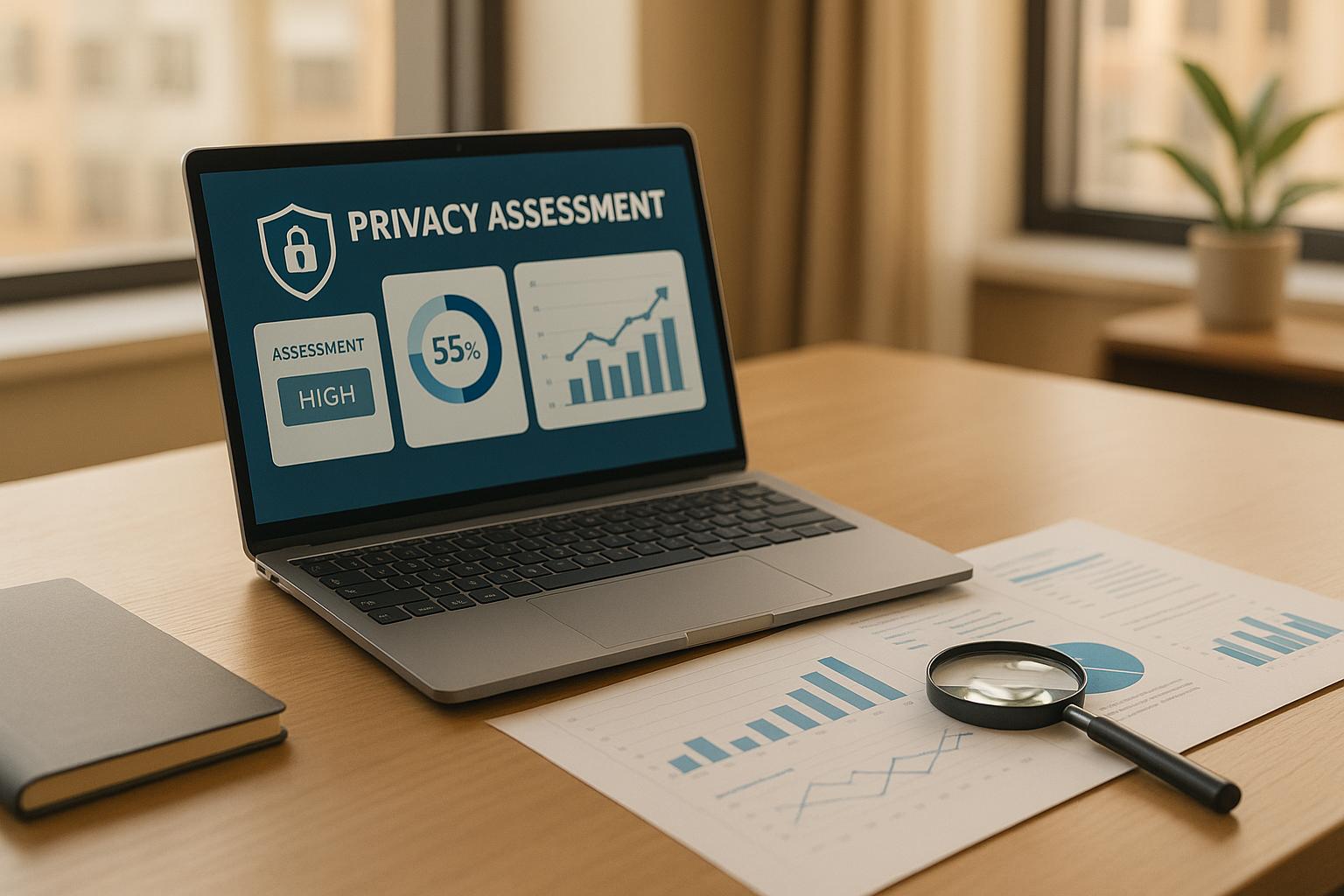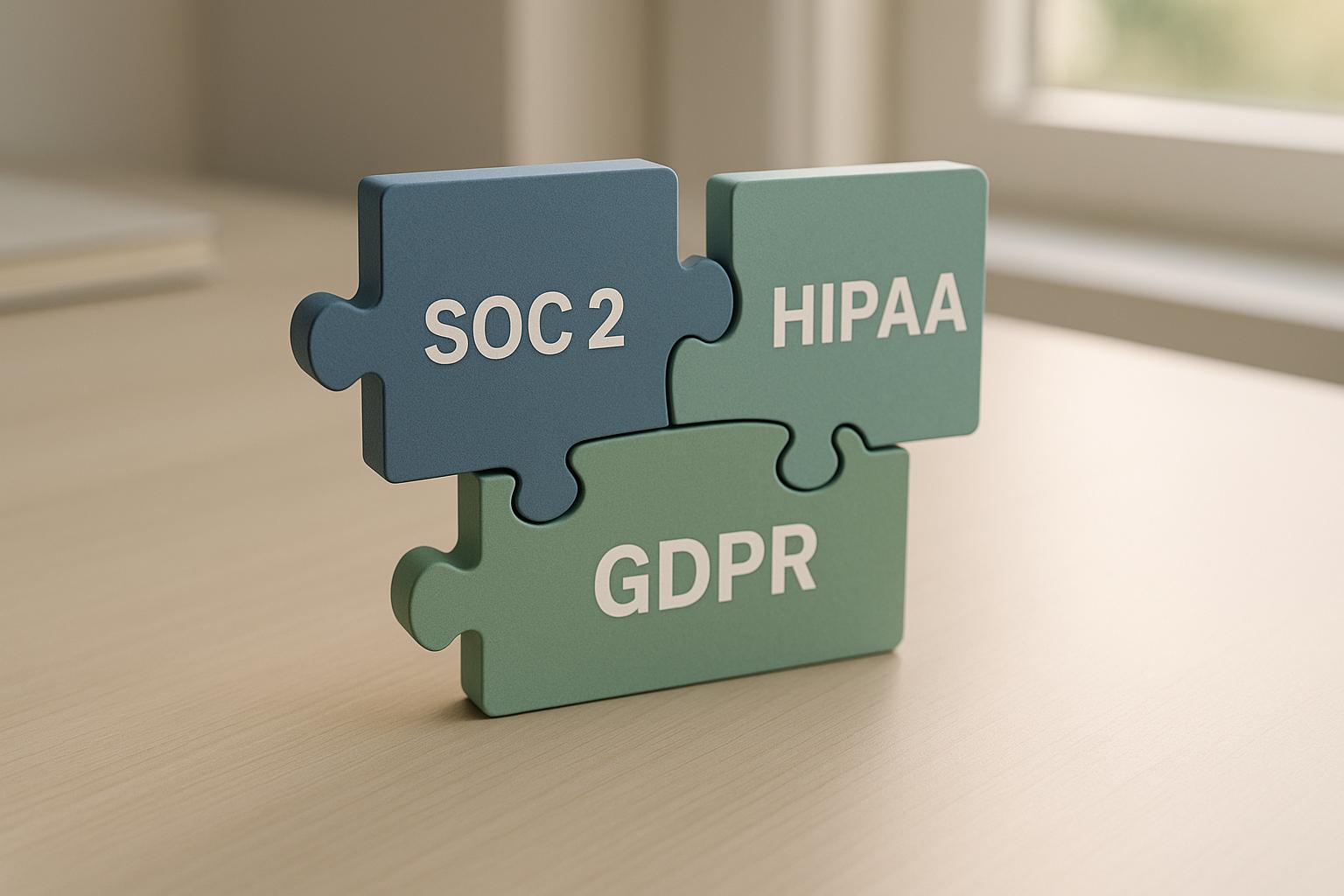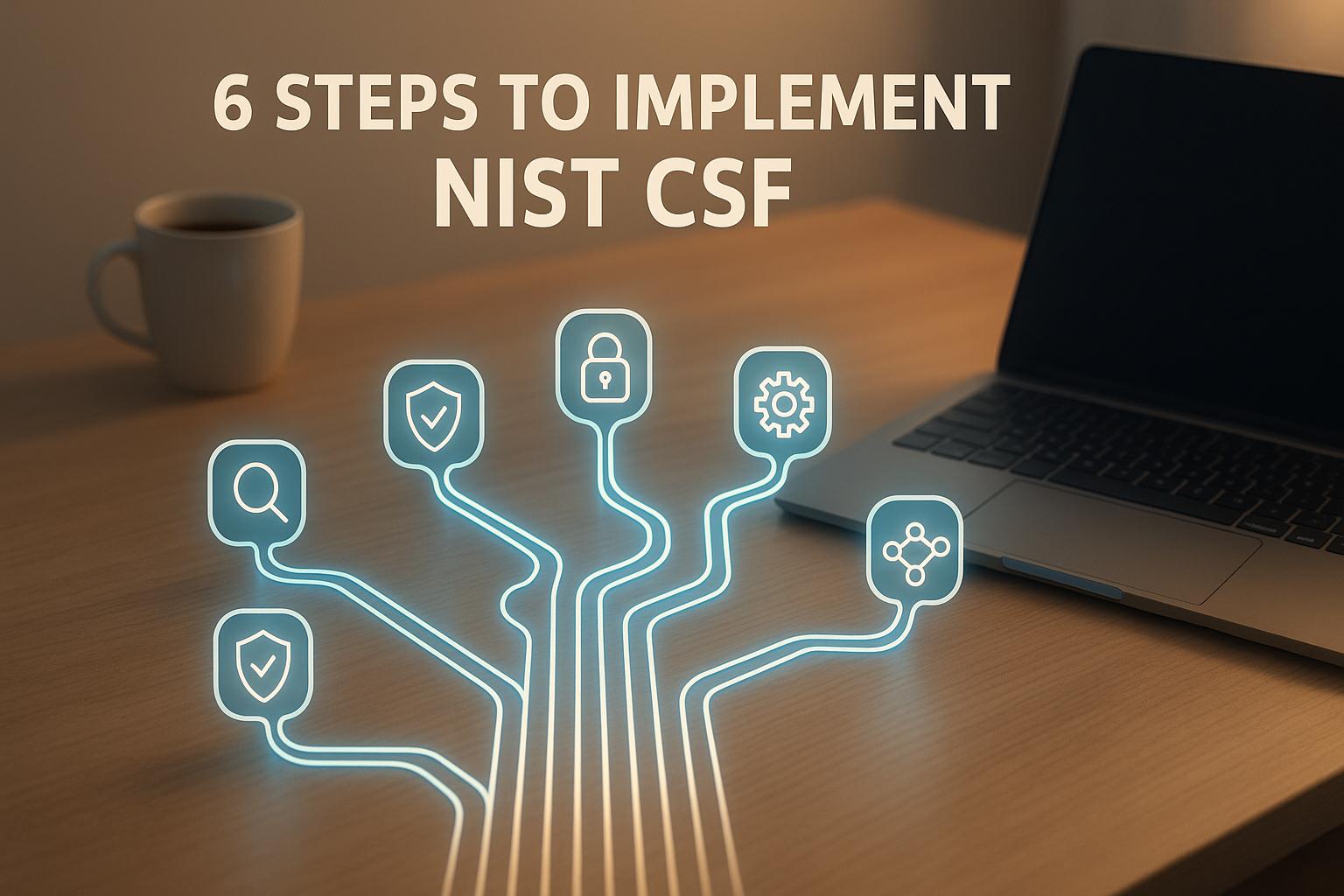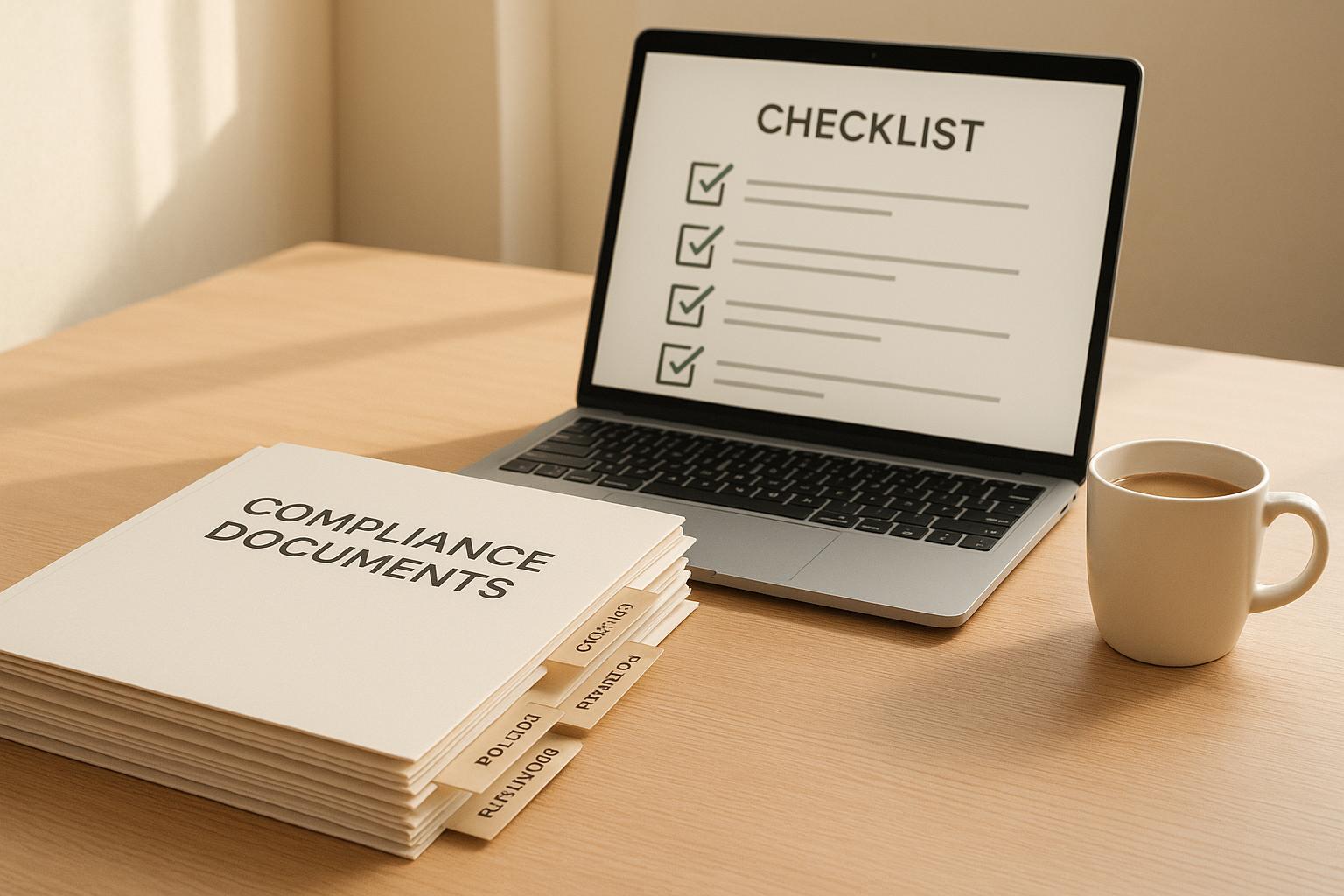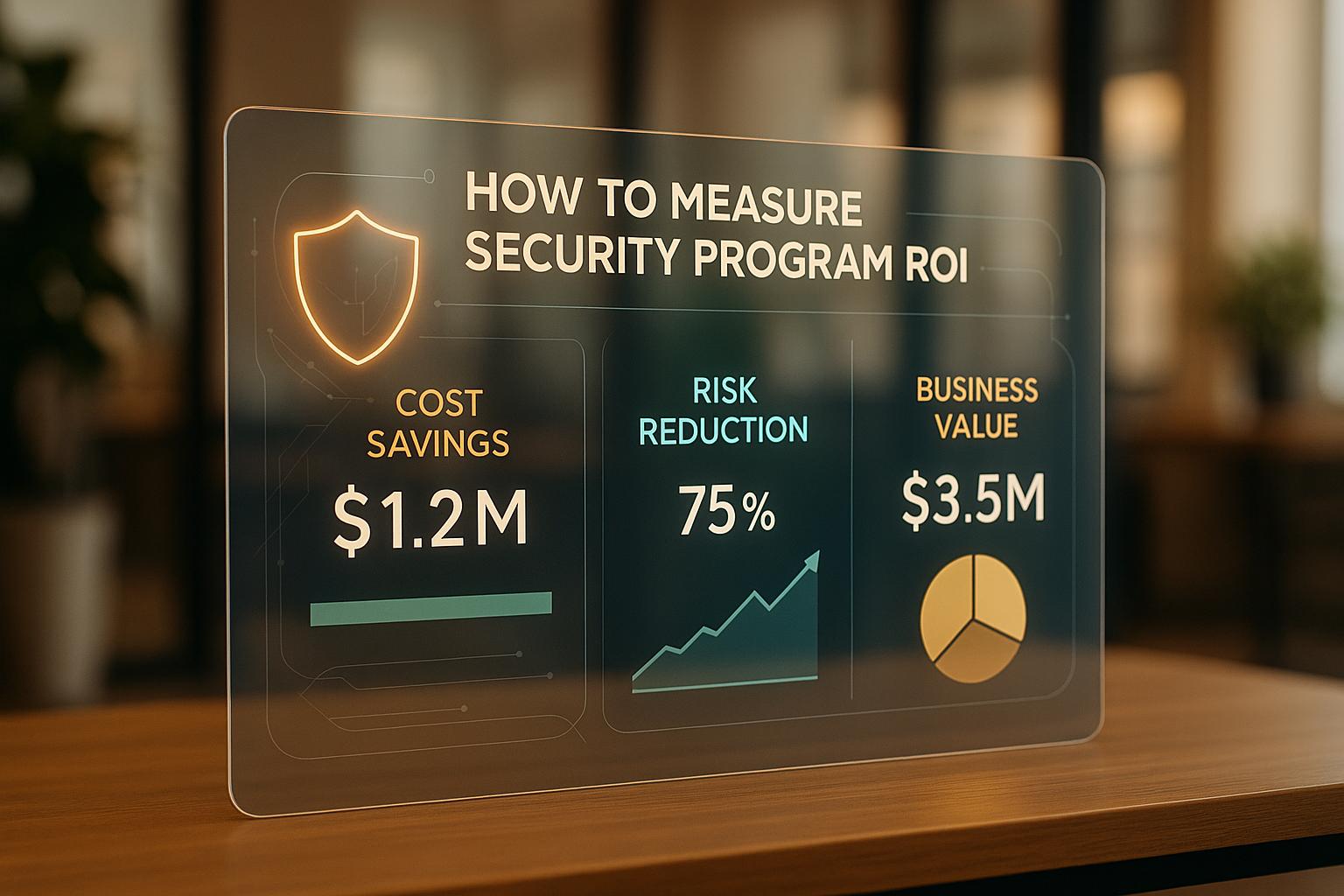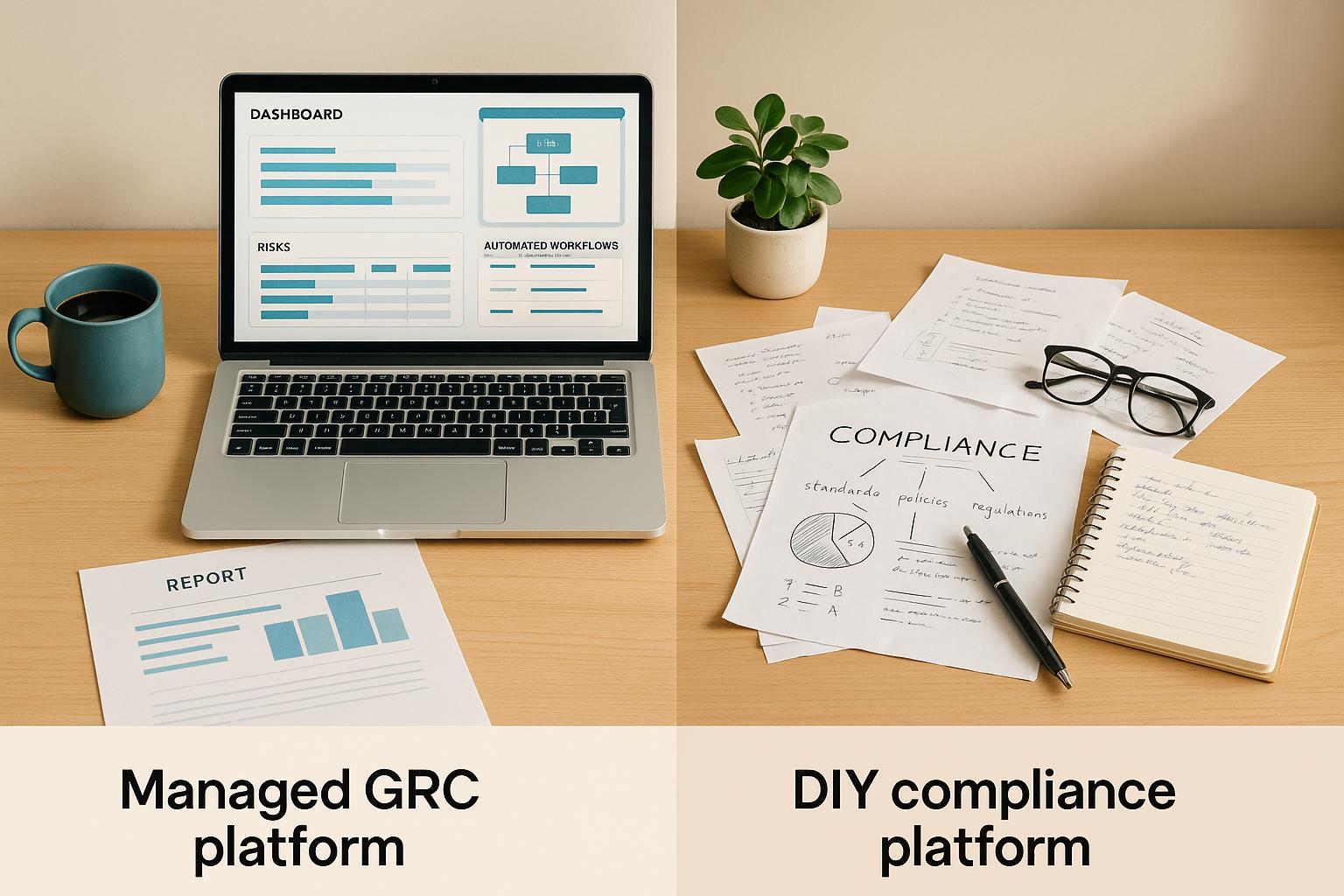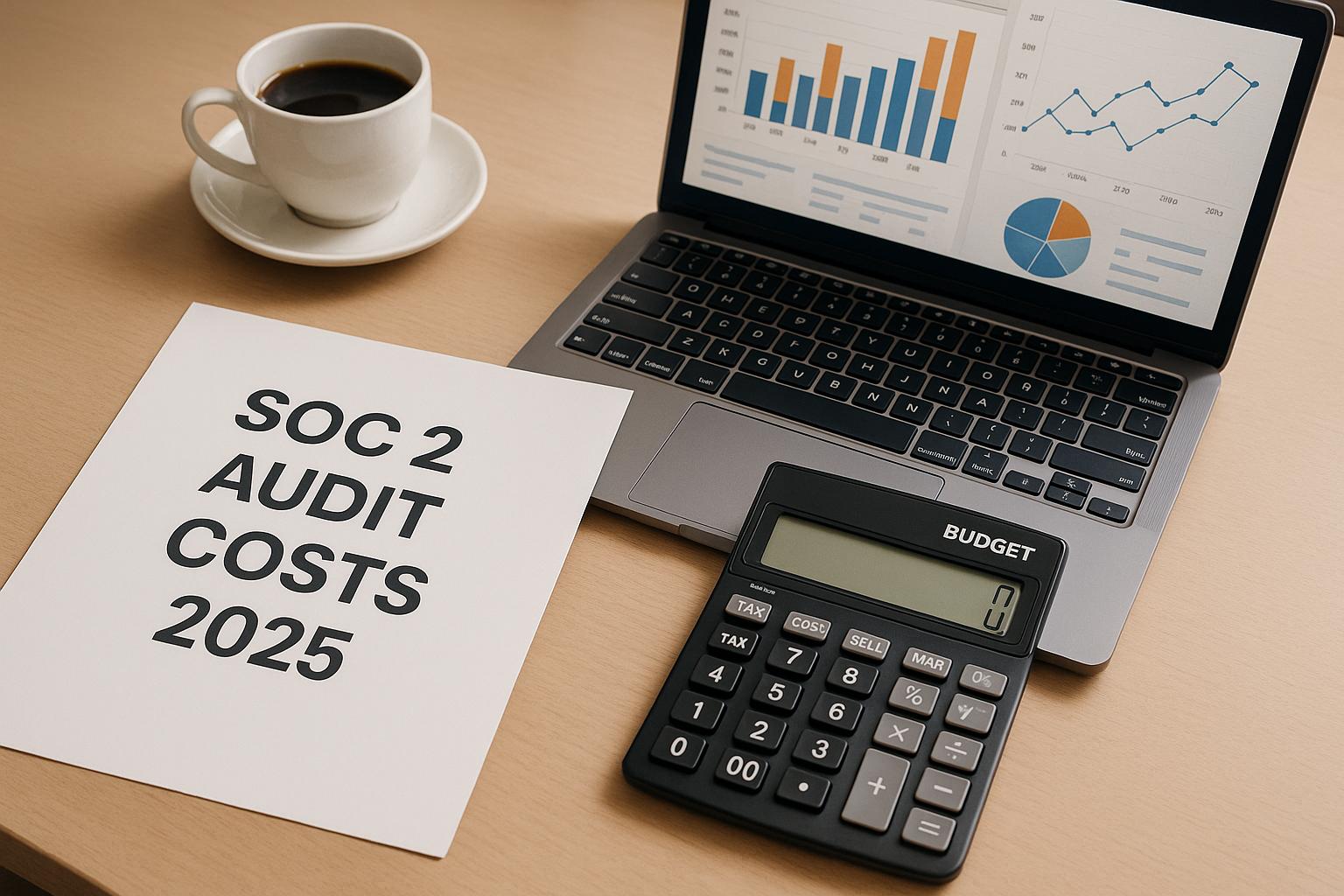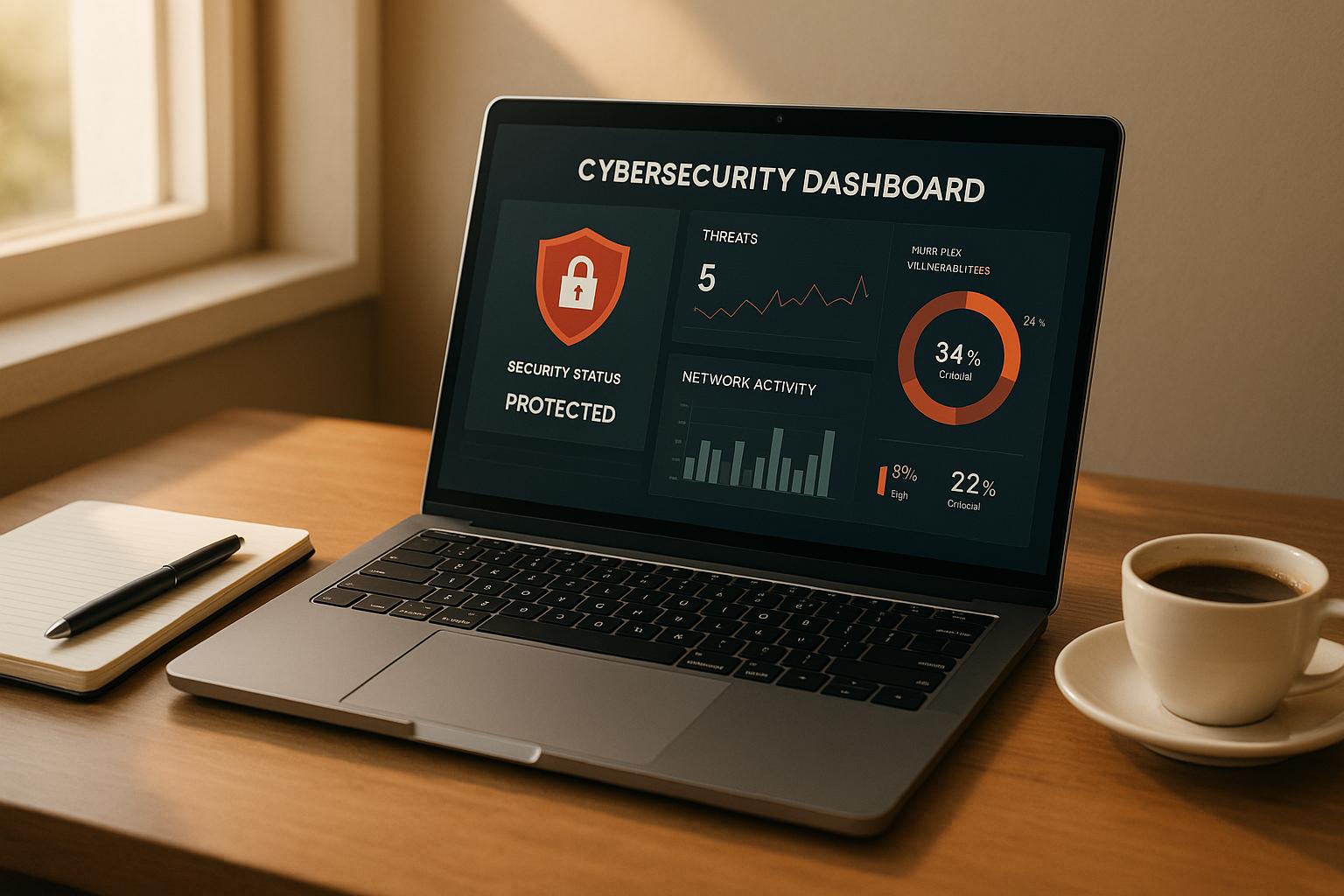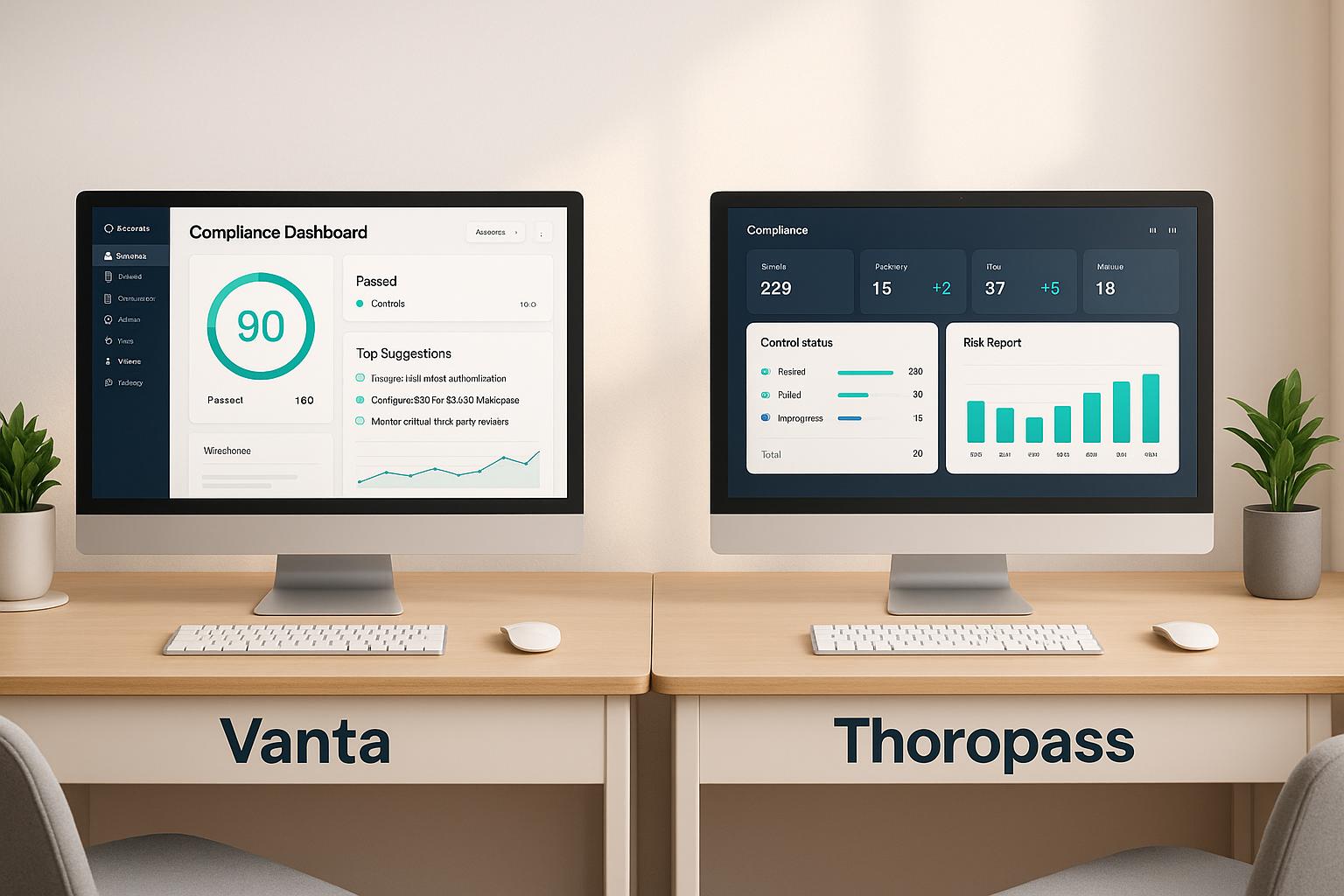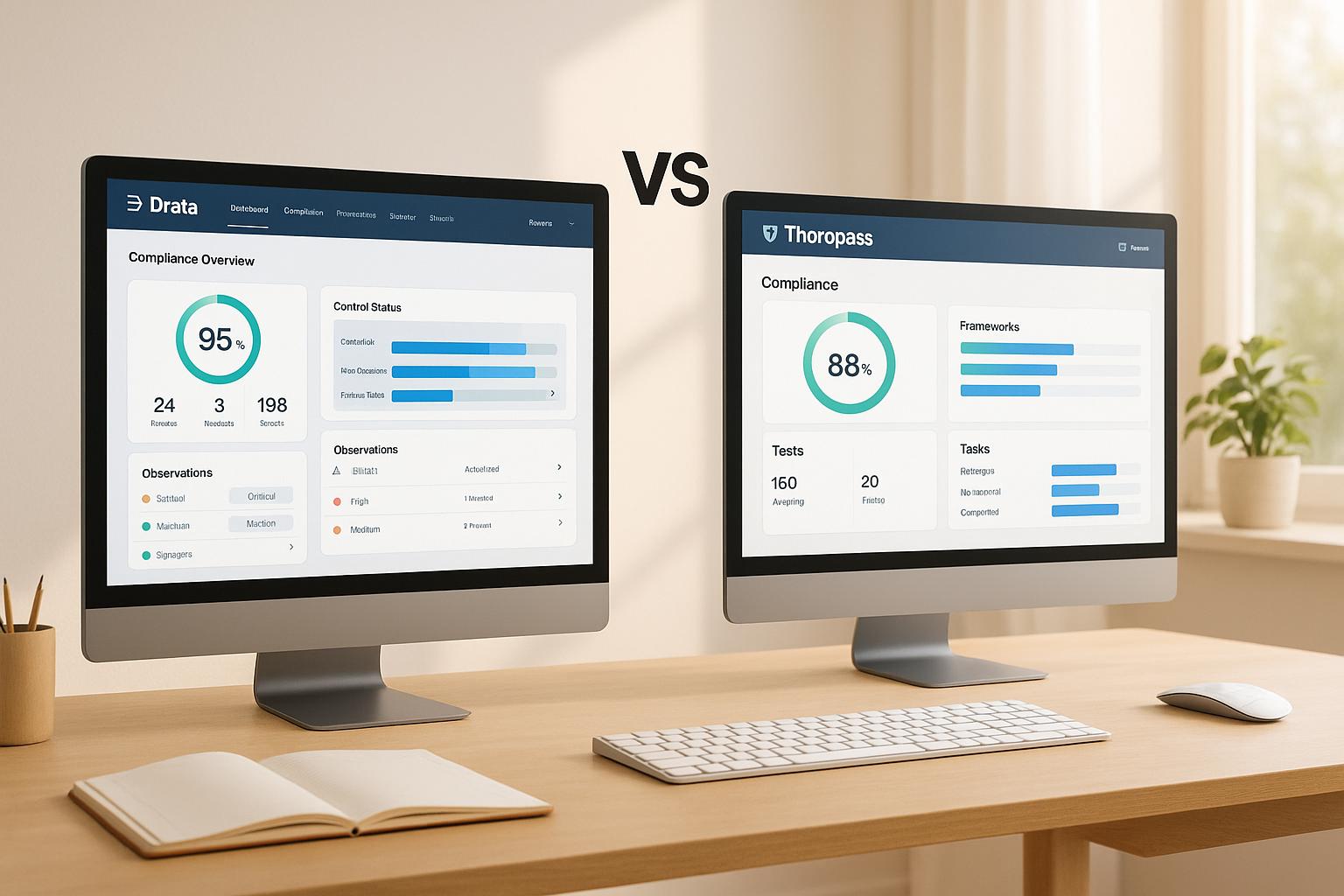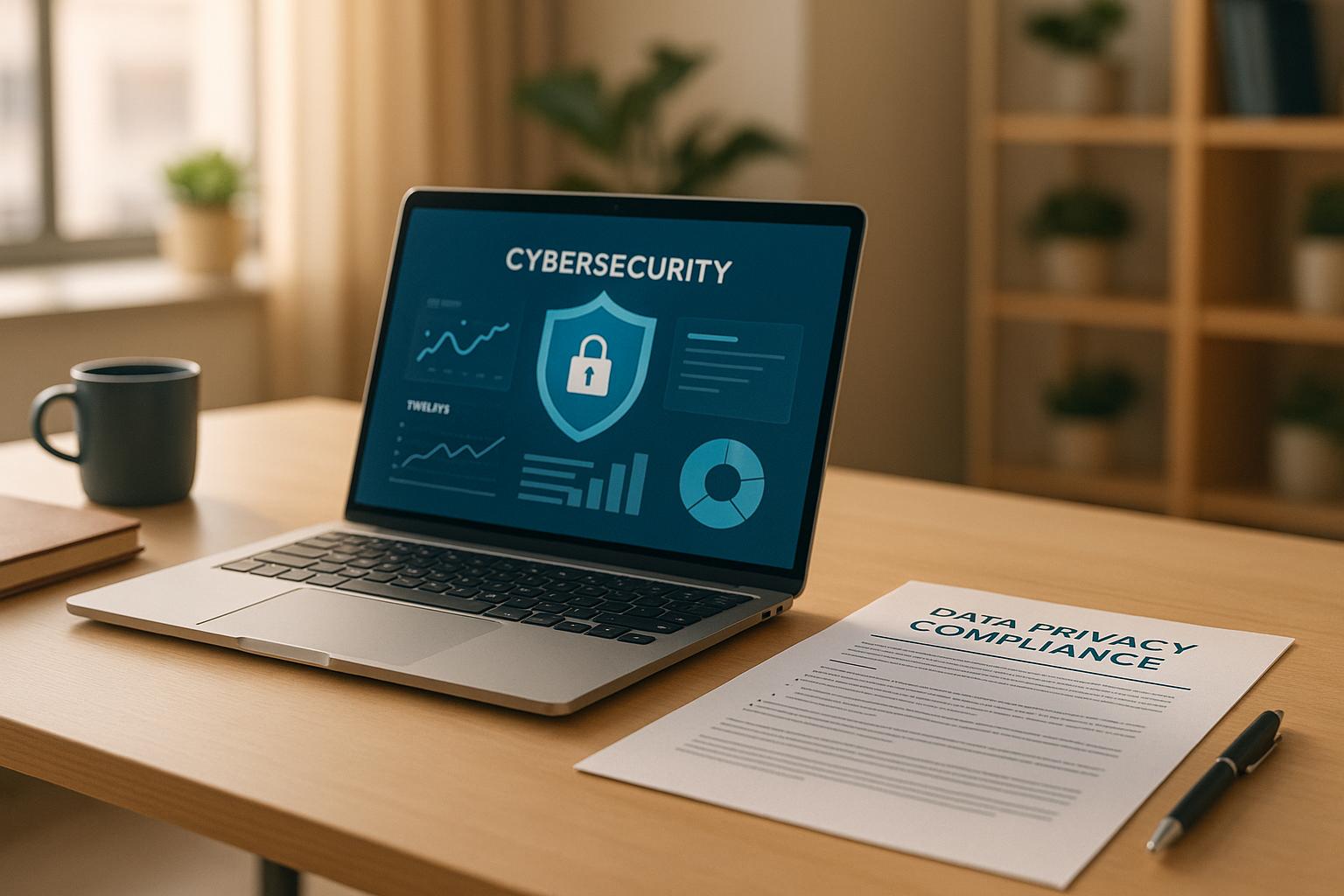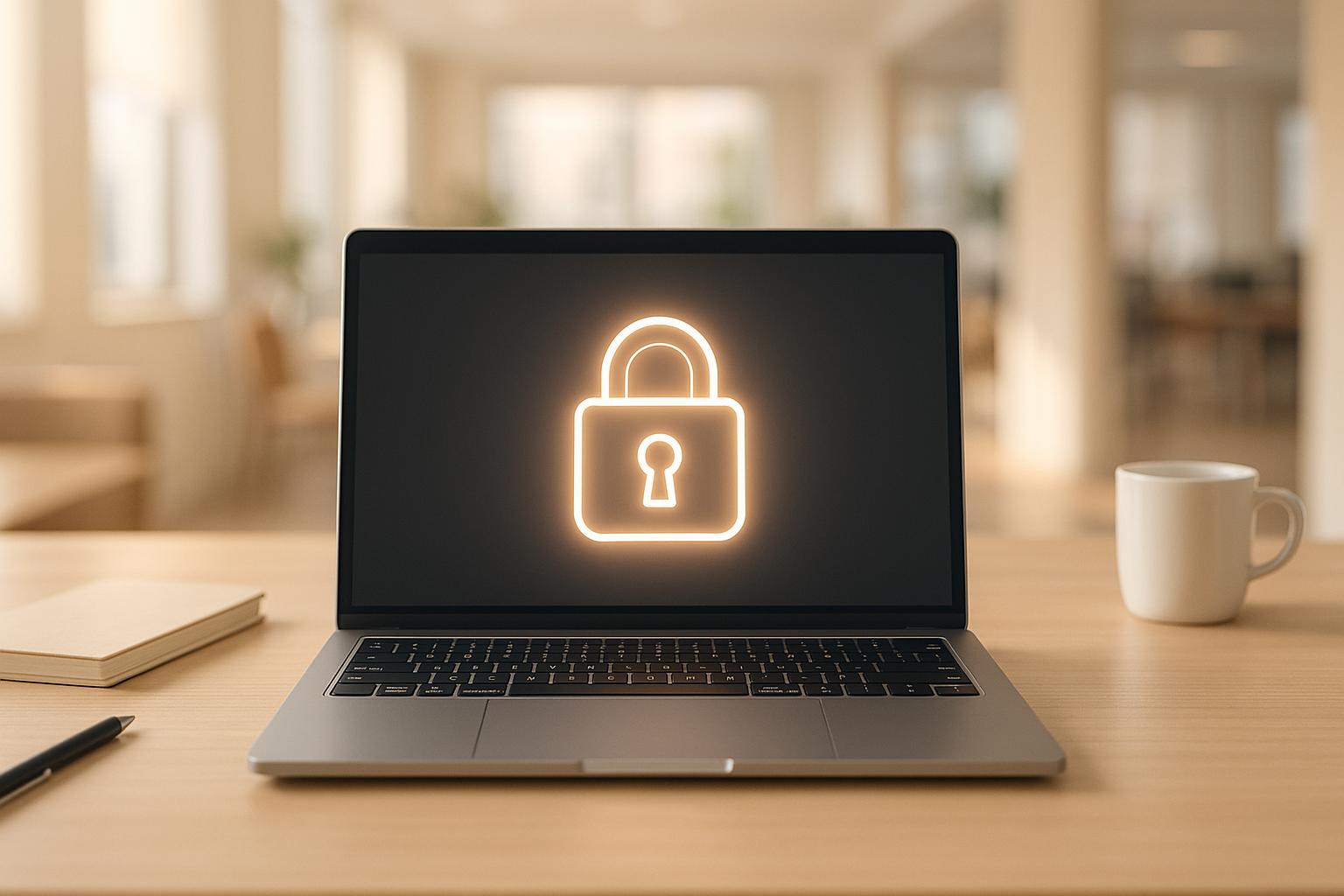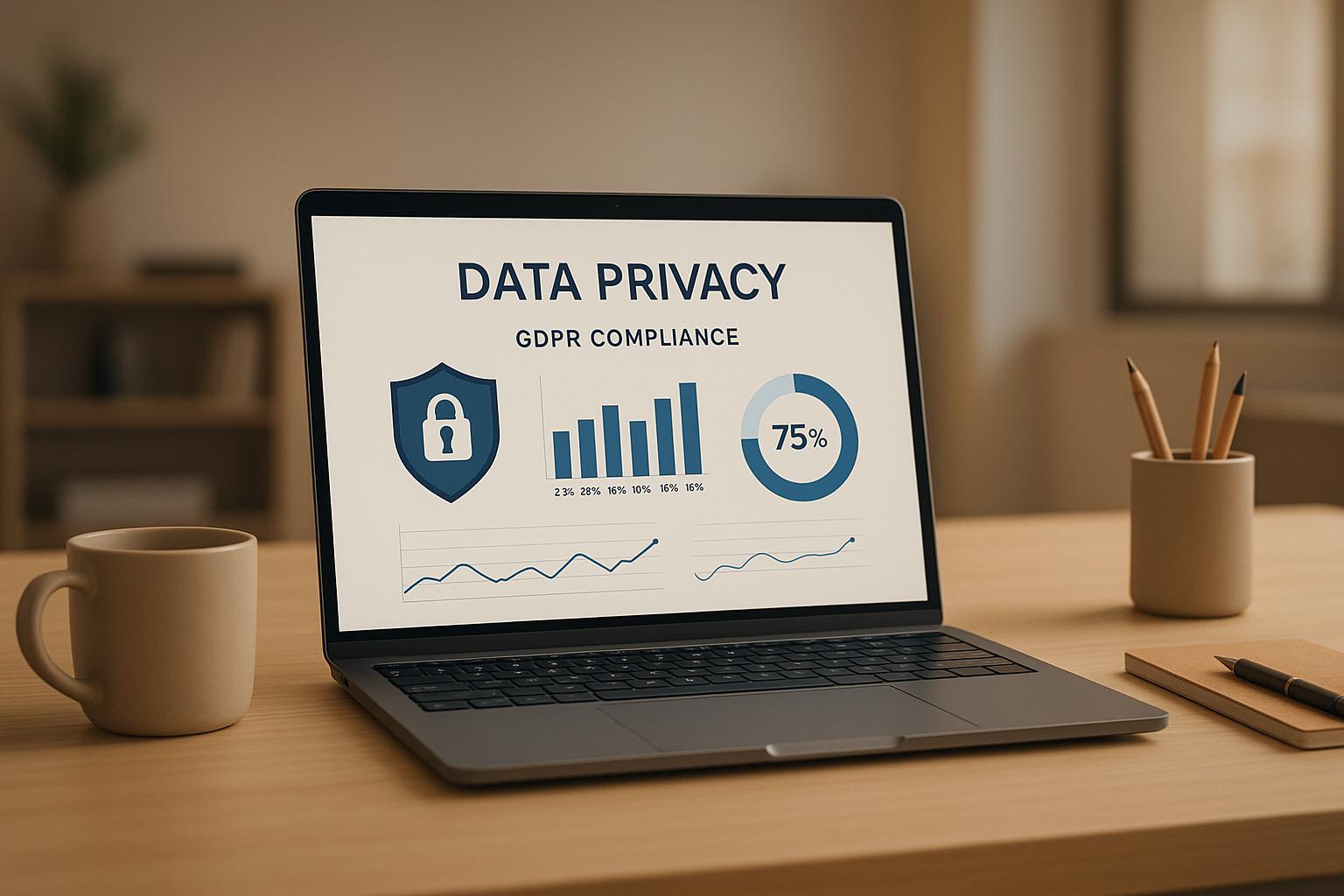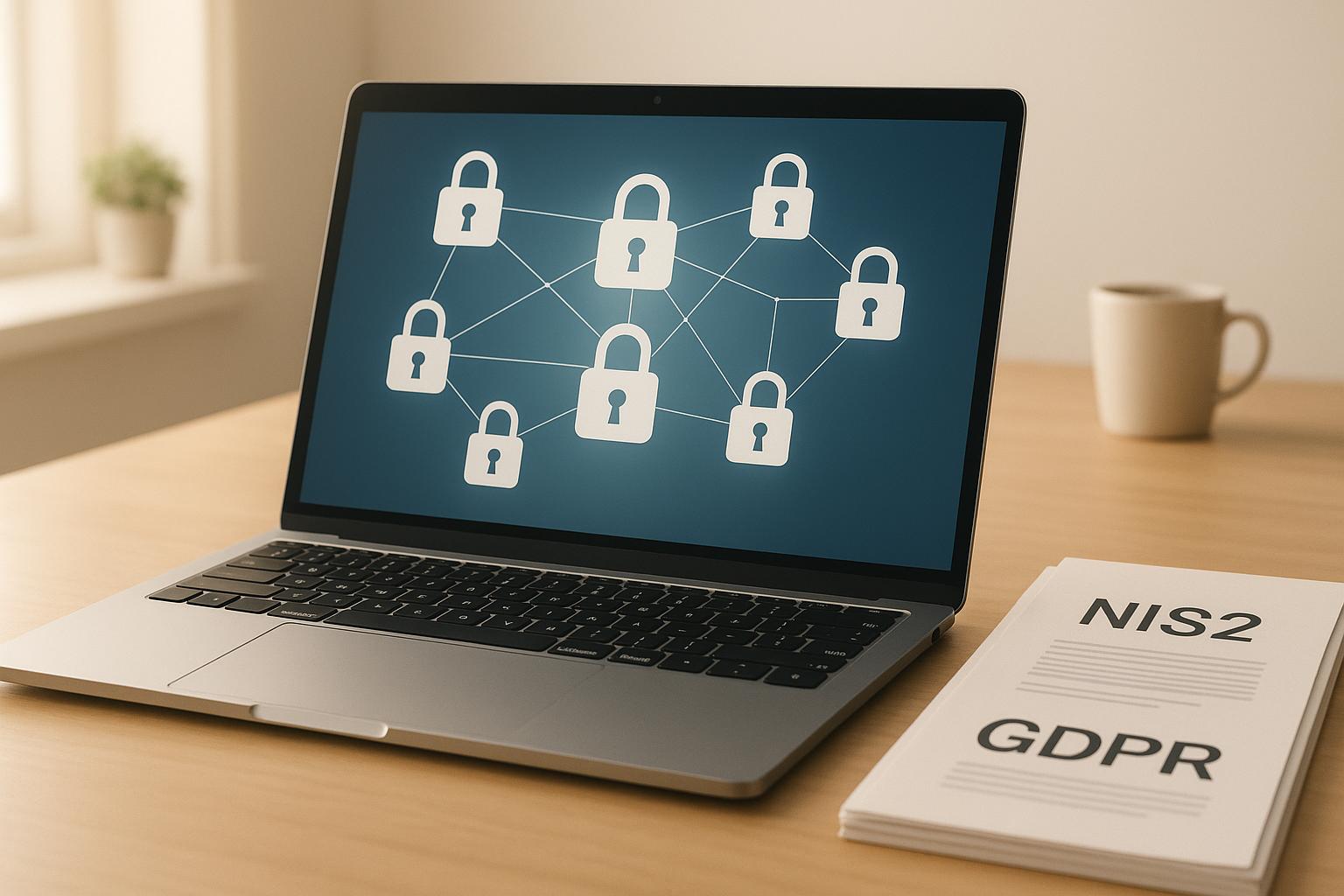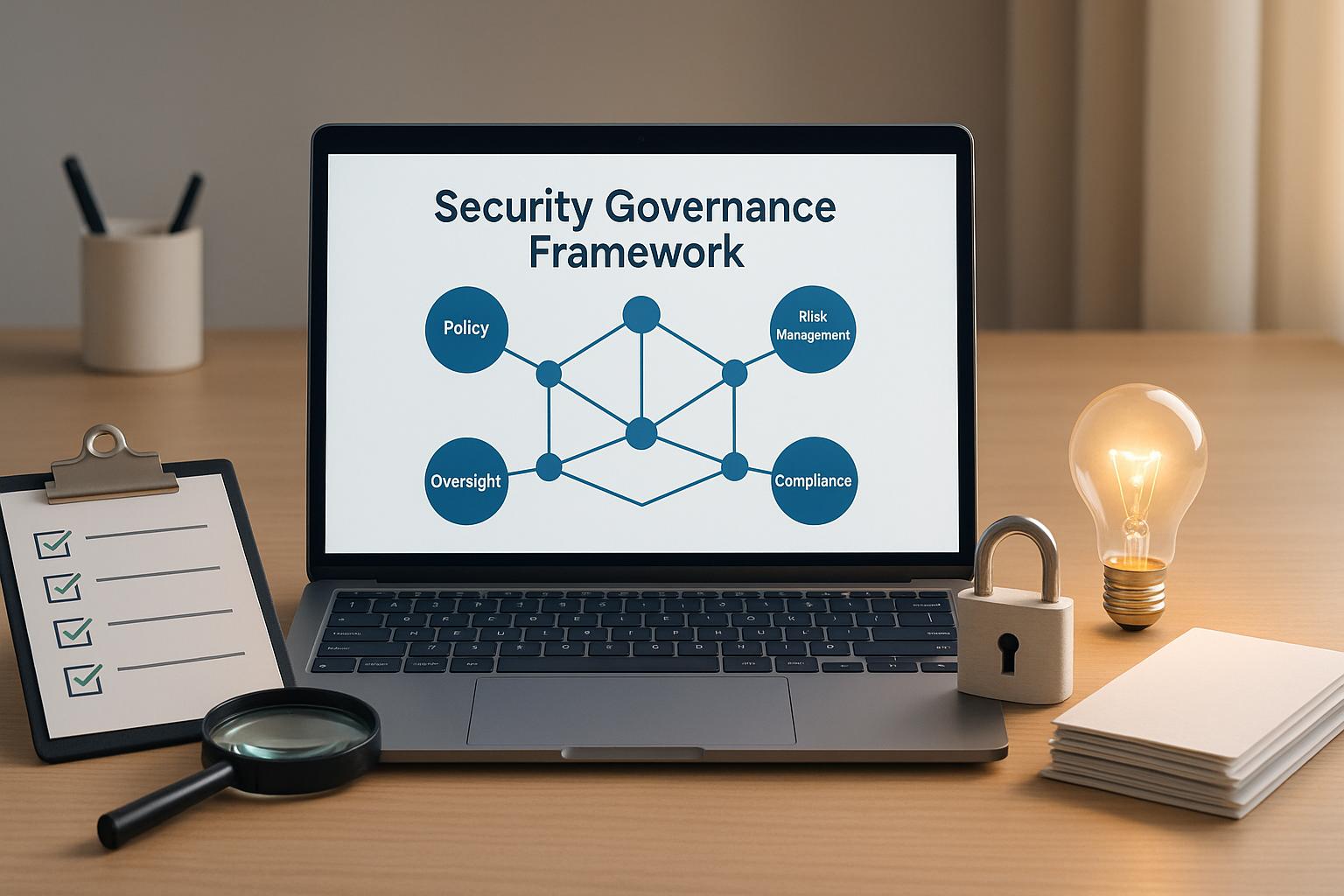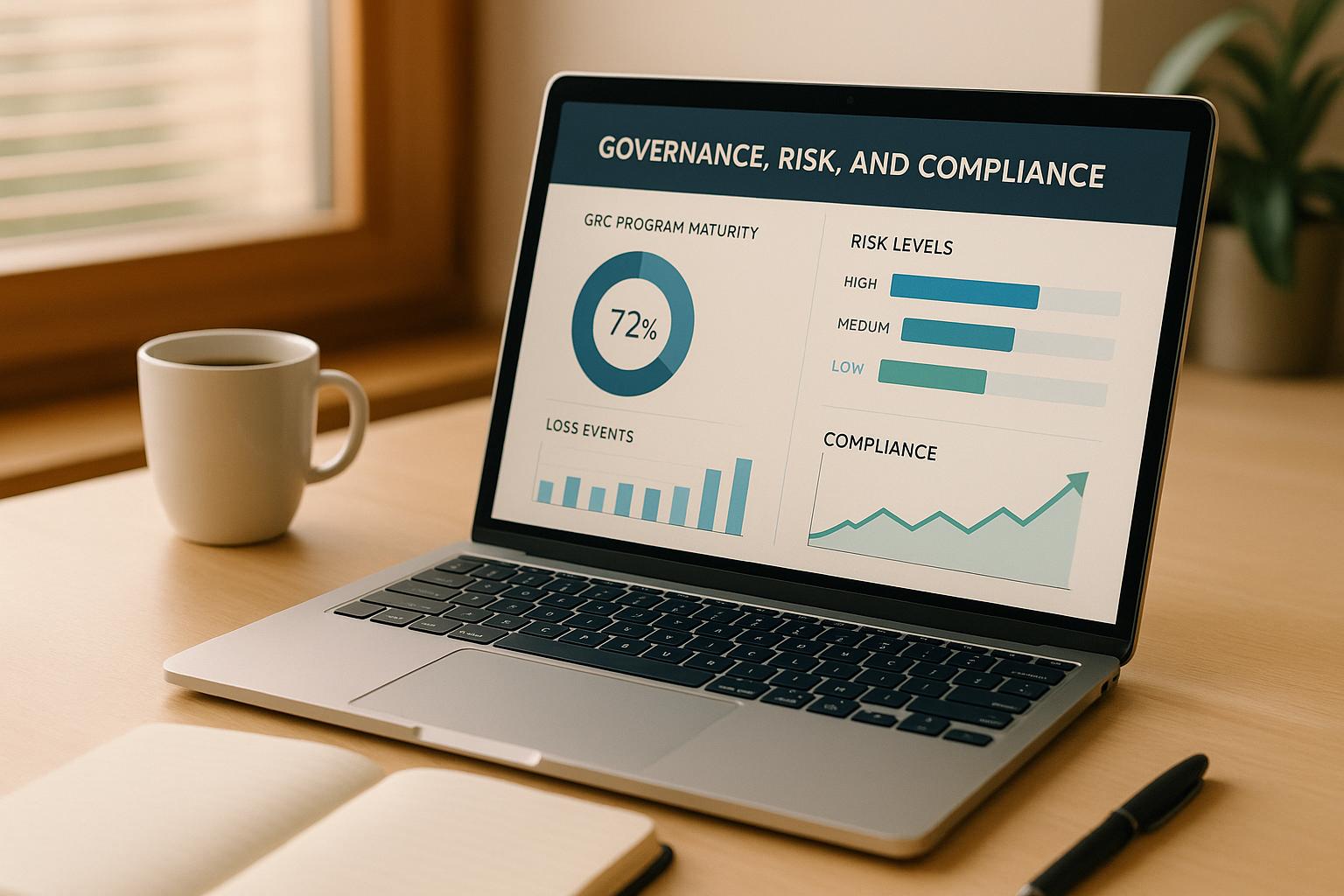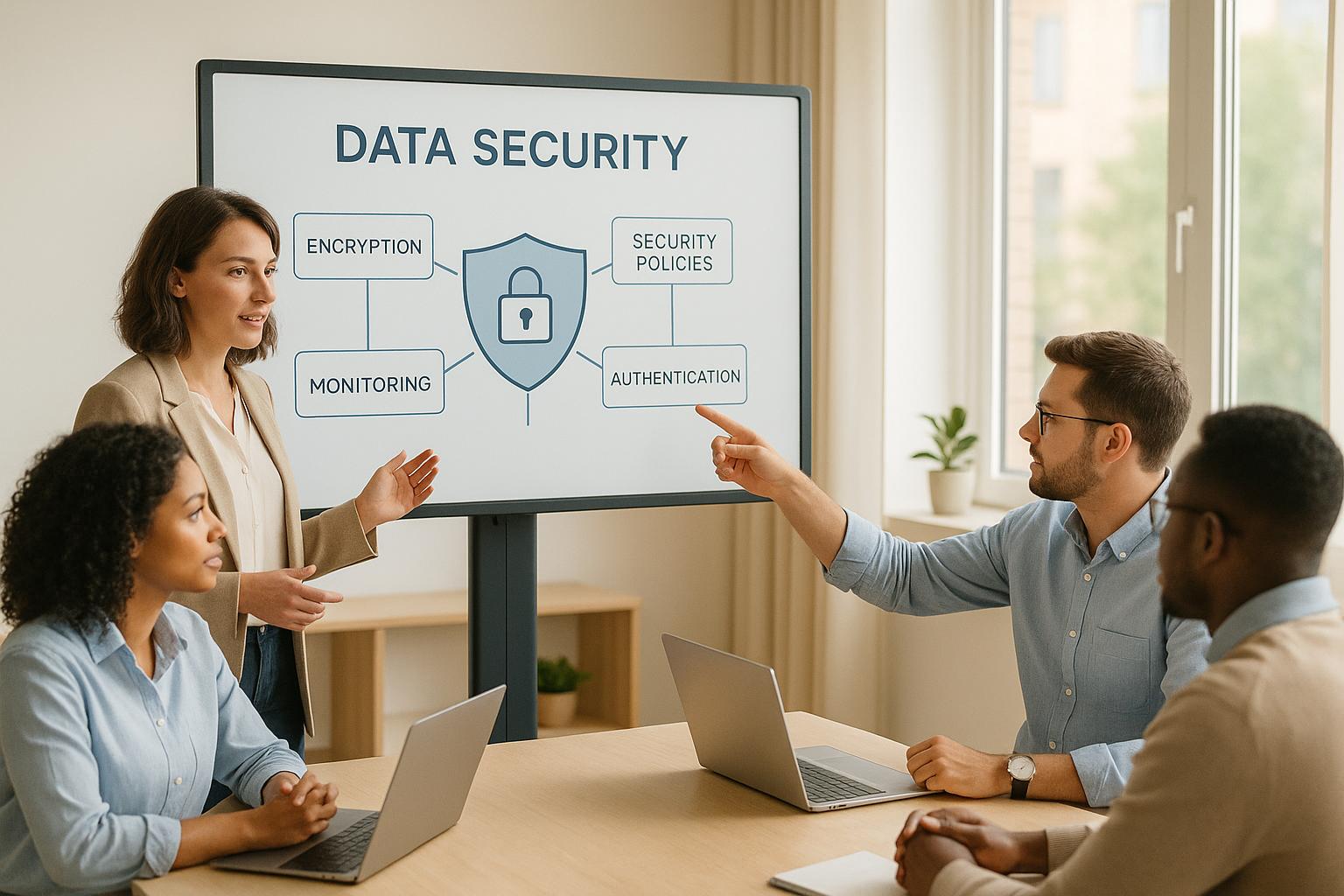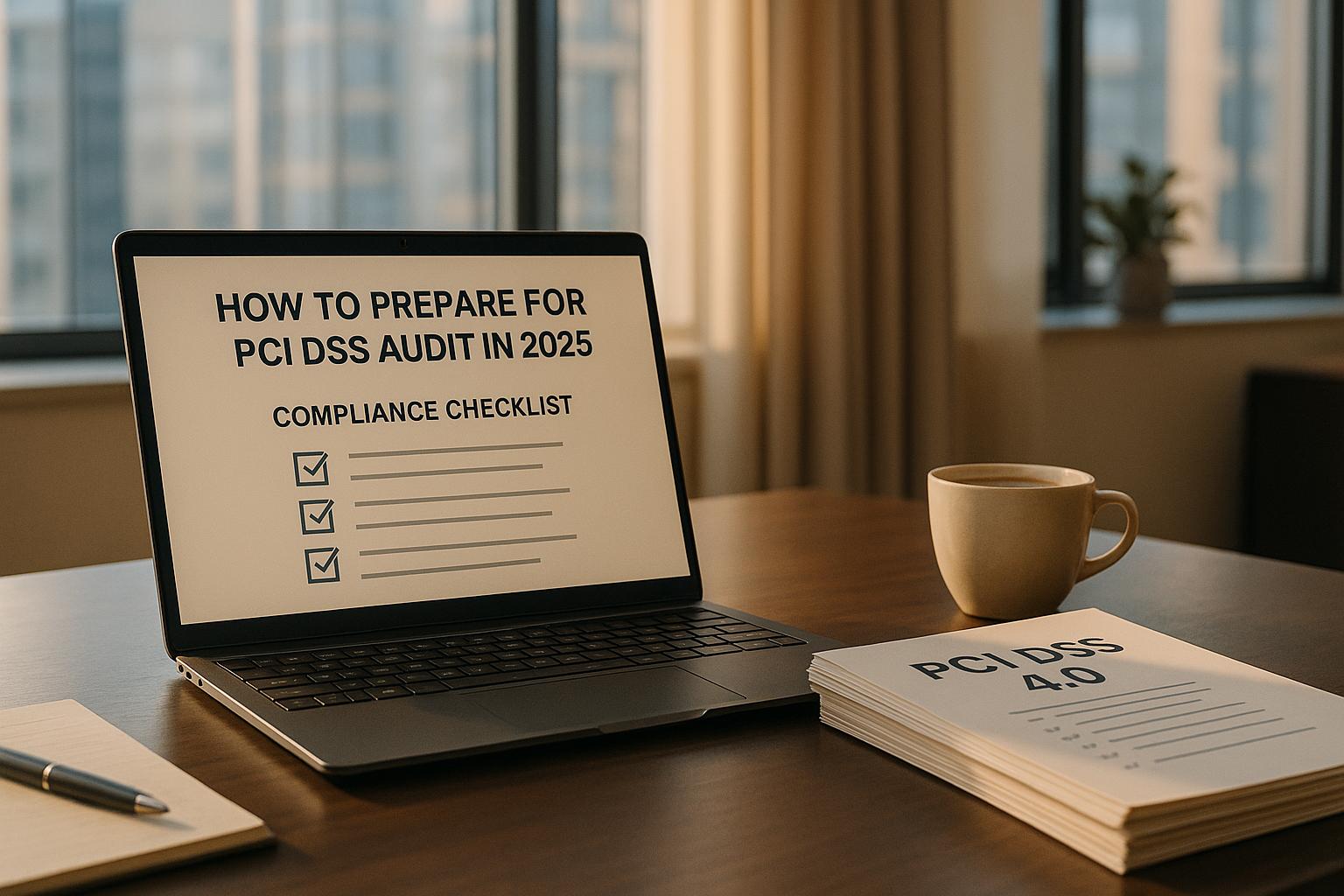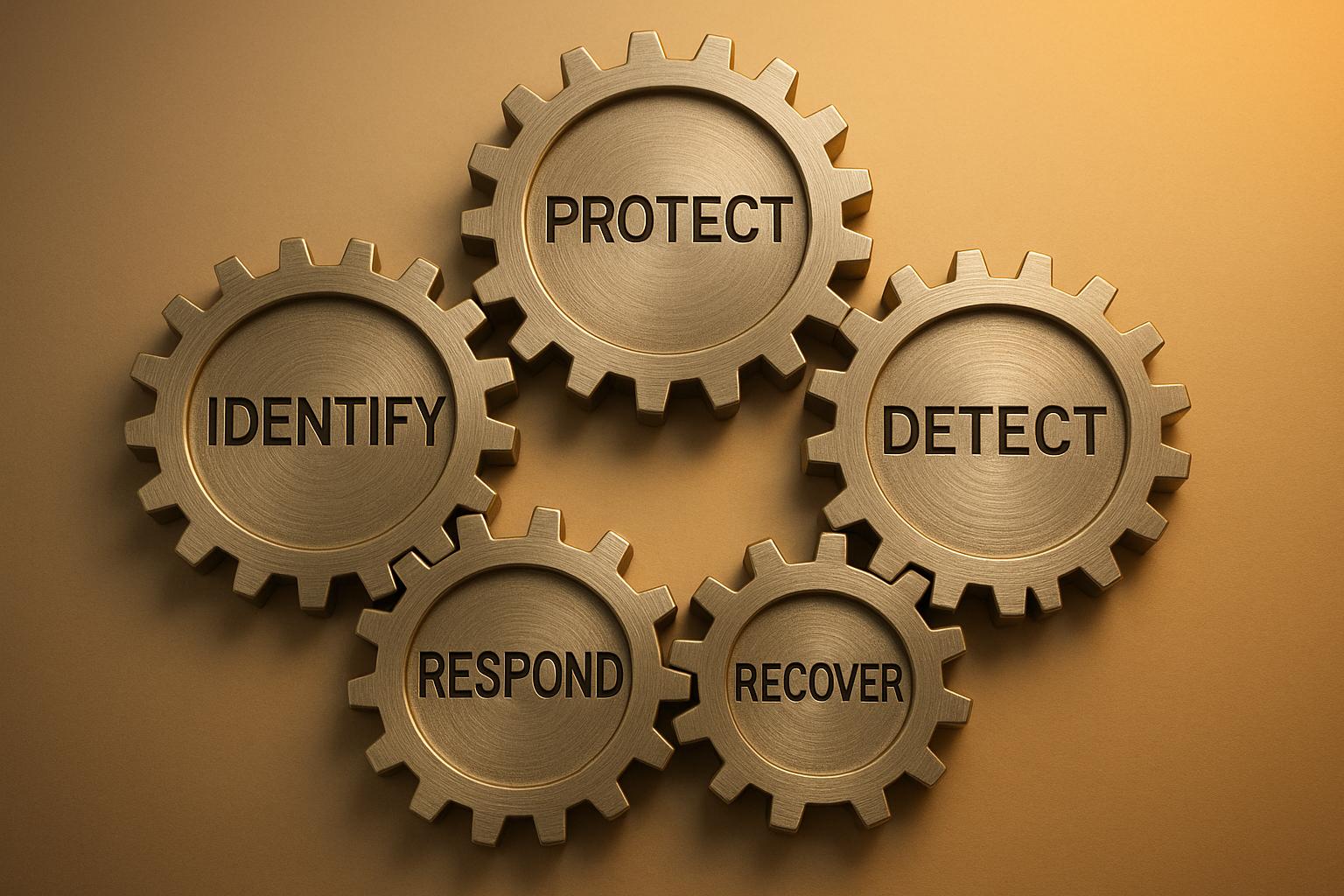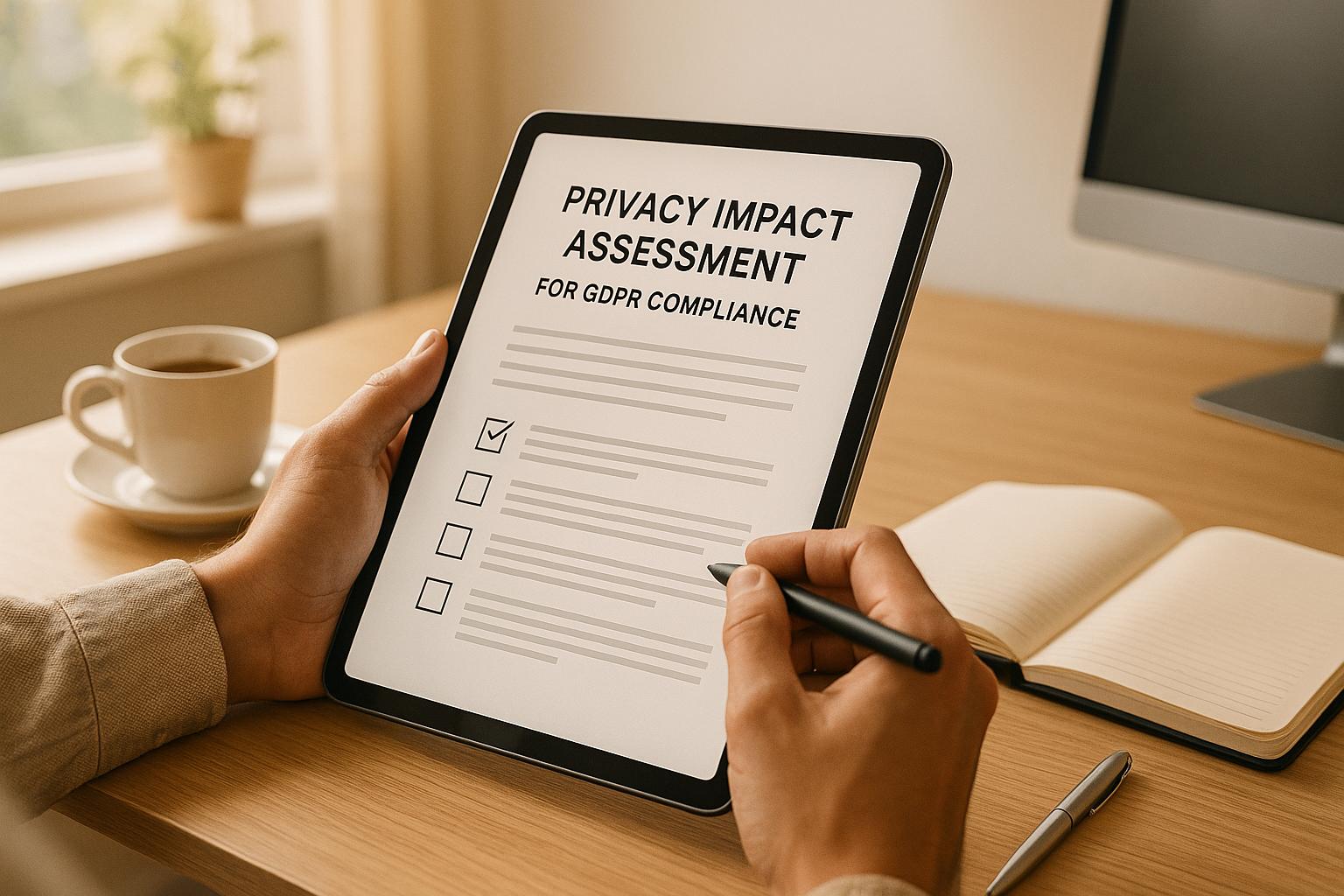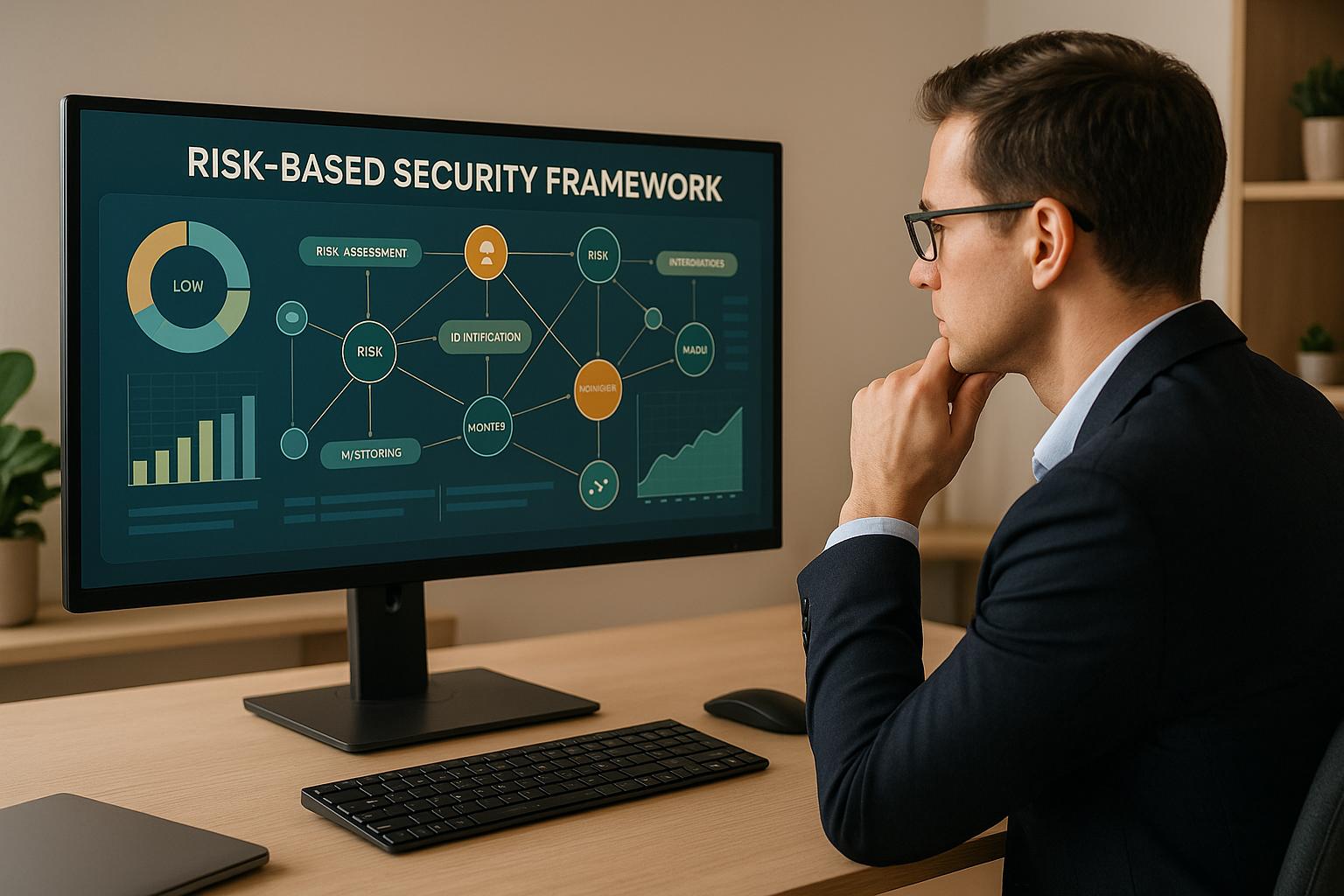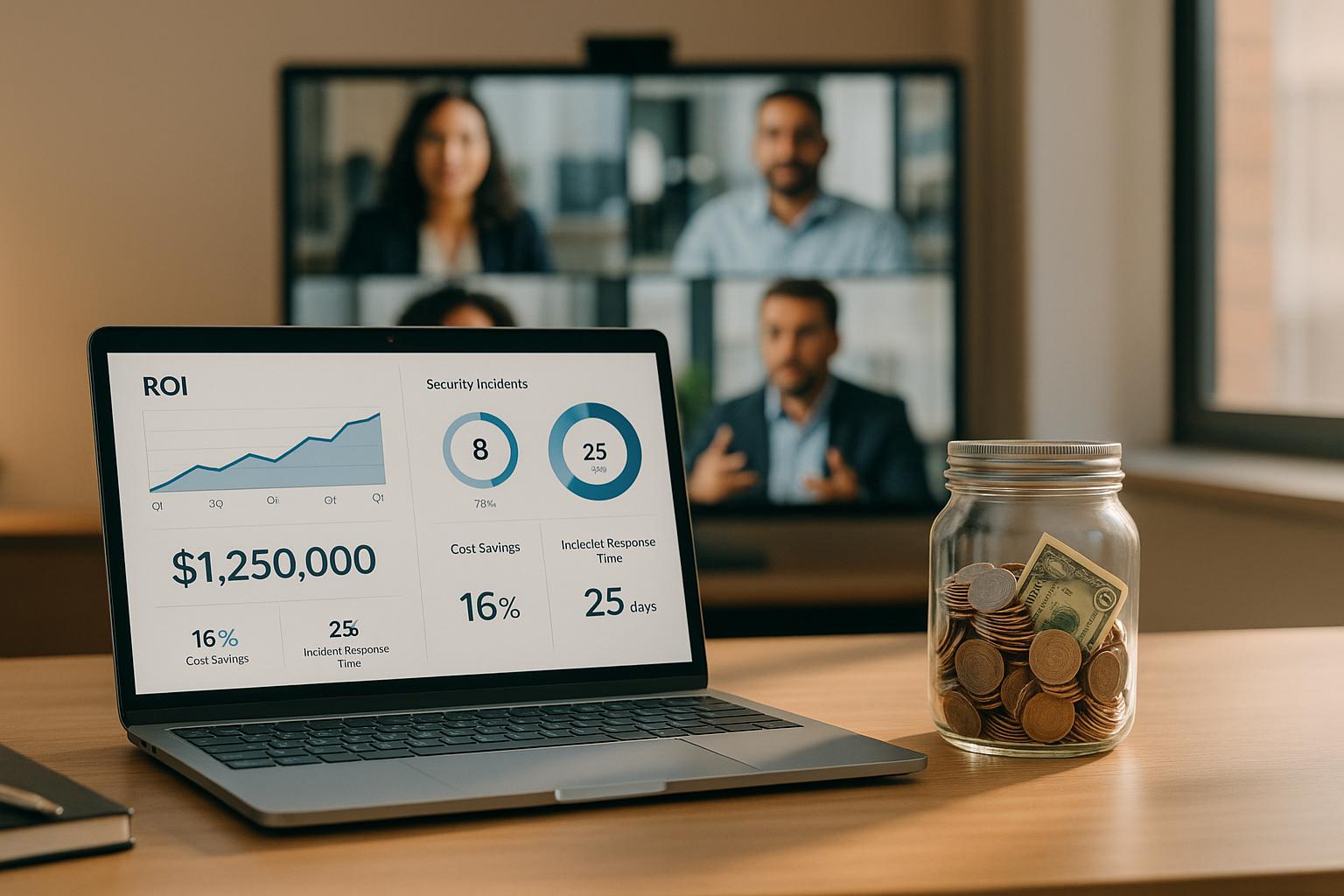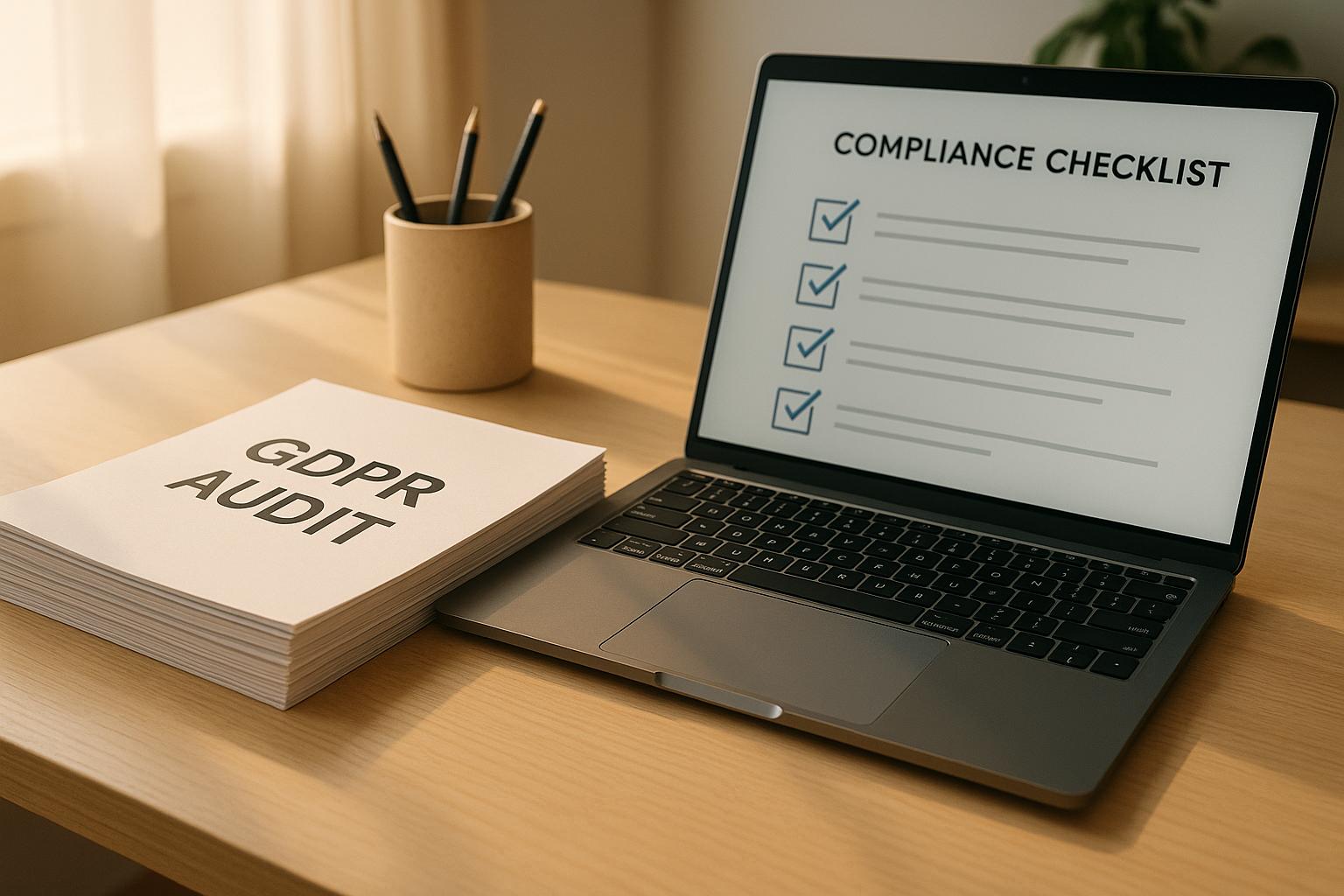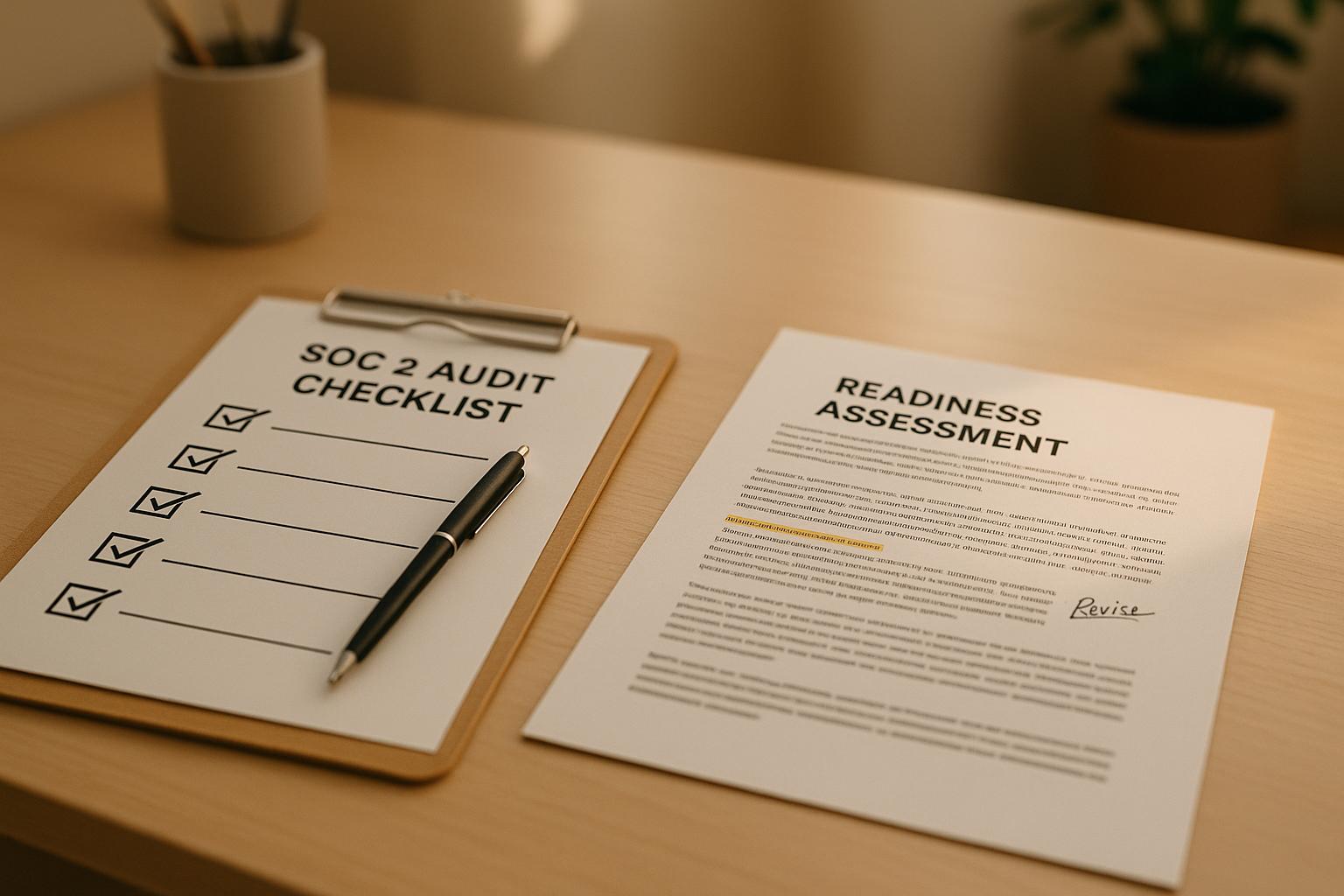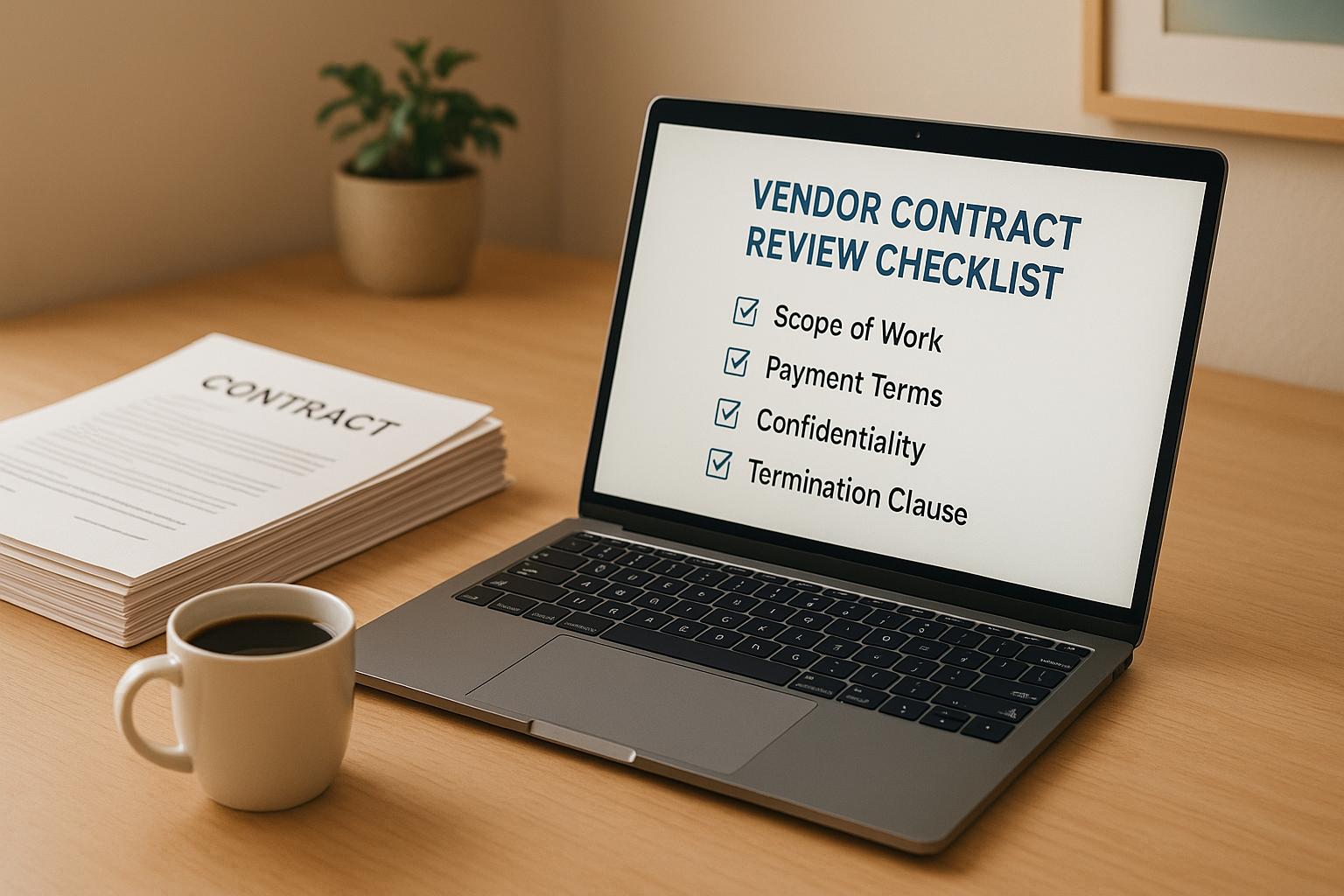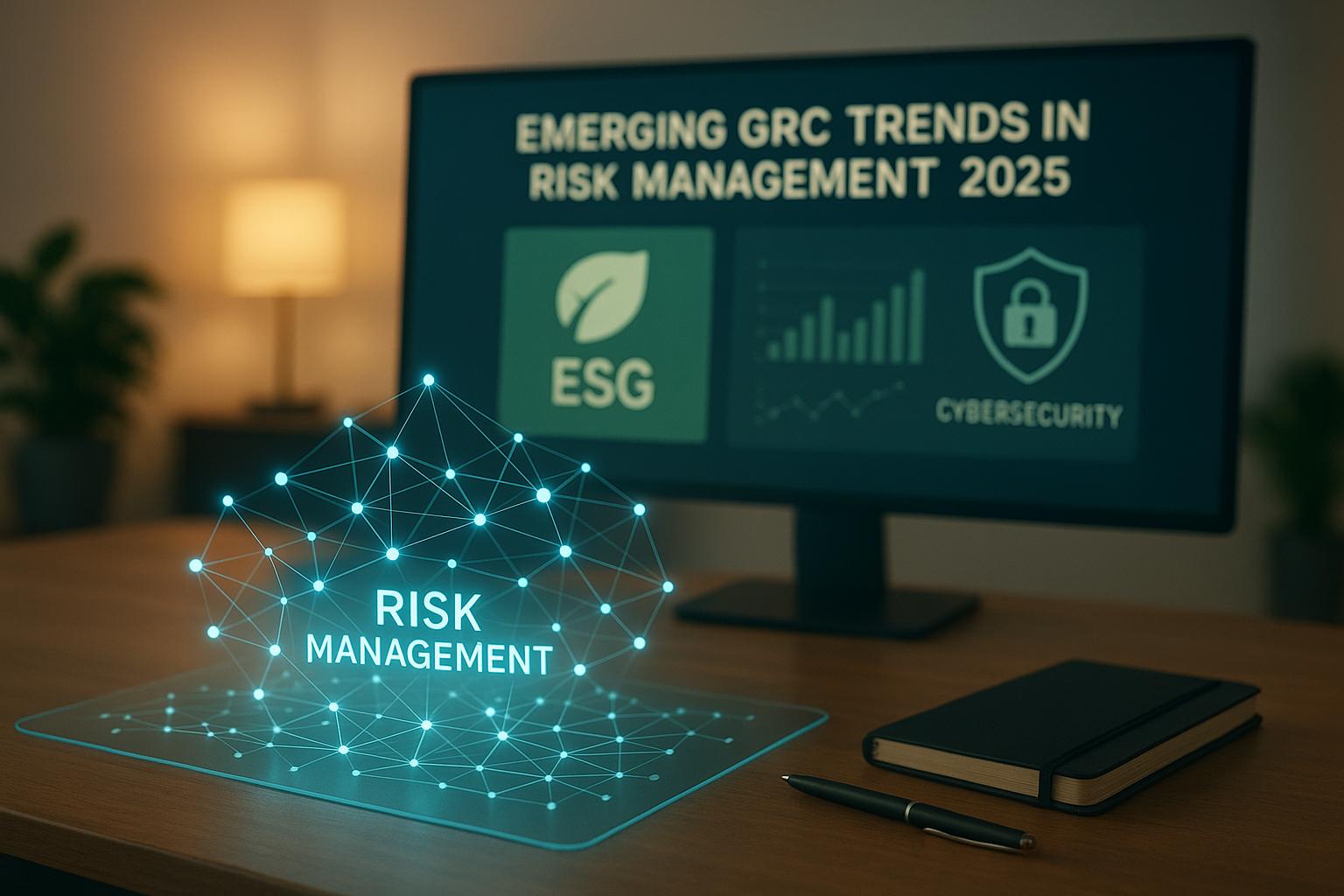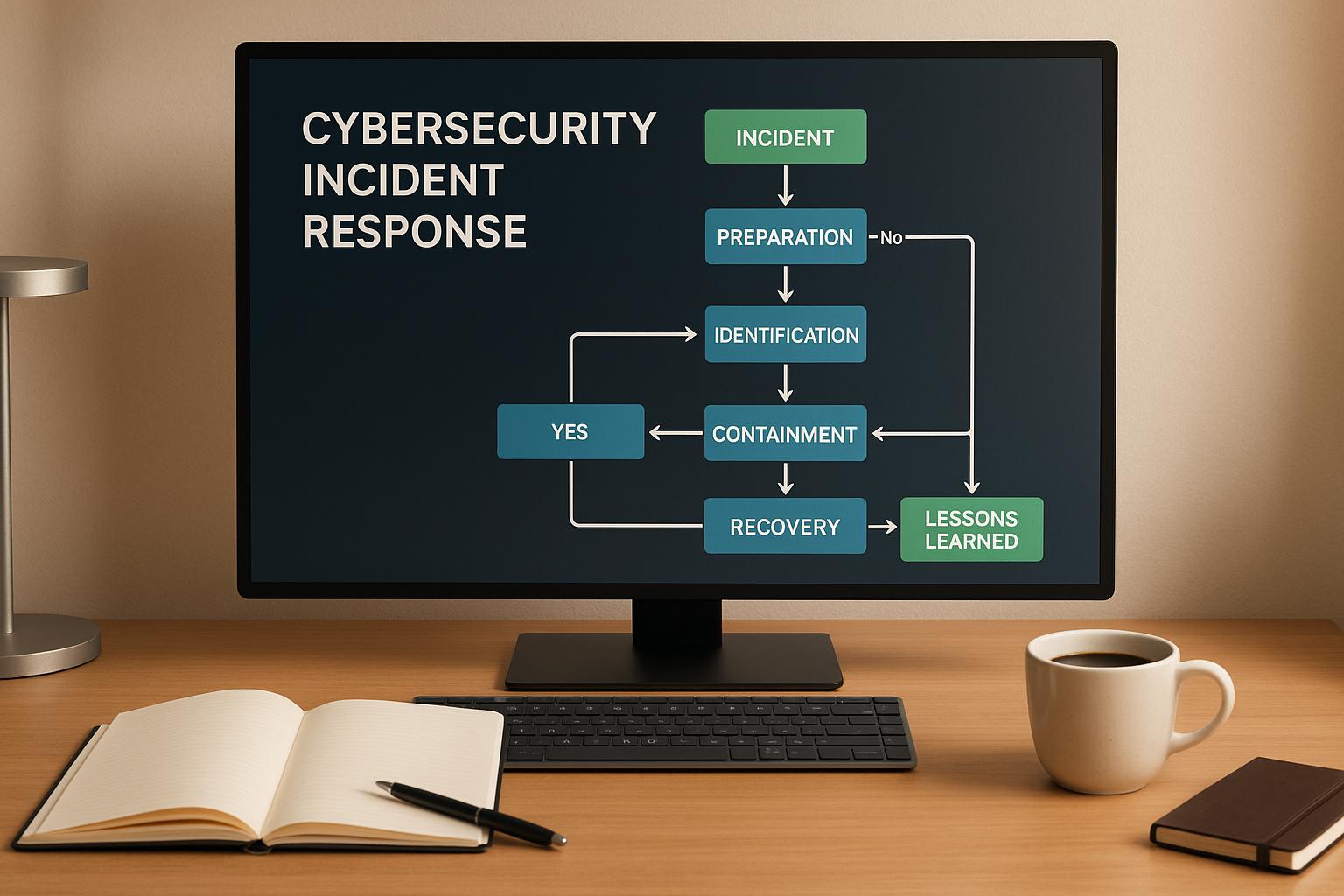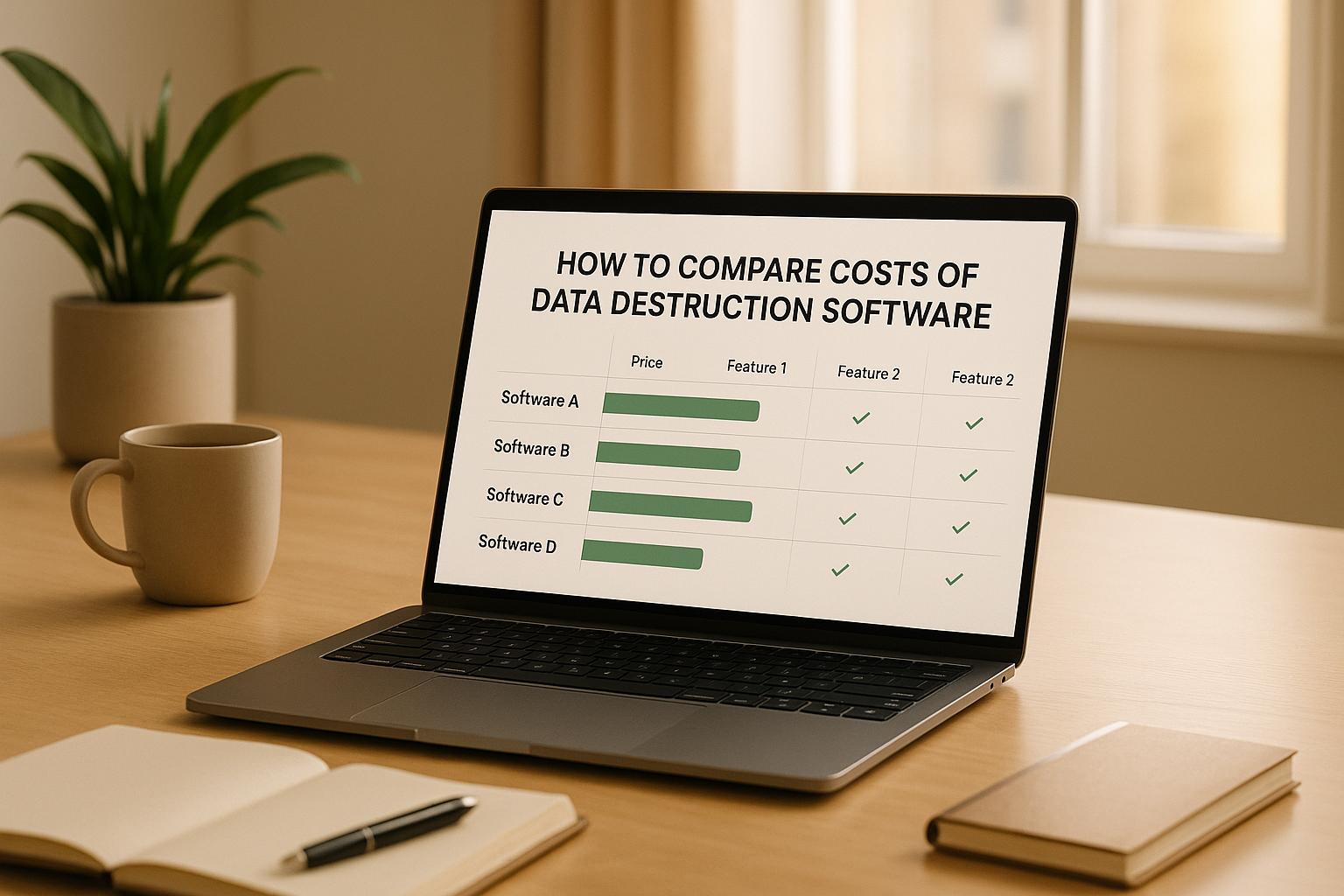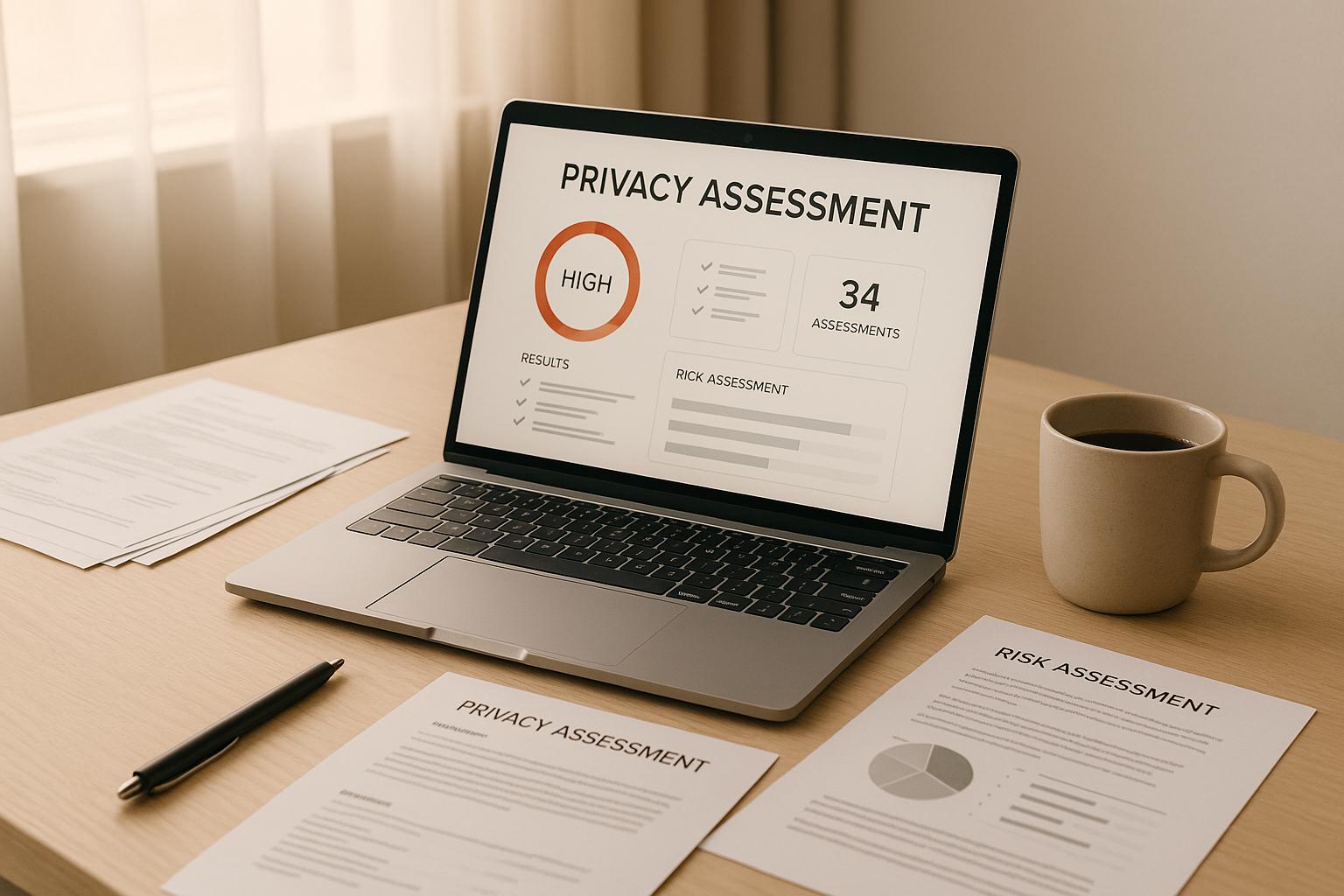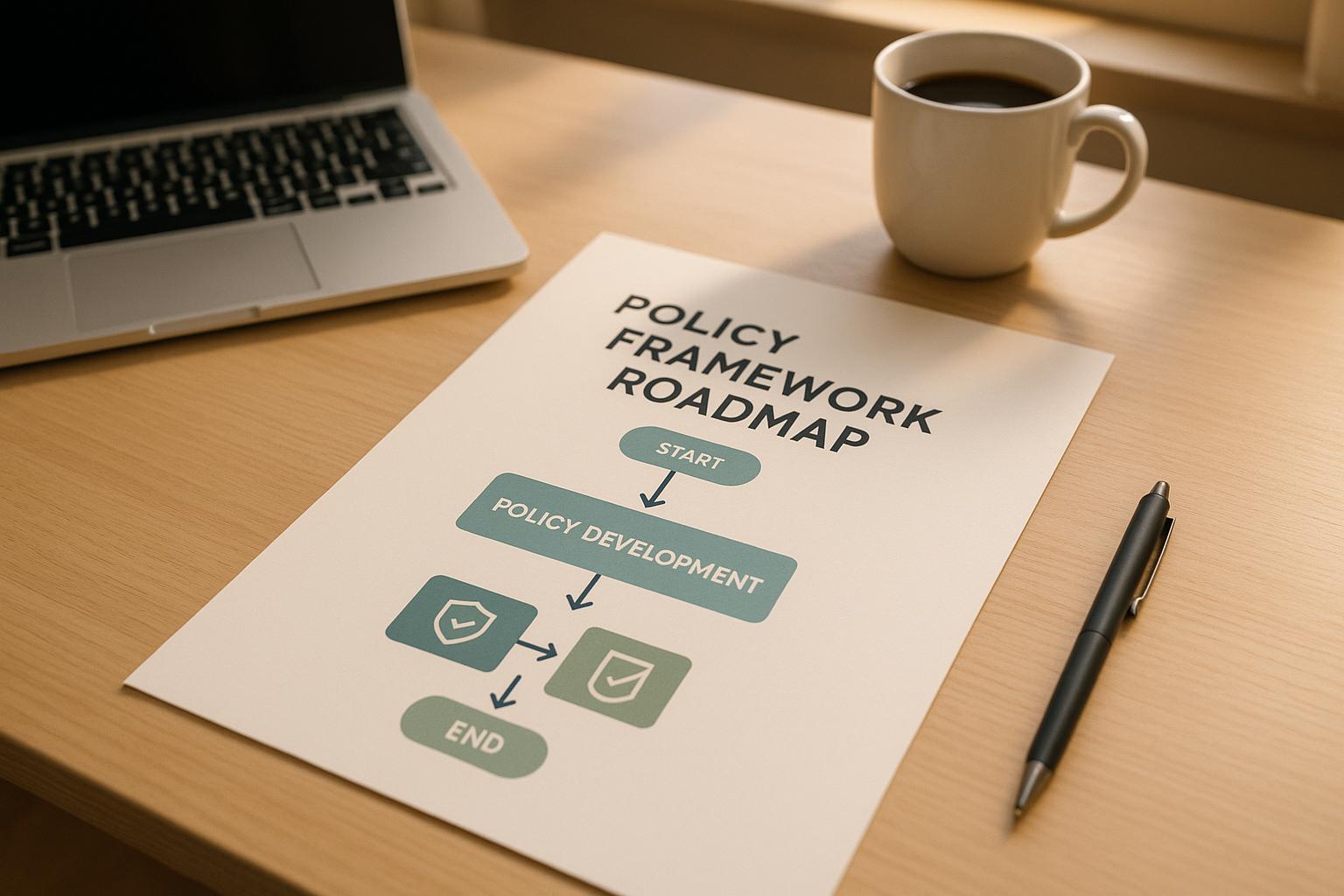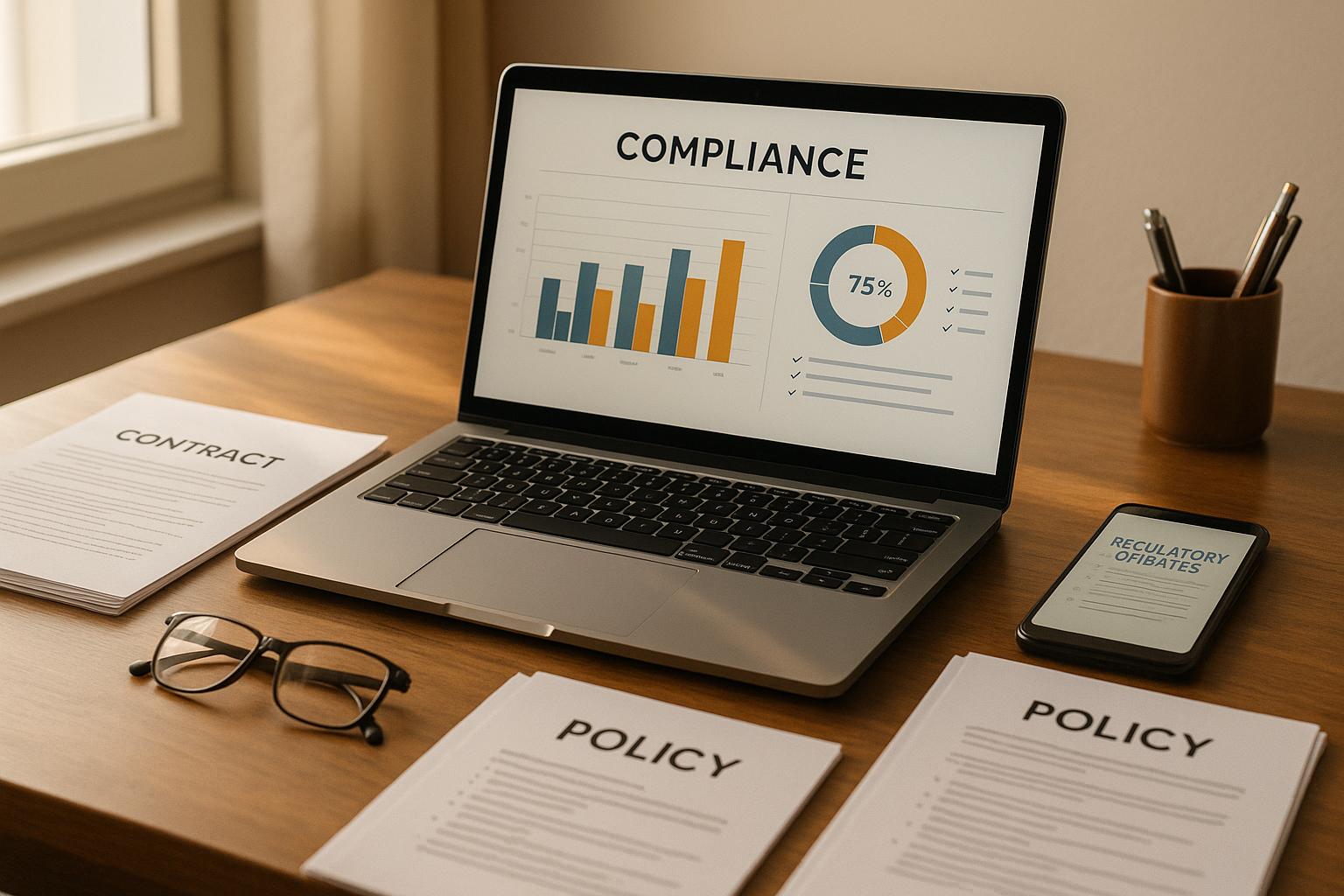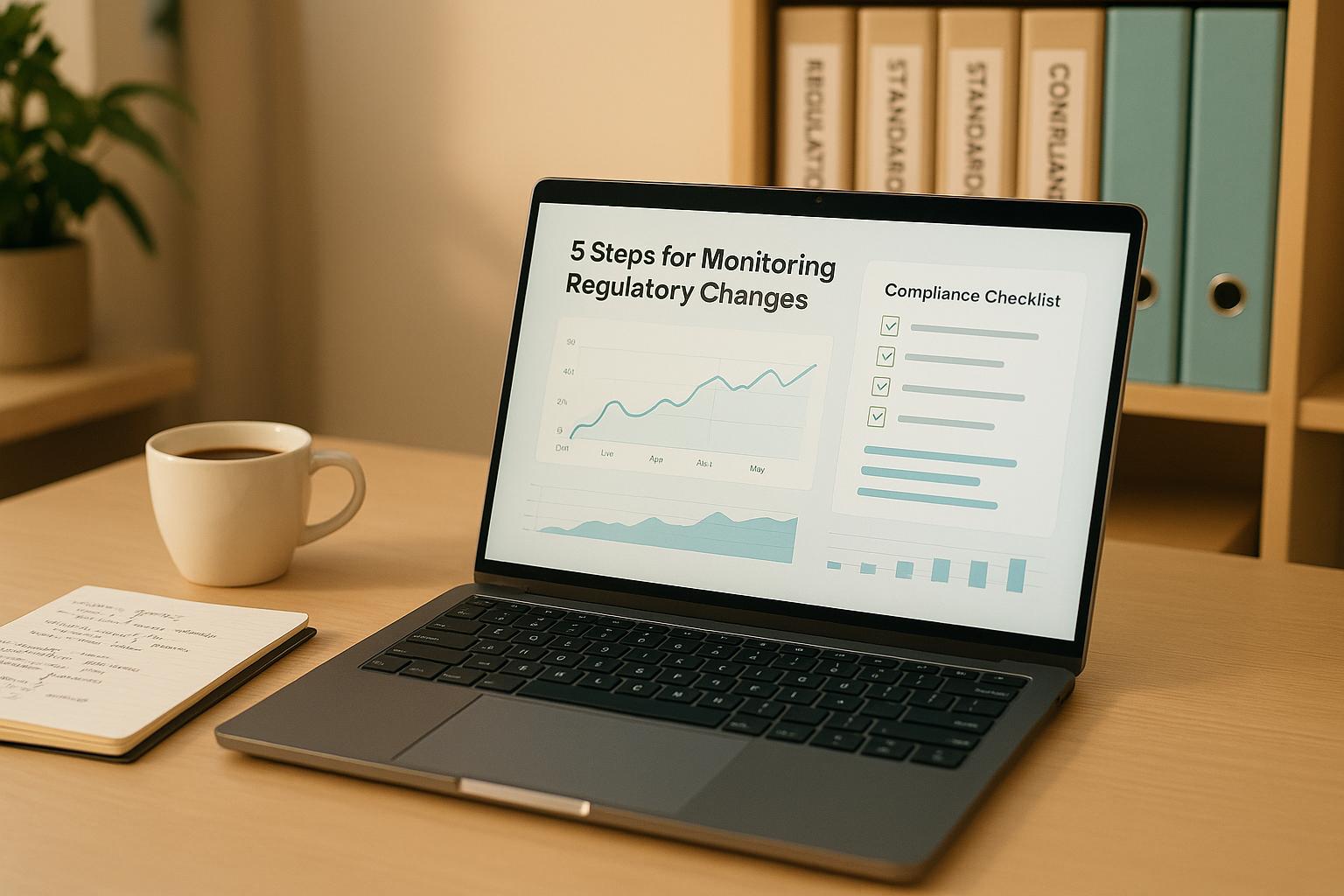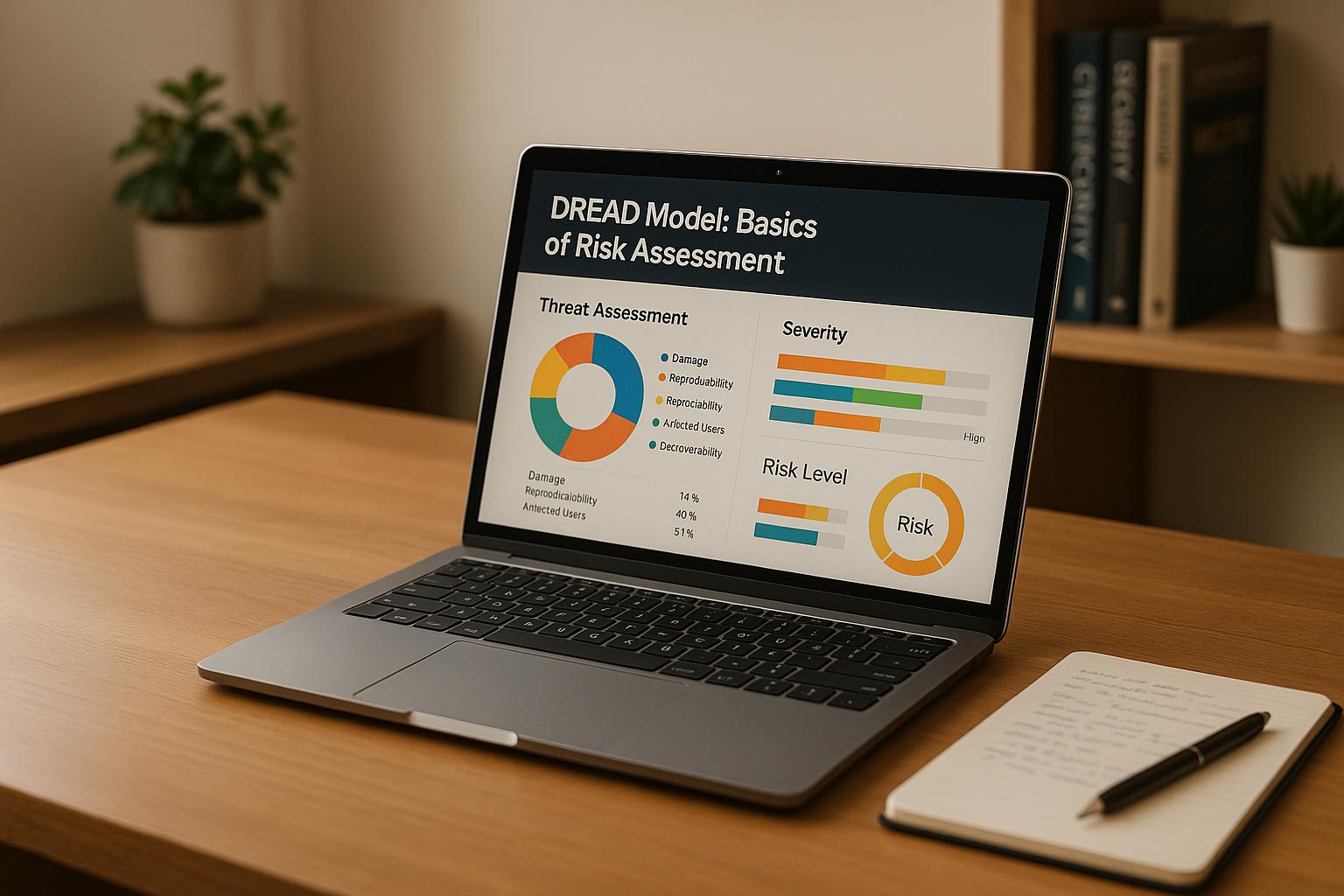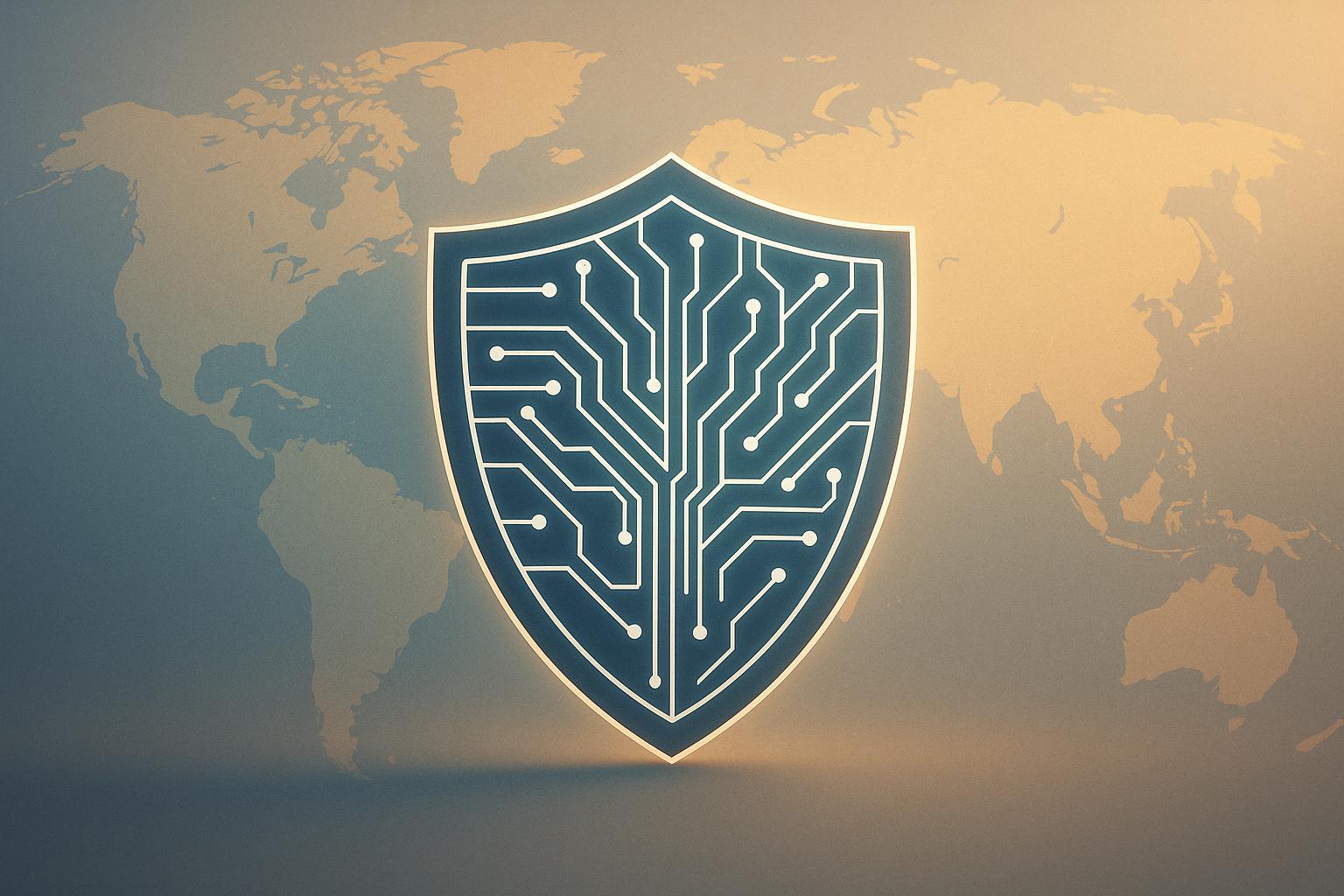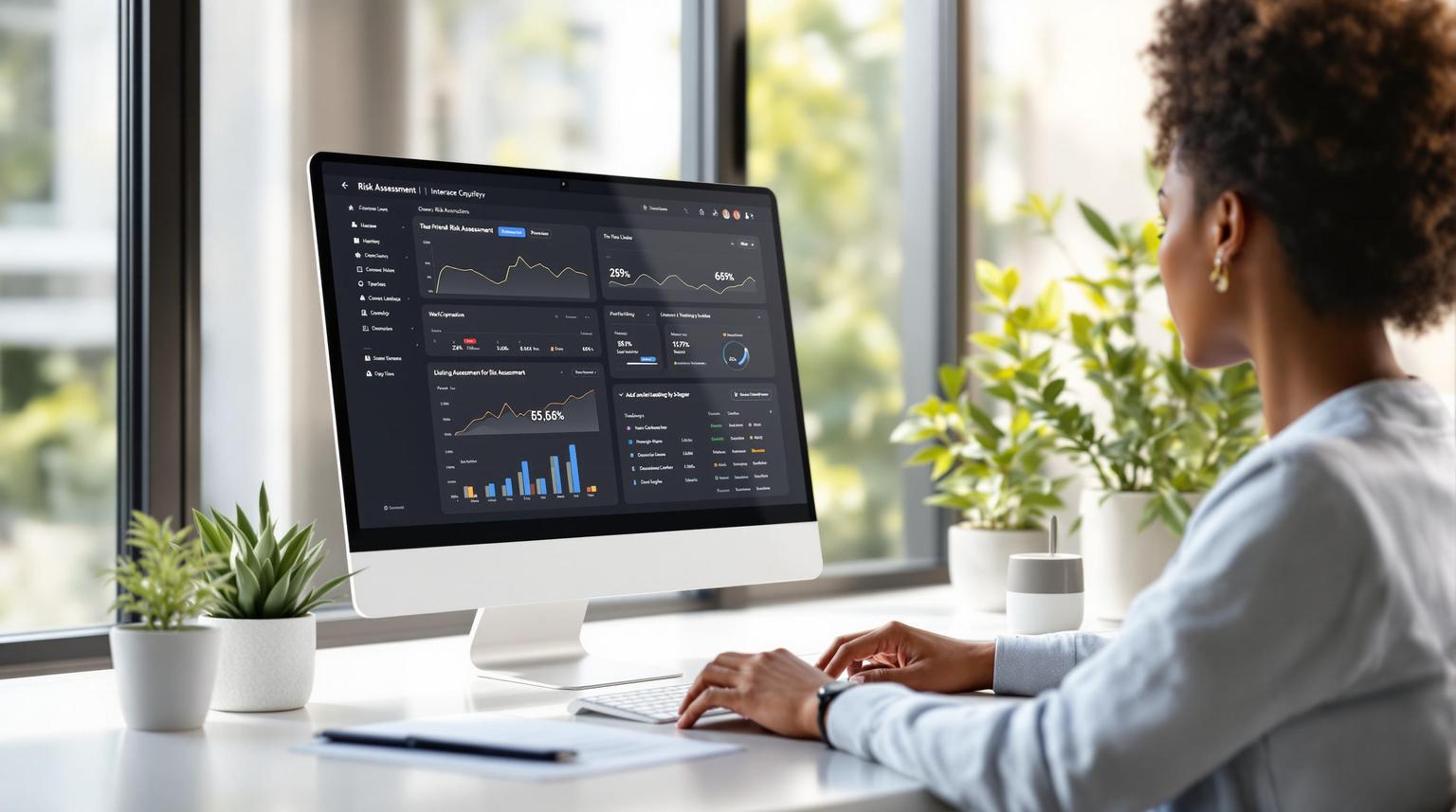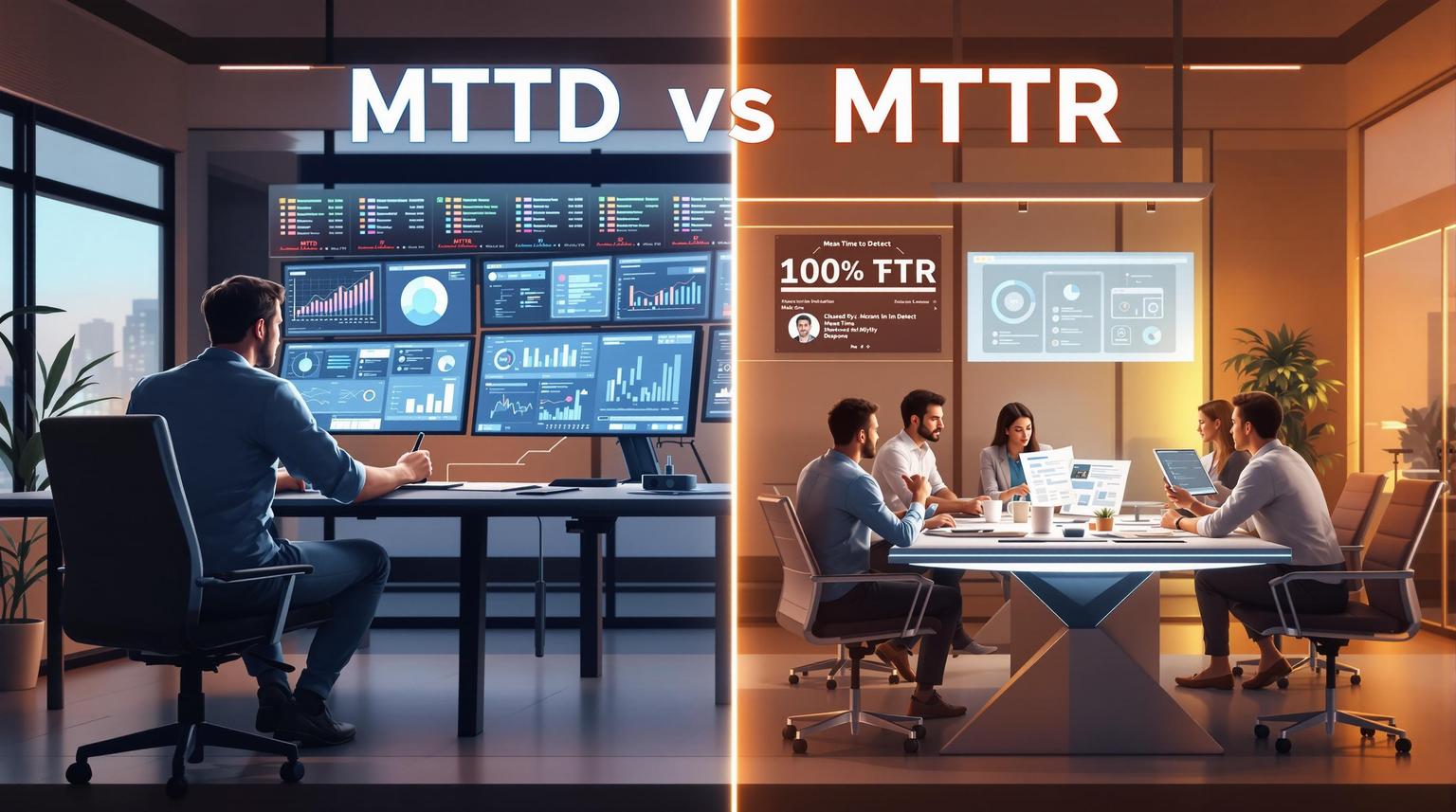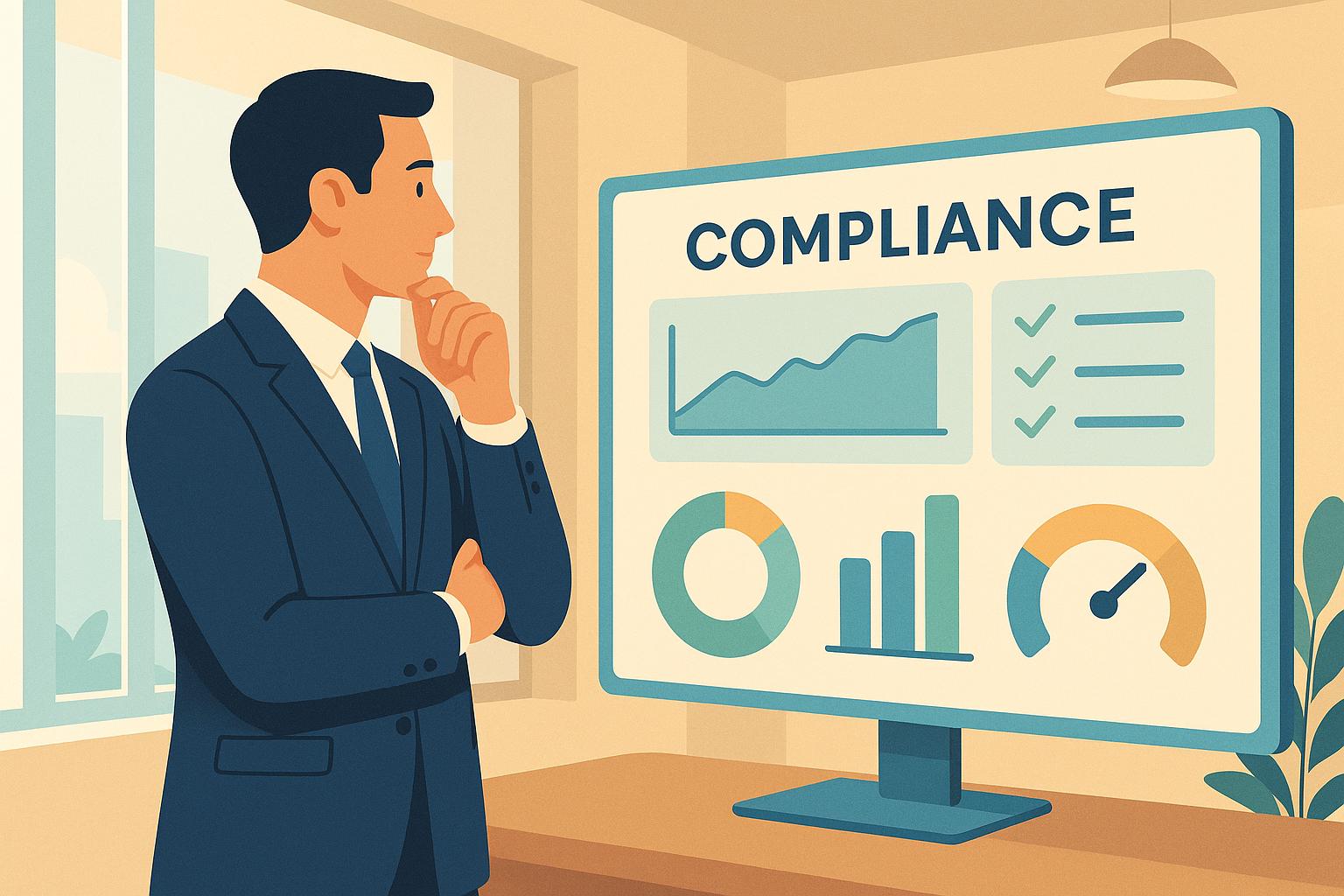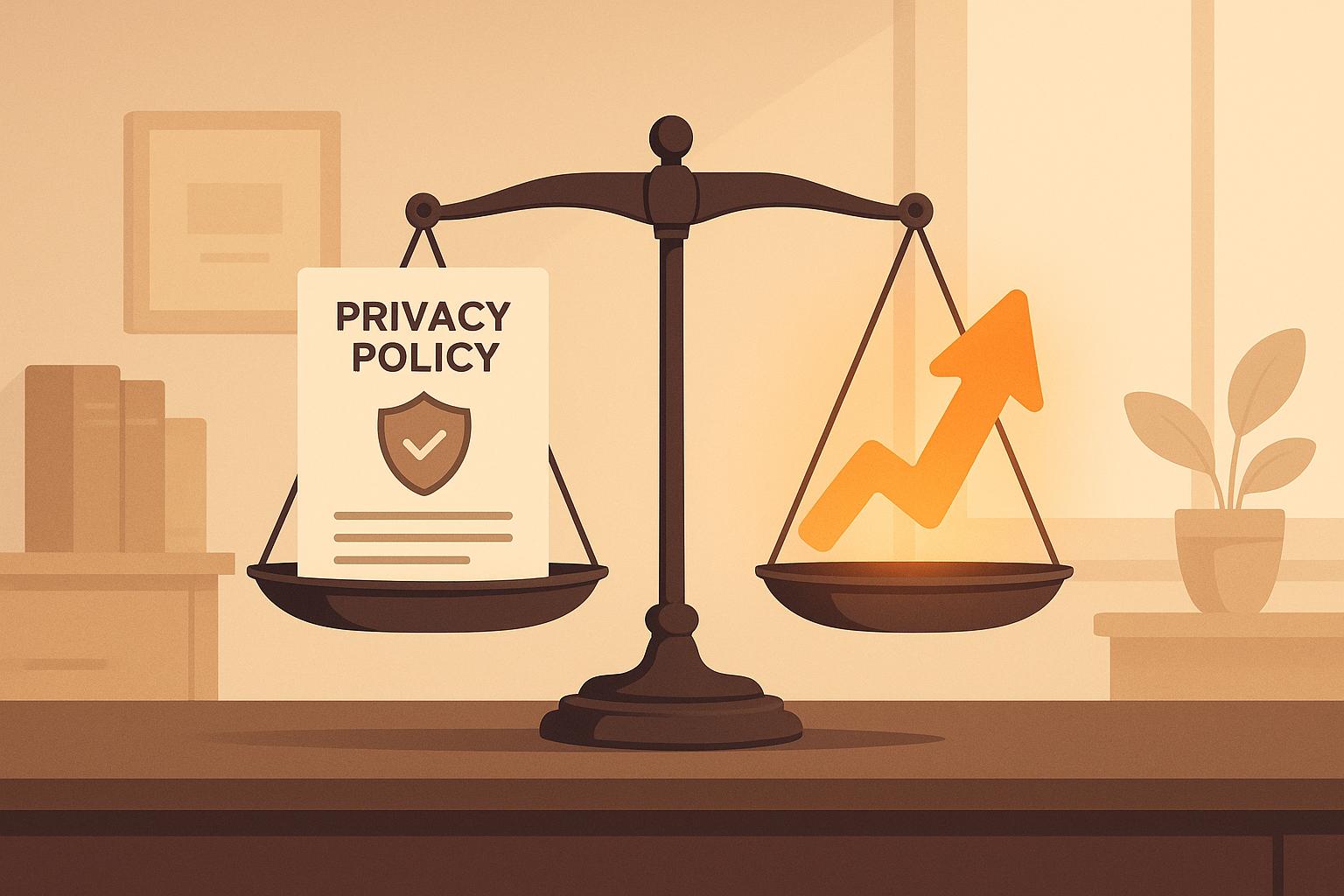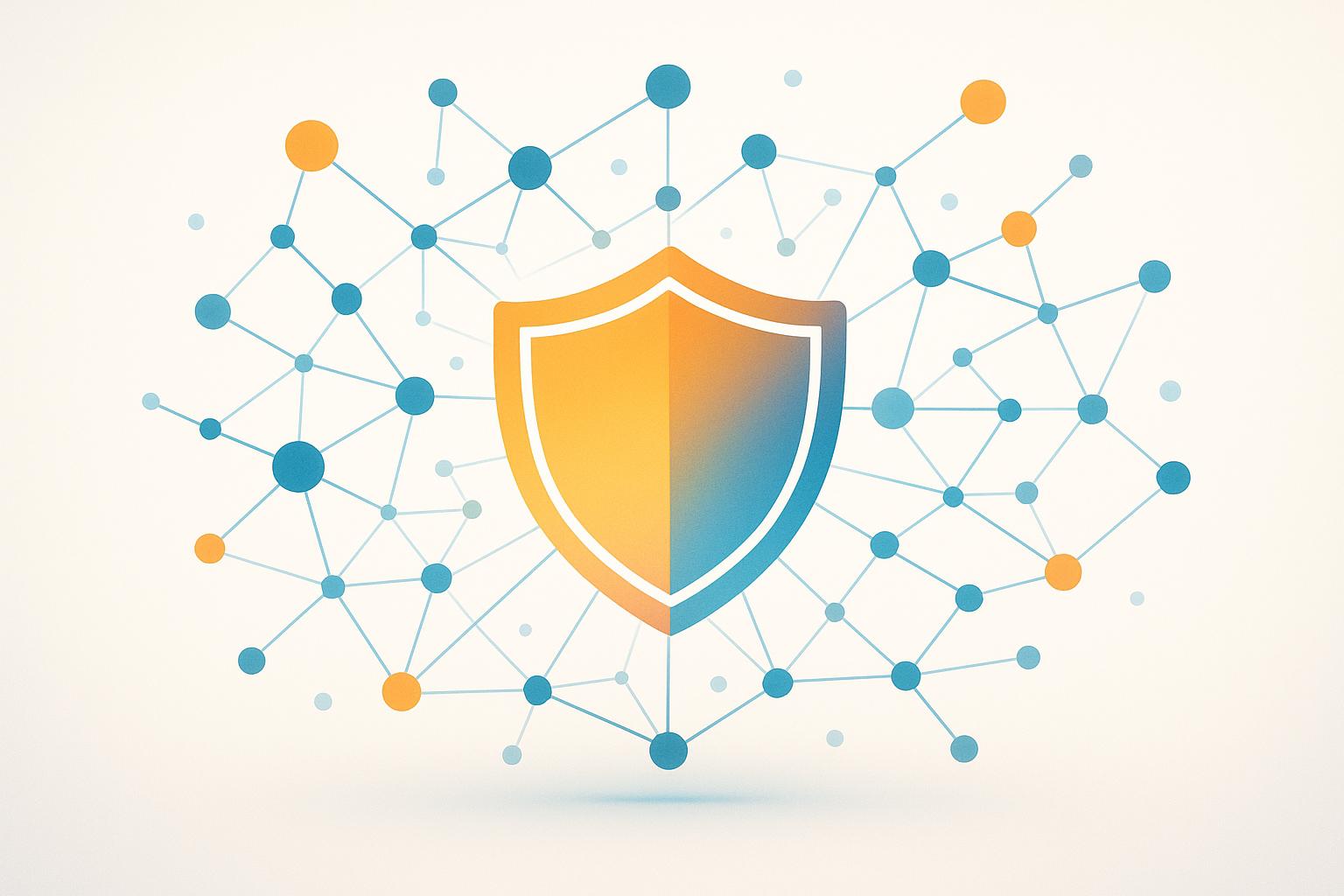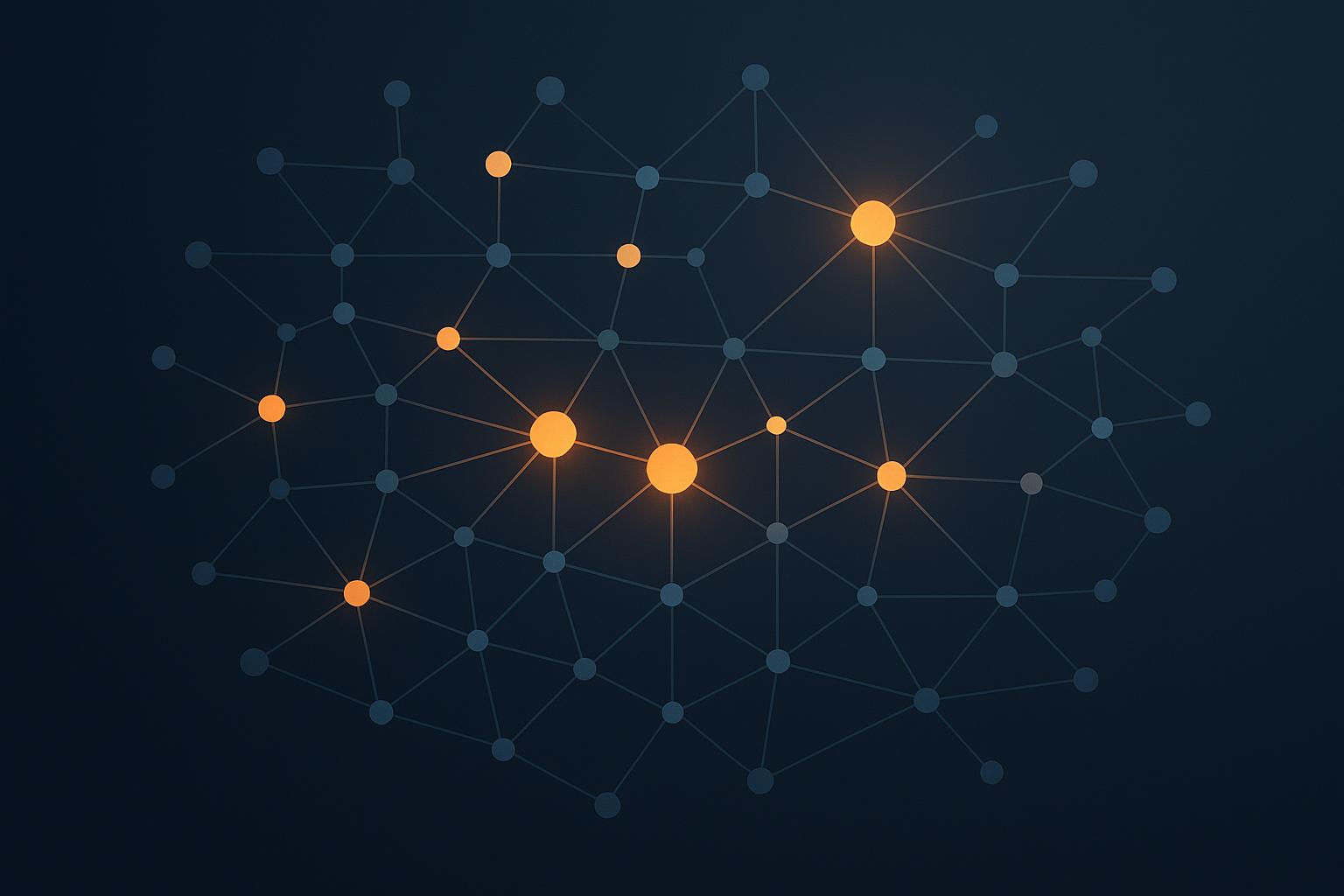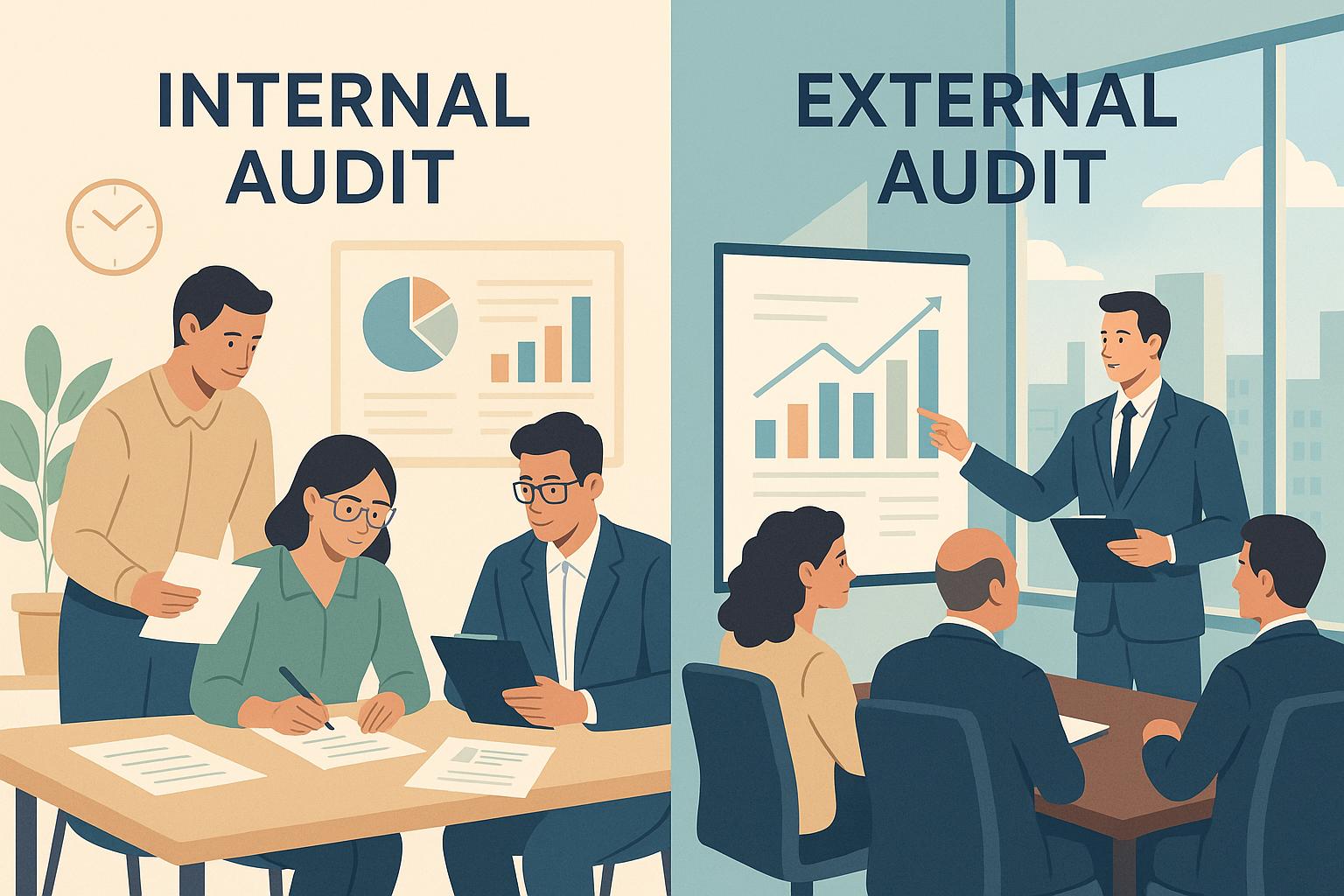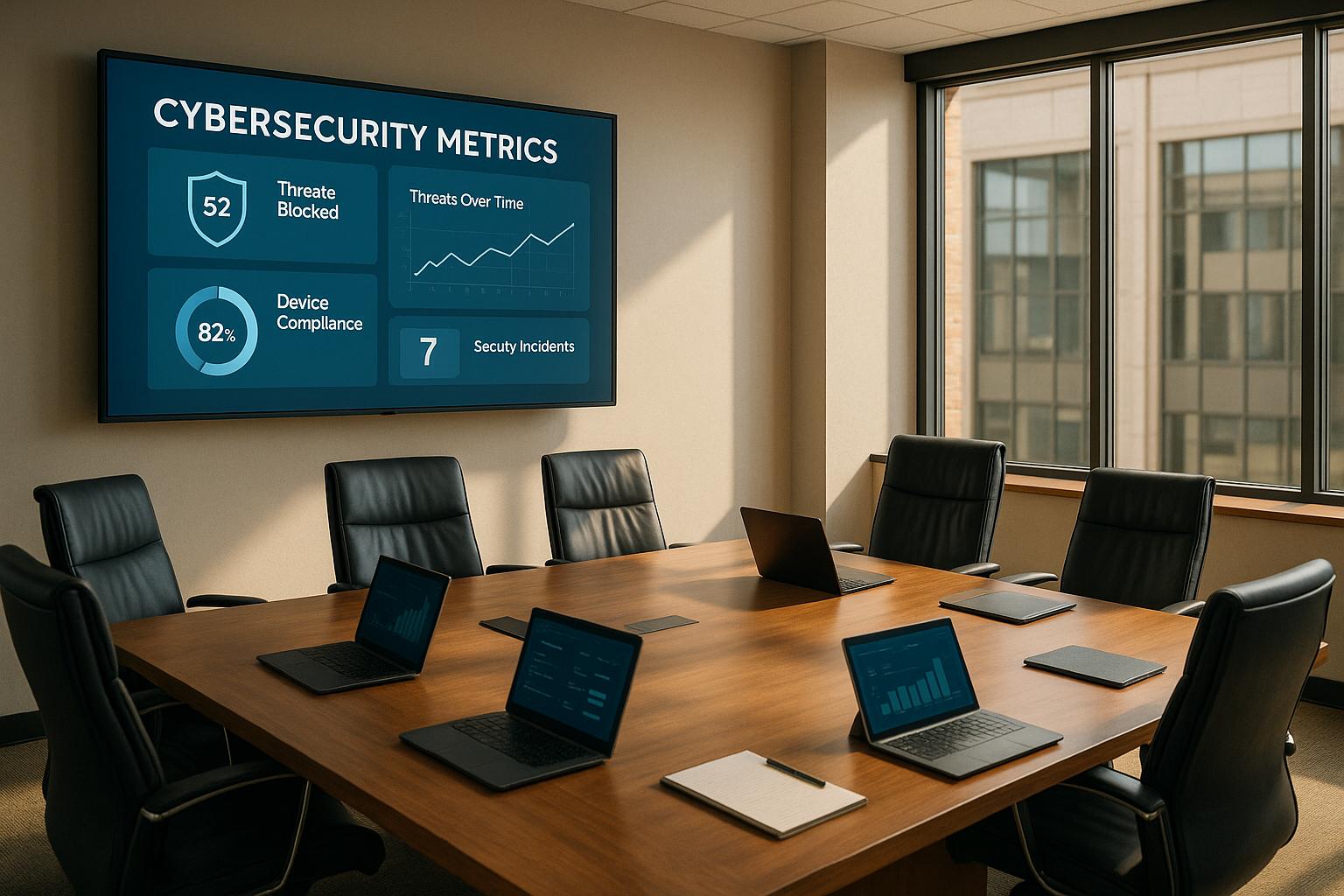
Cybersecurity metrics help boards assess risks, allocate budgets, and protect business interests. But technical jargon can create communication gaps. A vCISO bridges this divide by presenting clear, actionable insights tied to business outcomes.
Here are the top 10 metrics every vCISO should report:
-
Incident Response Time (MTTD & MTTR)
Measures how quickly threats are detected and resolved. Faster times reduce breach costs and downtime. -
Compliance Status
Tracks adherence to frameworks like SOC 2, ISO 27001, and HIPAA. Compliance builds trust and avoids penalties. -
Third-Party Risk Metrics
Monitors vendor risks, such as breaches or SLA violations, to protect supply chains and operations. -
Vulnerability Management Metrics
Focuses on patching critical vulnerabilities and reducing exposure to threats. -
Security Incident Volume & Trends
Analyzes incident patterns to allocate resources and strengthen defenses. -
User & Device Control Metrics
Tracks access permissions and device security to prevent breaches. -
Employee Security Training Metrics
Measures the effectiveness of training programs in reducing human error. -
Business Continuity Metrics
Evaluates recovery times (RTO/RPO) to ensure resilience during disruptions. -
Application & IoT Security Metrics
Assesses risks in software and connected devices to protect data and operations. -
Control Effectiveness & Maturity
Rates the organization’s security posture and readiness for emerging threats.
These metrics link cybersecurity to revenue protection, compliance, and risk management, empowering boards to make informed decisions.
Top Cyber Risk Metrics For 2025 | What Every CISO Must Report To The Board
1. Incident Response Time (MTTD and MTTR)
When it comes to cybersecurity, every second counts. Two key metrics - Mean Time to Detect (MTTD) and Mean Time to Respond (MTTR) - help measure how well your organization handles security threats. MTTD tracks how long it takes to identify a security threat, while MTTR measures the time needed to contain and resolve the issue once it's detected.
Take, for example, Microsoft's Midnight Blizzard attack, which had an MTTD of roughly two months. This delay in detection highlights the dangers of slow incident response and the potential risks to an organization.
These metrics go beyond just technical performance; they carry significant business implications.
Alignment with Business Goals
In cybersecurity, time is money - literally. A recent survey found that 98% of organizations reported downtime costs of $100,000 per hour, and 33% faced losses between $1 million and $5 million for just an hour of disruption. This demonstrates why MTTD and MTTR aren't just technical benchmarks - they're critical business metrics. Organizations with advanced cybersecurity systems often detect and contain threats within 24 to 72 hours. Faster detection and response directly translate to lower breach costs and less operational disruption. Including potential cost savings alongside these metrics can make their financial impact crystal clear.
Role in Risk Management
Efficient incident response doesn't just save money - it reduces risk. MTTD and MTTR provide a snapshot of how prepared your organization is to handle incidents. A lower MTTD reflects strong monitoring and detection capabilities, while a shorter MTTR indicates effective containment and remediation processes.
Regulatory Compliance Considerations
Speedy responses aren’t just operationally smart - they’re legally required. Regulations like GDPR and CCPA demand quick incident remediation and impose strict timelines for breach notifications. A strong MTTR is essential to meet these deadlines. Detailed incident logs, including time-to-remediate data, also play a crucial role during regulatory audits. Additionally, cyber insurance providers often factor MTTR into their underwriting decisions. Faster response times can lead to lower premiums. By improving MTTD and MTTR, organizations not only reduce their operational risks but also strengthen their compliance and insurance standing.
"A low cybersecurity MTTR directly reduces breach costs, limits data exposure, and maintains business continuity in the face of cyber threats. It reflects an organization's operational resilience." – Palo Alto Networks
Making Metrics Actionable at the Executive Level
For these metrics to drive real change, they need to be presented in a way that resonates with leadership. A vCISO should provide clear context and trends, showing whether MTTD and MTTR are improving or signaling new challenges. These insights should guide decisions on enhancing monitoring, training, and automation. By improving these metrics, organizations can reduce breach costs, protect sensitive data, and build trust.
2. Compliance Status with Frameworks (SOC 2, ISO 27001, HIPAA)
Compliance frameworks play a critical role in demonstrating an organization's dedication to safeguarding sensitive data. SOC 2, ISO 27001, and HIPAA are all designed to protect information, but each framework has its unique focus and reporting requirements that boards need to grasp. These frameworks address distinct aspects of data protection, making it vital to understand their individual roles.
SOC 2 attestation ensures that an organization has implemented the necessary security controls and policies to protect data effectively. ISO 27001, on the other hand, provides an internationally recognized standard for security certification, while HIPAA focuses specifically on the protection of healthcare information.
Alignment with Business Objectives
Compliance isn't just about meeting regulatory demands - it has a direct impact on business success. For example, enterprise clients often require SOC 2 Type II reports before signing contracts, and healthcare organizations must prove HIPAA compliance to operate legally. Aligning security policies to meet both SOC 2 and HIPAA standards can simplify compliance management by reducing redundant efforts.
By integrating compliance with business goals, organizations can address regulatory expectations more effectively while enhancing customer trust and operational efficiency.
Relevance to Regulatory Compliance Requirements
Each framework addresses different regulatory needs. HIPAA emphasizes data security, privacy, and breach notification, while SOC 2 extends its focus to include confidentiality, processing integrity, privacy, and availability. Boards need to evaluate whether current compliance efforts sufficiently address these diverse requirements.
Failing to comply with HIPAA can lead to fines and even criminal penalties, whereas non-compliance with SOC 2 might result in lost business opportunities and damage to reputation. Understanding these distinctions helps organizations link regulatory requirements to specific, measurable controls, giving boards a clearer picture of the compliance landscape.
Impact on Risk Management and Mitigation
A disjointed approach to compliance can lead to higher costs and inefficiencies. To avoid this, organizations should adopt an integrated strategy for risk assessment and control verification.
Modern compliance strategies favor continuous monitoring over one-time assessments. For instance, SOC 2 emphasizes mapping controls to evidence in real time, creating a reliable audit trail. ISO 27001 complements this by focusing on risk prioritization and iterative improvements to enhance control effectiveness. Together, these approaches minimize risk and support a more proactive compliance posture.
Clarity and Actionable Insights for Board-Level Understanding
Boards need compliance metrics that translate technical details into business-relevant insights. For example, instead of vague updates, organizations should report on measurable outcomes such as the percentage of controls implemented, tested, and verified. Key metrics might include control effectiveness rates, timelines for addressing audit findings, and progress in closing compliance gaps.
Currently, only 23% of companies report that their compliance metrics are well understood by top executives. This highlights the importance of clear and contextualized reporting. Virtual CISOs (vCISOs) should present compliance updates alongside their business implications, showing how adherence to frameworks supports customer acquisition, mitigates legal risks, and drives growth.
The best compliance reports combine current data with trend analysis, helping boards see whether the organization is strengthening its compliance posture or if new risks require immediate attention. By quantifying compliance efforts, vCISOs can provide actionable insights that help boards make informed decisions, reduce risks, and support long-term business resilience.
3. Third-Party and Vendor Risk Metrics
Third-party relationships can create significant security challenges that boards must actively monitor. With 98% of organizations worldwide tied to at least one vendor that has experienced a breach, it's clear that these partnerships represent a major area of concern. In fact, three out of five data breaches now originate through vendors. This makes tracking third-party risk metrics a critical component of effective oversight.
Alignment with Business Objectives
Third-party risk metrics aren't just about avoiding problems - they’re also key to driving growth and ensuring smooth operations. Vendors provide essential services, from cloud computing to payment processing, making their performance directly tied to a company’s success.
"Always start with the end in mind when establishing TPRM program metrics." – Josh Angert
Metrics like on-time delivery rates, cost savings, and compliance with service level agreements (SLAs) help measure vendor performance. On the flip side, Key Risk Indicators (KRIs) evaluate vulnerabilities, tracking factors like financial stability, service disruptions, and vendor dependency ratios. Together, these metrics give boards a clear view of both the benefits and risks associated with vendor relationships.
Relevance to Regulatory Compliance Requirements
Standards like SOC 2 and ISO 27001 provide valuable frameworks for managing third-party risks while meeting compliance requirements. These standards outline best practices for supplier risk management, security expectations, and monitoring. Selecting vendors with SOC 2 reports or ISO 27001 certifications ensures adherence to high security standards. For example, ISO 27001 emphasizes a structured approach to assessing and addressing information security risks.
Impact on Risk Management and Mitigation
Effective third-party risk management (TPRM) revolves around four key metric categories: risk metrics (evaluating vendor-specific risks), threat metrics (linking vendor data with external threats), compliance metrics (monitoring regulatory adherence), and coverage metrics (ensuring all vendors are accounted for). To manage these risks effectively, companies should focus on continuous monitoring, regular reviews, and prioritizing high-risk vendors. Tailoring benchmarks to a company’s size, goals, and regulatory environment ensures the process remains relevant.
"Metrics are useful for more than just getting a TPRM program budget approved. They are also crucial for making decisions relative to securing your company from vendor risks." – Chris Gida, Sr. Compliance Manager, Asurion
Key KRIs to watch include regulatory compliance violations, security breaches, vendor business continuity status, and legal disputes. These indicators help organizations spot potential problems early, reducing the likelihood of costly disruptions. By providing a full picture of vendor risks, these metrics empower companies to turn data into actionable strategies.
Clarity and Actionable Insights for Board-Level Understanding
Metrics need to be presented in a way that resonates with board members, focusing on their direct impact on the business. Boards are most interested in how third-party risks affect financial performance, risk exposure, and revenue protection. Instead of diving into technical jargon, vCISOs should highlight metrics that influence revenue, fraud risks, or brand reputation.
Effective board reports should answer four essential questions: What are the risks? How are they being managed? What events could have a material impact? And how resilient is the program in the face of incidents?. The best reports combine current risk data with trend analysis, showing whether vendor relationships are becoming more secure or riskier over time. By framing vendor risks in business terms, vCISOs help boards make smarter decisions about contracts, risk mitigation, and investment priorities.
4. Vulnerability Management Metrics
In 2024, more than 40,000 CVEs (Common Vulnerabilities and Exposures) were reported, with 33% classified as critical or high severity. These numbers highlight the importance of vulnerability management in safeguarding business operations and financial stability. It’s clear that aligning remediation priorities with key business goals is no longer optional - it’s essential.
Alignment with Business Objectives
Vulnerability management metrics serve as a bridge between technical security efforts and broader business objectives. They provide a clear picture of how well remediation strategies are working and how effective patching efforts are, enabling organizations to focus on protecting their most critical systems and applications. For boards, the primary concern is understanding how these metrics affect revenue-generating systems and the security of customer data.
The focus here is on patching critical systems as quickly as possible, with the ultimate goal of minimizing downtime, maintaining customer trust, and preserving competitive advantage.
Relevance to Regulatory Compliance Requirements
Vulnerability metrics play a key role in meeting regulatory compliance standards. They provide tangible evidence of a robust security posture and adherence to frameworks like SOC 2, ISO 27001, and HIPAA. These standards often require regular vulnerability scanning as a core control. Consistent monitoring and reporting of vulnerability management efforts are crucial for passing audits and staying compliant.
This is especially important given the growing number of vulnerabilities. For instance, the National Vulnerability Database reported over 25,000 vulnerability types in 2022 - a 20% increase from the previous year.
Impact on Risk Management and Mitigation
The speed at which vulnerabilities are managed directly affects an organization’s risk exposure. Attackers can exploit vulnerabilities in as little as five hours, with most attacks occurring within 12 days. Metrics help organizations prioritize vulnerabilities based on their risk levels and potential business impact, ensuring resources are allocated effectively.
Key metrics, such as mean time to patch critical vulnerabilities, trends in vulnerability backlogs, and remediation rates by system criticality, allow boards to assess how well the organization is addressing emerging threats.
"What gets measured gets managed." - Peter Drucker
Clarity and Actionable Insights for Board-Level Understanding
When reporting to the board, CISOs must simplify technical details and focus on business-relevant insights. This means framing cyber risks in terms of financial impact, risk exposure, and revenue protection.
"CISOs need to balance their messaging to the board without giving them too many details as to what is happening at the back end of their shops...The CISO should focus the metrics on anything that impacts revenue, fraudulent activities, or brand reputation – that's it." - Sue Bergamo, CISO, BTE Partners
The most effective metrics include the percentage of critical vulnerabilities patched within SLA, average patch time, and trend analyses. These provide a clear answer to a vital question: Is the vulnerability management program reducing business risk faster than new threats are emerging?
CISOs should focus on presenting only the most critical metrics - like patch times and remediation rates - and maintain concise records for compliance audits. This approach ensures the organization’s security posture is both transparent and actionable.
5. Security Incident Volume and Trends
After focusing on how quickly incidents are addressed, it’s equally important to analyze the overall volume of security incidents. Tracking these numbers offers a deeper understanding of how well defenses hold up against attacks. By identifying patterns in these trends, organizations can make better decisions about where to allocate resources, invest in technology, and prioritize risk management efforts. Together with other metrics, this data provides a more complete picture of an organization’s cybersecurity health, which is crucial for board-level discussions.
Alignment with Business Objectives
Monitoring security incident trends plays a direct role in safeguarding business continuity and financial stability. The rising costs of data breaches can significantly disrupt operations and reduce revenue.
By tracking incident volumes, businesses can pinpoint which types of attacks are most threatening to their specific operations. For instance, a retail company might concentrate on combating payment card fraud, while a healthcare provider would prioritize protecting patient records from unauthorized access. This targeted approach ensures that investments are directed toward protecting revenue streams and maintaining customer trust.
The financial consequences of attacks can be severe. Take the 2021 Colonial Pipeline ransomware attack, for example. The company suffered days of operational downtime and ended up paying attackers around $5 million in Bitcoin. The breach was traced back to an outdated VPN account that lacked multi-factor authentication, highlighting the importance of proactive security measures.
Relevance to Regulatory Compliance Requirements
Many industries are subject to strict regulations that mandate the tracking and reporting of security incidents. For example, healthcare organizations must adhere to HIPAA’s breach notification rules, while financial institutions are bound by various banking regulations. Standards like SOC 2 and ISO 27001 also require detailed incident tracking to demonstrate the effectiveness of security measures.
Maintaining incident trend logs is crucial for passing audits. These logs show that an organization is actively monitoring threats, responding appropriately, and learning from past incidents. This proactive stance can help avoid regulatory penalties. For example, LinkedIn’s 2021 data breach exposed information for 700 million users - roughly 93% of its user base - through API scraping. Incidents like this underscore the importance of rigorous tracking and reporting.
Impact on Risk Management and Mitigation
Incident trend data doesn’t just inform response efforts - it also shapes risk management strategies. By studying these trends, organizations can adjust their defenses to counter emerging threats. Consider these recent developments: ransomware payments exceeded $1 billion in 2023, IoT attacks doubled between 2021 and 2024, and mobile attacks surged by 50% during the same period. These statistics highlight the growing risks and the need for swift action. Such insights guide decisions on defensive investments and budgeting priorities.
Clarity and Actionable Insights for Board-Level Understanding
When presenting incident trends to the board, the focus should shift from technical jargon to the business implications. Highlight the impact of security incidents on operations, finances, and reputation. Use clear visuals, such as charts, to show trends in incident volume, response times, and financial losses.
Key metrics to emphasize include:
- Volume of incidents by type
- Average detection and response times
- Financial impact per category of incident
- Trends showing whether security measures are improving or declining
Simple visual aids, like month-over-month or year-over-year comparisons, can help board members grasp the connection between incident trends and business risks. This approach strengthens the case for continued investment in cybersecurity.
6. User and Device Control Metrics
User and device control metrics provide a clear lens into access controls and endpoint security. These measurements focus on determining who has access to which resources, ensuring devices meet security standards, and tracking adherence to established policies. In essence, they translate technical controls into actionable insights for managing business risks. By understanding user behavior and device security, boards can identify and address vulnerabilities more effectively.
Alignment with Business Objectives
Strong user and device controls are essential for safeguarding business operations and protecting revenue. When devices are unsecured or access permissions are too broad, they create opportunities for attackers. Alarmingly, nearly 60% of companies report breaches stemming from weak access controls. This statistic highlights the real-world risks tied to poor user access management.
Monitoring privileged accounts is a key tactic to ensure sensitive financial data, customer information, and proprietary systems are accessible only to authorized personnel. This reduces the risk of insider threats and unauthorized access, which could disrupt operations or lead to costly regulatory penalties.
Device compliance metrics play a similar role in ensuring business continuity. Devices running outdated software or lacking proper security configurations are prime targets for ransomware and other cyberattacks. Tracking patch levels and ensuring devices meet security standards helps prevent disruptions and builds customer confidence.
Relevance to Regulatory Compliance Requirements
Regulatory frameworks like SOC 2 and ISO 27001 place a strong emphasis on user and device control. For instance, ISO 27001:2022 Annex A Control 8.1 specifies policies for access controls, encryption, and user responsibilities for endpoint devices.
A survey of 700 IT professionals revealed that 70% of organizations experienced a breach due to attacks on user devices in 2020. This underscores why compliance frameworks demand stringent measures for device security.
To meet compliance standards, organizations must monitor several key metrics. For instance:
- Access management compliance demonstrates that user permissions align with job responsibilities and security policies.
- Security policy compliance rates confirm that devices meet required configuration standards.
- Device registration and encryption metrics show that endpoint security measures are implemented and monitored effectively.
Impact on Risk Management and Mitigation
User and device control metrics are vital for identifying vulnerabilities before they escalate into security incidents. Since human error accounts for most security breaches, monitoring user behavior is critical for minimizing risks.
Detecting unidentified devices on corporate systems can help security teams uncover potential threats, such as compromised equipment or unauthorized access attempts. Similarly, tracking devices with unpatched software highlights systems that attackers could exploit using known vulnerabilities.
Privileged account monitoring is another essential metric. Regularly reviewing these high-access accounts helps identify suspicious activity and ensures that access levels are appropriate as roles evolve. These insights provide a foundation for presenting concise, business-relevant metrics to decision-makers.
Clarity and Actionable Insights for Board-Level Understanding
When presenting user and device control metrics to the board, it’s crucial to focus on the business impact rather than diving into technical jargon. Board members need to see how these metrics tie into operational risks, compliance obligations, and financial exposure.
"A complex KPI which has to be explained will be ignored or misunderstood." - Todd Carroll, CISO, CybelAngel
Metrics to highlight include the percentage of devices meeting security baseline configurations, the number of privileged accounts under proper management, and trends in user security awareness scores. Linking these figures to tangible business outcomes - such as the cost of downtime from unpatched systems or the financial penalties tied to compliance failures - makes the data more relatable.
Visual dashboards can be particularly effective. For example, month-over-month improvements in device compliance rates can illustrate the return on cybersecurity investments. Similarly, tracking a reduction in privileged accounts over time shows proactive risk management. Regular reviews of privileged accounts and continuous patch monitoring reassure the board that risks tied to users and devices are being addressed.
sbb-itb-ec1727d
7. Employee Security Training Metrics
Employee security training metrics evaluate how prepared a workforce is to handle cyber threats. These metrics track the completion of training programs and measure responses to simulated phishing attacks. With 66% of U.S. CISOs identifying human error as the top cybersecurity vulnerability in their organizations, assessing the effectiveness of these programs is critical to safeguarding business operations.
The numbers tell a clear story: companies combining training courses with phishing simulations report a 12.32% click-through rate, compared to 26.47% when using phishing simulations alone. This sharp contrast highlights how comprehensive training can significantly reduce security risks, directly supporting business continuity and protecting revenue.
Alignment with Business Objectives
Security training metrics are directly tied to the health of a business. Employees who can quickly identify and report threats help prevent incidents that could disrupt operations or damage customer trust. For example, consistent training over a year can reduce click-through rates on phishing simulations to under 5%, a reduction of approximately 70%.
This progress translates into measurable benefits. In 2023, organizations that implemented security awareness training saw a 70% drop in security-related risks. Additionally, businesses reported up to 80% fewer successful phishing attacks after adopting training programs. These improvements lower the costs of incident response, minimize operational disruptions, and reduce the risk of regulatory penalties.
Relevance to Regulatory Compliance Requirements
Security awareness training is not just a best practice - it’s a compliance necessity. Nearly all major frameworks, including ISO 27001, SOC 2, GDPR, and HIPAA, mandate some form of security training. ISO 27001 and SOC 2 require organizations to embed security awareness into long-term policies, while HIPAA mandates administrative safeguards, including training programs for all employees.
To meet these requirements, businesses must maintain detailed records, such as attendee lists, course completion reports, and quiz results, which serve as auditable evidence of compliance. Failing to meet these standards can result in fines and reputational damage, making rigorous training programs essential.
Impact on Risk Management and Mitigation
Training metrics also act as early indicators of potential security gaps. Low participation or poor retention rates suggest that employees may not be adequately prepared to handle cyber threats, increasing the organization’s risk exposure. Research shows that while passive training formats result in only 10% retention, interactive, gamified modules can boost retention rates to over 75%.
The benefits of effective training are clear. Companies using phishing simulations saw a 54% reduction in employees clicking on phishing links within six months of starting their programs. By tracking these metrics, organizations can identify knowledge gaps and determine when additional training is needed. Every employee, regardless of their role, represents a potential entry point for cyber threats, making comprehensive training a vital part of an organization’s defense strategy.
Clarity and Actionable Insights for Board-Level Understanding
When presenting training metrics to the board, it’s crucial to focus on the business impact rather than technical jargon. For instance, 84% of organizations aim to change employee behavior through security awareness programs, and 89% actively track these changes. Metrics like phishing simulation click rates, threat reporting rates, and the average time taken to report suspicious emails provide clear indicators of program success.
Tailored approaches yield better results. Role-based training, for example, has increased engagement and retention by 35%. Organizations with executive leadership involvement in cybersecurity training have seen a 60% boost in employee participation. Regular assessments of SAT programs have also improved overall security postures by 30% year-over-year. These insights make it easier for boards to understand how training investments contribute to the organization’s resilience against cyber threats.
8. Business Continuity and Recovery Metrics
Business continuity and recovery metrics measure how well an organization can keep operating during disruptions and how quickly it can bounce back afterward. With 96% of companies experiencing disruptions in the last two years, these metrics are now a top priority for boards. The stakes are undeniable: 90% of businesses without a disaster recovery plan fail within a year after a major data loss.
At their core, these metrics revolve around two critical benchmarks: Recovery Time Objective (RTO), which tracks how fast systems can be restored, and Recovery Point Objective (RPO), which defines the acceptable level of data loss. Together, they help businesses minimize financial damage and maintain operations during crises. This framework ensures recovery efforts align with overall business goals.
Alignment with Business Objectives
Business continuity metrics are directly tied to financial outcomes and operational stability. IT downtime costs, on average, $5,600 per minute, making outages a costly affair. Extended downtime not only impacts revenue but can also lead to hefty penalties, as seen in high-profile network failures.
"RPO and RTO must reflect the criticality of your operations, and your organization's tolerance for data loss and downtime." - Mark Lynd, Author & Keynote Speaker for CyberSecurity & AI, Cybervizer
Organizations often rank applications by their importance to the business to prioritize recovery efforts. For example, mission-critical systems might have aggressive targets like a 1-hour RTO and a 2-hour RPO, while less essential applications might tolerate longer recovery times. However, only 52% of organizations can recover critical systems within 12 hours, indicating a significant gap in preparedness.
The financial impact extends beyond downtime. The average recovery time after a ransomware attack is 3.4 weeks, during which businesses face operational disruptions, unhappy customers, and potential regulatory fines. Faster recovery not only reduces these risks but also gives companies a competitive edge and helps maintain customer trust when it matters most.
Relevance to Regulatory Compliance Requirements
Regulatory mandates often require businesses to maintain specific levels of continuity and recovery readiness. For instance, financial institutions must track performance indicators to protect against operational risks, while healthcare organizations are held to strict standards for ensuring patient data availability and system uptime. A stark example is the 2023 Change Healthcare cyberattack, which disrupted patient eligibility checks, electronic prescriptions, and insurance claims across the U.S., threatening medical practices and medication availability.
Currently, over 75% of organizations face gaps between their data protection capabilities and recovery requirements. These gaps not only endanger compliance but also highlight the need for better recovery planning and investment, a key area boards must address.
Impact on Risk Management and Mitigation
Just as proactive incident management reduces risks, strong recovery planning strengthens an organization's ability to weather disruptions. Business continuity metrics act as early warning signals for resilience. Annual disaster recovery tests, including simulated cyberattacks, help identify weak points and guide investments to improve recovery readiness.
"Understanding RPO and RTO means quantifying the financial stakes, where every minute of downtime and every byte of lost data has a dollar value." - Mark Lynd, Author & Keynote Speaker for CyberSecurity & AI, Cybervizer
For effective risk mitigation, organizations must align RTO targets with critical business processes, ensure rapid recovery for bottleneck operations, and evaluate the resilience of third-party vendors. These steps enable businesses to focus their investments on solutions that strengthen recovery capabilities and overall resilience.
Clarity and Actionable Insights for Board-Level Understanding
To help boards grasp the organization's resilience, it's essential to present business continuity metrics in terms of their impact on the business, steering clear of overly technical details. Key metrics like system availability, actual recovery times versus targets, downtime costs, notification speed, and resolution rates offer a clear picture of preparedness.
Additionally, metrics from regular testing - such as the frequency of business continuity drills, the success rate of recovery tests, and the time taken to fix identified issues - serve as concrete evidence of readiness. These insights empower boards to evaluate the organization's ability to handle real-world disruptions effectively.
9. Application and IoT Security Metrics
Application and IoT security metrics are essential for gauging how well an organization defends against cyber threats targeting its software and connected devices. Like incident and compliance metrics, these measurements shed light on vulnerabilities that could disrupt operations. With the increasing use of digital applications and Internet of Things (IoT) devices, these metrics provide board members with clear insights into risks, enabling smarter decision-making. Interestingly, only 22% of CEOs believe their risk exposure data is comprehensive enough for sound decisions.
These metrics cover vulnerabilities in custom applications, third-party software, mobile apps, and connected devices like smart sensors, cameras, and industrial equipment. They track everything from patch compliance rates to unauthorized device connections, offering a clear picture of how well the organization manages its digital attack surface.
Alignment with Business Objectives
Application and IoT security metrics directly influence operations, customer trust, and revenue. A failure in these areas doesn’t just impact IT - it can ripple across the entire business. For instance, breaches in customer-facing apps can harm brand reputation and drive customers away, while compromised IoT devices might disrupt manufacturing or expose sensitive data.
To resonate with business leaders, these metrics must be presented in practical terms. Instead of simply listing vulnerabilities, reports should focus on actionable insights - such as how quickly critical patches are applied and the potential business impact of delays.
"Cybersecurity metrics give us that clarity by showing whether technology, training, and process investments are paying off." - SentinelOne
Metrics that matter to business leaders include application uptime rates, the percentage of critical apps with current security patches, and the number of unauthorized IoT devices detected. These figures highlight how security measures protect the systems and devices that drive business success.
Relevance to Regulatory Compliance Requirements
Application and IoT security metrics also play a pivotal role in meeting regulatory requirements. In 2024, GDPR fines reached €1.1 billion, often due to weak application security or unsecured IoT devices exposing personal data.
Different frameworks demand specific controls. For example:
- ISO 27001 focuses on systematic risk management for information systems, including applications and IoT.
- SOC 2 requires organizations to demonstrate security measures for apps handling customer data.
- GDPR emphasizes privacy by design and secure handling of personal information in both applications and devices.
IoT compliance often involves measures like access control, data encryption, regular audits, and incident response. Key metrics include the percentage of IoT devices with default passwords changed, encryption status of transmitted data, and compliance rates for security testing.
Interestingly, ISO 27001 covers about 75-80% of GDPR compliance, making it easier to align security metrics with multiple frameworks while also identifying emerging risks.
Impact on Risk Management and Mitigation
These metrics act as an early warning system, helping organizations spot vulnerabilities before they escalate into costly incidents. Ignoring IoT security, for instance, can lead to breaches, unauthorized access, and reputational or legal damage.
Risk-based metrics focus on areas like vulnerability severity scores, time to patch critical applications, and the number of unsecured IoT devices. By tracking these, organizations can prioritize security investments based on actual risks.
"You can't manage what you can't measure." - SecurityScorecard
Preventive metrics might include the percentage of applications tested for security before deployment or the number of IoT devices with updated firmware. Detective metrics could track unauthorized app installations or suspicious IoT network traffic. Together, these insights guide strategic decisions and resource allocation.
Clarity and Actionable Insights for Board-Level Understanding
To make these metrics meaningful at the board level, they must be tied to business outcomes rather than technical details. Currently, only 15% of organizations feel their InfoSec reporting fully meets expectations, often because the data is too technical or lacks context.
Focus on metrics that matter to the business. Instead of listing every vulnerability, highlight figures like the percentage of critical apps with up-to-date patches, average remediation times for high-risk vulnerabilities, and the number of incidents linked to application or IoT weaknesses.
"What gets measured gets managed, and cybersecurity is no different." - Peter Drucker
Key metrics for board reports might include application security test coverage, IoT device inventory accuracy, time to remediate security breaches, and the financial impact of application downtime. Regular trend analysis can further help boards assess the effectiveness of security strategies and investments.
10. Control Effectiveness and Maturity Ratings
Control effectiveness and maturity ratings are critical metrics that reflect how well an organization's cybersecurity program is performing and evolving. These ratings provide board members with a clear understanding of the organization's security posture and its progress in adopting robust cybersecurity practices across the enterprise.
Control maturity plays a pivotal role in proactive risk management by helping organizations identify potential risks before they materialize. This forward-thinking approach enables boards to assess not only the current security landscape but also the organization's readiness to address emerging threats and business challenges.
Alignment with Business Objectives
Control effectiveness and maturity ratings are instrumental in aligning cybersecurity efforts with broader business goals. Organizations that use maturity models often see a stronger connection between their security initiatives and operational objectives.
When executives and board members actively engage in cybersecurity discussions, it underscores the importance of information security and ensures that sufficient resources are allocated. By understanding maturity levels, boards can make informed decisions about where to invest, prioritizing initiatives that enhance both security and business outcomes.
"The Cyber Profile shows a third party the path and progression from a fin-tech into a mature organization. It tells you what the investment journey is going to look like, giving them a roadmap to do business with the big banks." – COO, Assessment Organization
Maturity models also provide a roadmap that helps organizations pinpoint their current standing and the steps needed to improve their risk and compliance posture. This approach allows boards to grasp how strategic cybersecurity investments contribute to long-term goals like market growth, customer trust, and staying ahead of competitors.
Relevance to Regulatory Compliance Requirements
Maturity ratings are crucial for achieving and maintaining compliance with regulatory standards. For example, organizations implementing ISO 27001 have reported a 30% reduction in security incidents, highlighting the tangible benefits of maturing security controls.
ISO 27001:2022 offers a comprehensive framework for risk management and compliance. Maturity models guide organizations through progressive improvements, ensuring alignment with industry standards. For SOC 2 compliance, these ratings demonstrate control effectiveness over time. According to the AICPA's ISO 27001 vs SOC 2 mapping, there is about an 80% overlap between the two frameworks. This overlap means that well-developed controls can simultaneously address multiple compliance requirements, reducing the time and effort needed for audits.
ISO 27001:2022 emphasizes a risk-based approach, allowing organizations to customize their risk management strategies. By building on this regulatory foundation, organizations can use maturity metrics to directly mitigate risks.
Impact on Risk Management and Mitigation
Control maturity ratings are not just about compliance - they also provide actionable insights for improving risk management. These ratings help organizations identify gaps and prioritize areas that need immediate attention. By focusing on the most critical weaknesses, resources can be allocated more effectively, optimizing both security and compliance efforts.
| Benefit | Description |
|---|---|
| Establishes clear benchmarks | Provides a baseline for control effectiveness, identifies strengths and weaknesses, and outlines a roadmap for improvement |
| Enhances risk management | Pinpoints high-risk areas with underdeveloped controls and aligns them with the organization's risk tolerance |
| Simplifies audits | Standardized and repeatable controls streamline compliance demonstrations |
| Promotes continuous improvement | Encourages regular evaluation and refinement of controls, shifting from reactive to proactive management |
By following maturity models, organizations can move toward a more structured and proactive approach to risk management. This shift not only ensures compliance but also strengthens trust and credibility.
Clarity and Actionable Insights for Board-Level Understanding
The insights gained from control maturity ratings are invaluable for board-level discussions. These metrics help translate complex technical assessments into business-focused narratives, making it easier for boards to grasp the implications of cybersecurity efforts. Structured reports provide a clear snapshot of the organization's current maturity status, enabling informed decision-making.
Regular communication between security leaders and the board is essential for addressing new challenges and aligning on key investments. Maturity ratings serve as a common language for these conversations, helping to bridge the gap between technical details and business strategy.
Executive sponsorship plays a crucial role. Sharing maturity metrics with senior leadership ensures they understand how these ratings impact risk, compliance, and resource allocation. Instead of focusing on technical scores, the emphasis should be on how these ratings influence business outcomes - such as continuity, customer trust, regulatory adherence, and competitive positioning. This approach helps boards not only evaluate the current state but also plan strategically for the future.
Conclusion
Regularly presenting security metrics to the board isn’t just about ticking compliance boxes - it’s about safeguarding the future. When boards receive clear, actionable cybersecurity data, they can make decisions that align security investments with business goals, regulatory demands, and risk management priorities.
The ten metrics discussed simplify complex security operations into business-focused insights that guide strategic decisions.
Consistent security reporting fosters accountability, strengthens stakeholder trust, and ensures smarter resource allocation. By embedding security measures into business processes, coupled with continuous monitoring and regular training, organizations can build resilience that extends well beyond the cybersecurity sphere.
With 62% of organizations encountering a critical risk event in the past three years, the urgency for proactive reporting is undeniable. Companies that measure the financial benefits of avoided breaches, reduced compliance fines, and improved operational continuity often secure larger and faster budget approvals. This underscores the importance of metrics that directly influence financial and risk-related decisions.
"Effective metric alignment requires a nuanced understanding of both technical security operations and the organization's strategic objectives…focusing on financial impact, efficiency, and risk management is vital for gaining executive buy-in." – Gartner
For businesses aiming to refine their reporting, working with experts like Cycore Secure can simplify security, compliance, and risk management.
"Cycore builds enterprise-grade security, privacy, and compliance programs for the modern organization." – Cycore Team
Cycore Secure offers services that help organizations implement key security controls, addressing requirements across multiple frameworks. This approach reduces complexity while enhancing reporting accuracy. Their success stories include clients achieving comprehensive PCI DSS audit documentation that was praised as "thorough, polished, and professional", with all materials approved by auditors.
By committing to continuous improvement and open communication, organizations can shift cybersecurity from being viewed as a technical challenge to a strategic driver of business growth and reputation protection. Integrating these metrics into board discussions turns cybersecurity into a competitive advantage.
Effective reporting isn’t just about tracking past incidents - it’s about anticipating future challenges and positioning your organization to thrive in an increasingly complex threat environment.
FAQs
How can a vCISO clearly explain security metrics to a board with little technical expertise?
A virtual Chief Information Security Officer (vCISO) can bridge the gap between complex cybersecurity metrics and a non-technical board by emphasizing business impact and financial consequences. Instead of diving into technical jargon, they can frame cybersecurity risks in terms of real-world outcomes - like potential revenue loss, regulatory fines, or damage to the company’s reputation.
To make the information even clearer, visual aids such as charts, graphs, or streamlined dashboards can be used to showcase trends and priorities. Key metrics - like how quickly incidents are addressed or the organization’s compliance standing - should be presented in a way that ties directly to the company’s objectives and risk appetite. By keeping the conversation focused, concise, and actionable, the board can grasp the essentials without feeling bogged down by unnecessary technical complexities.
What’s the difference between SOC 2, ISO 27001, and HIPAA compliance, and why should organizations follow these frameworks?
SOC 2, ISO 27001, and HIPAA: Key Differences
These three frameworks tackle different aspects of data security and compliance, each tailored to specific needs:
- SOC 2 emphasizes safeguarding sensitive data by implementing and auditing controls. It ensures organizations are accountable and maintain continuous monitoring of their systems.
- ISO 27001 offers a structured approach to creating and managing an organization's information security management system (ISMS), covering a wide range of security practices.
- HIPAA is designed for the healthcare industry, focusing on the privacy and security of electronic protected health information (ePHI).
By following these frameworks, businesses can address legal and regulatory requirements, minimize security risks, and foster trust with clients, partners, and regulators. It signals a clear commitment to protecting sensitive information while aligning security measures with business goals.
Why is monitoring third-party risk metrics essential for business security and compliance?
Keeping an eye on third-party risk metrics is a key step for any organization aiming to safeguard its supply chain. These metrics offer a clear window into the security practices of vendors and partners, helping ensure they align with your company’s standards and meet regulatory requirements.
By staying on top of these metrics, businesses can catch potential vulnerabilities early, reducing the chances of cyberattacks or data breaches. This proactive approach can help avoid financial setbacks, protect your reputation, and steer clear of penalties for non-compliance. Managing third-party risks effectively not only boosts your overall security but also shows a strong commitment to safeguarding sensitive information and staying in sync with your business goals.



